
Admin
-
Posts
7,487 -
Joined
-
Last visited
Content Type
Profiles
Forums
Events
Store
Gallery
Community Map
Posts posted by Admin
-
-
The upcoming adventure bike is expected to deliver greatly enhanced performance compared to its predecessor.
-
Vanson Leathers Press Release:
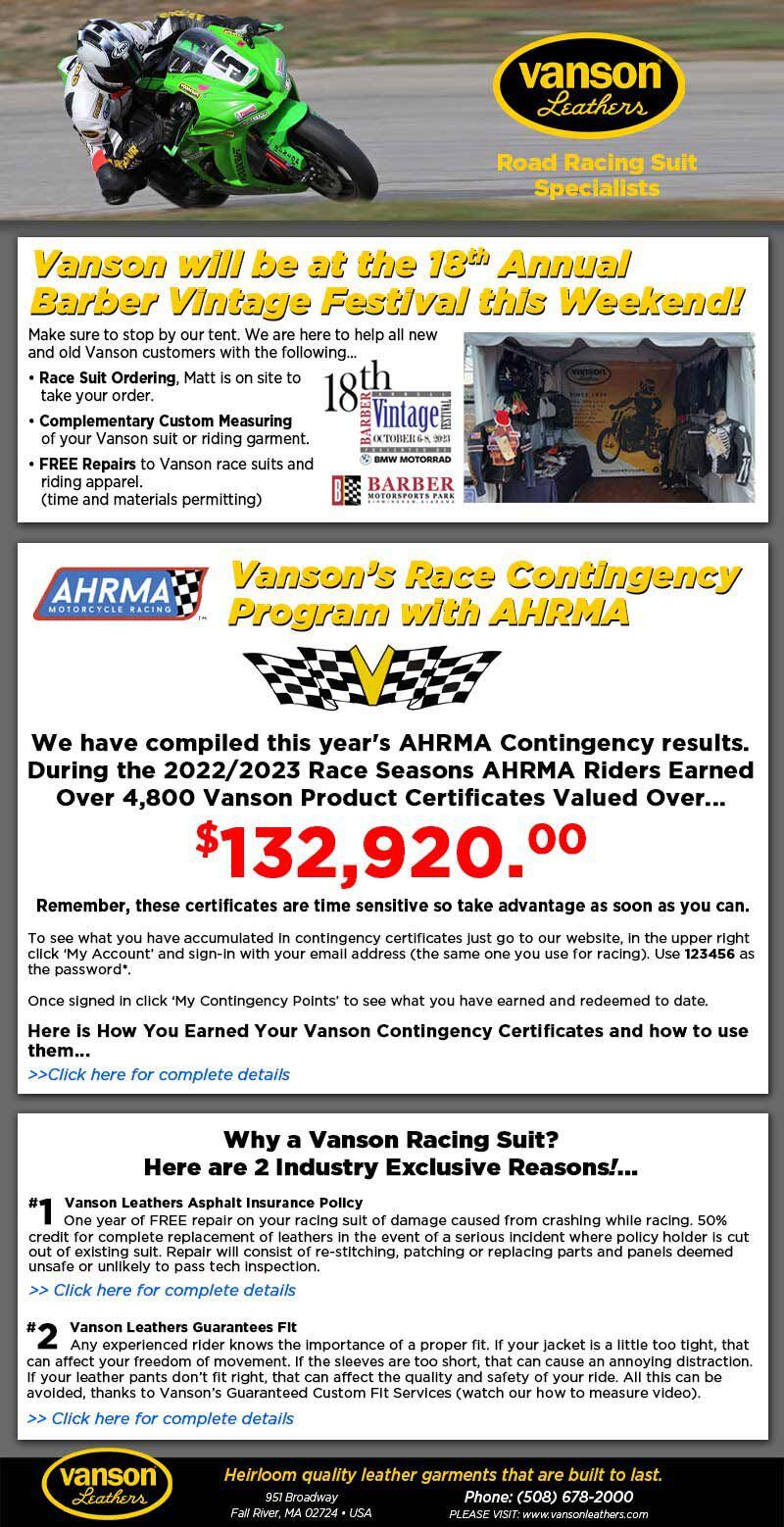
Going to Barber this weekend? Stop by the Vanson tent! (Vanson/)For more information: barbermuseum.org/barber-vintage-festival
-
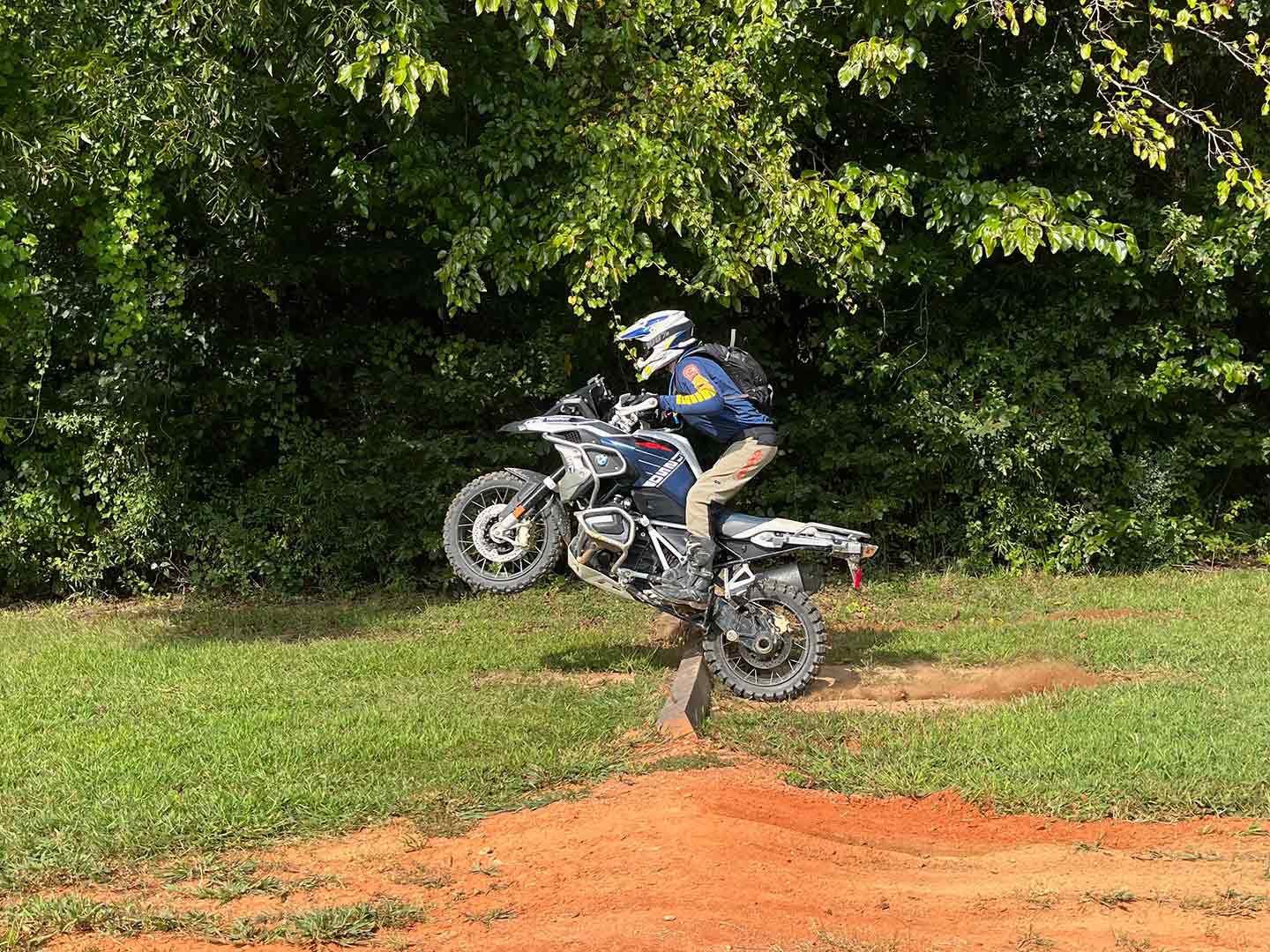
Lofting the front wheel over an obstacle at the BMW Performance Center. (BMW Performance Center/)“The qualifier is not made to be easy,” says Ricardo Rodriguez, lead motorcycle instructor at the BMW U.S. Rider Academy. “It’s going to be challenging. We’re trying to find the best three riders to represent America. This is not a cake walk.”
To expose riders to what they can expect at the Trophy Qualifier and help them develop their own game plan for training, the U.S. Rider Academy offers a Trophy Prep course at the BMW Performance Center in Greer, South Carolina, where the qualifier is also held. The two-day class not only exposes riders to an environment similar to what they’ll encounter in the qualifier, but gives them an idea of the qualities they’ll need to possess if they’re to represent their country in the International GS Trophy final—and it’s not all about riding skill.
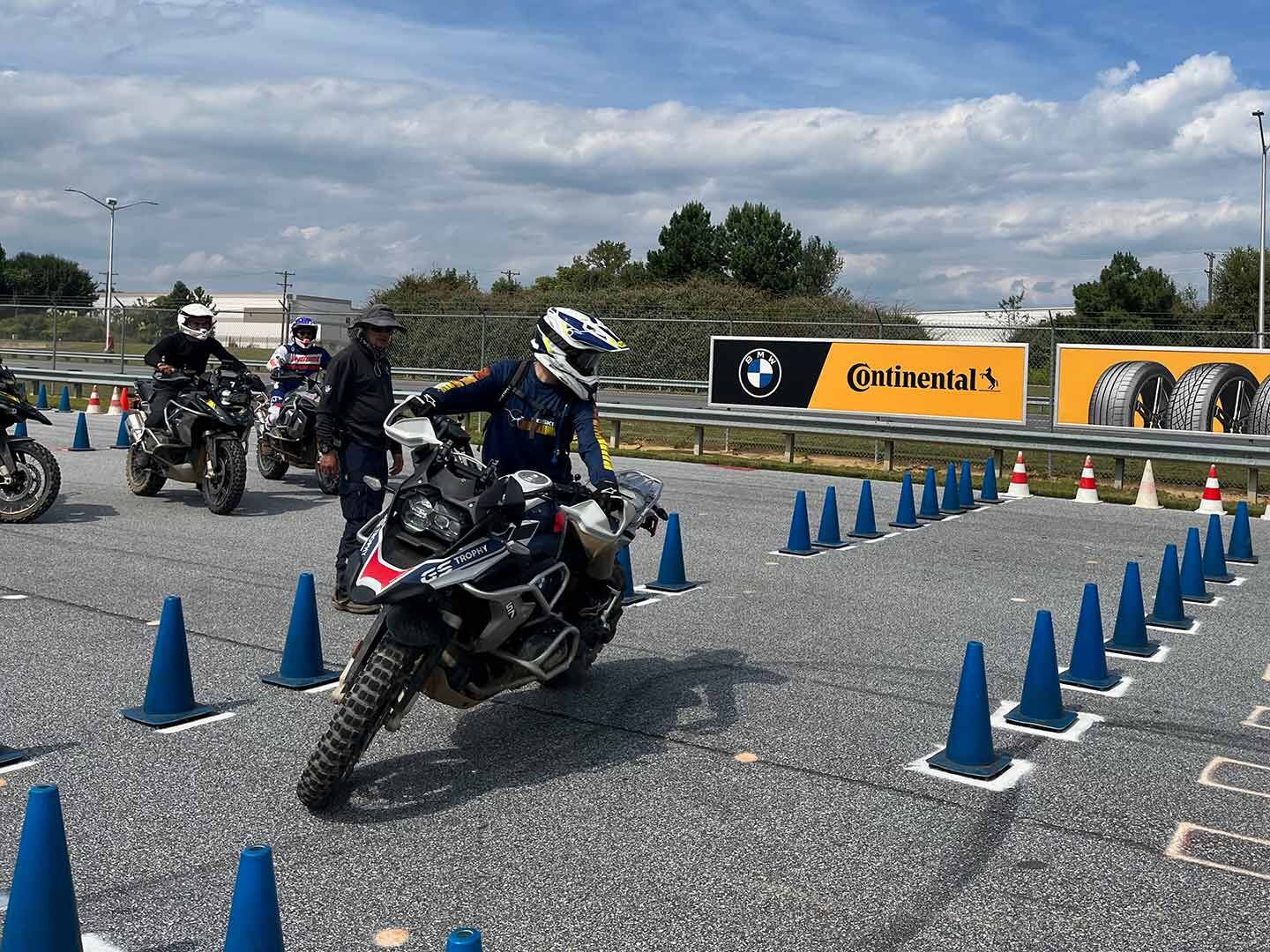
Doing police-rodeo-style cone courses will be part of Trophy Qualifying. Here, the author successfully negotiates the “Head and Shoulders” course. (BMW Performance Center /)“The class is not intended to teach you how to be an off-road rider to get to the Trophy Qualifier,” Rodriguez says. “It’s intended to help build team camaraderie and encourage thinking outside the box. It’s going to let you know where you are physically, mentally, and where your riding ability is at.”
As the summer wound down, and with only three weeks before the qualifier, I made my way to South Carolina to attend the season’s final class. With so little time before my competitive debut, I wouldn’t have a lot of time to practice what I learned, but I hoped the experience would act as a dress rehearsal, that some familiarity with the environment would ease my nerves at the actual event. After two days of enduro riding, physical tests, and team challenges, I gained perspective on the progress I’ve made from two months of training. More than that, the class gave me my first inkling that the GS Trophy is about so much more than individual achievement.
As 13 of us, all astride rough-and-ready 1250 GSs borrowed from the Performance Center, rode toward the off-road area, the low thrum of a dozen other boxers reverberated through my helmet, into my bones, and out through the handlebars. Straightaway, it was clear: I wasn’t the only one out there.
Related: 2022 BMW GS Trophy Daily Report
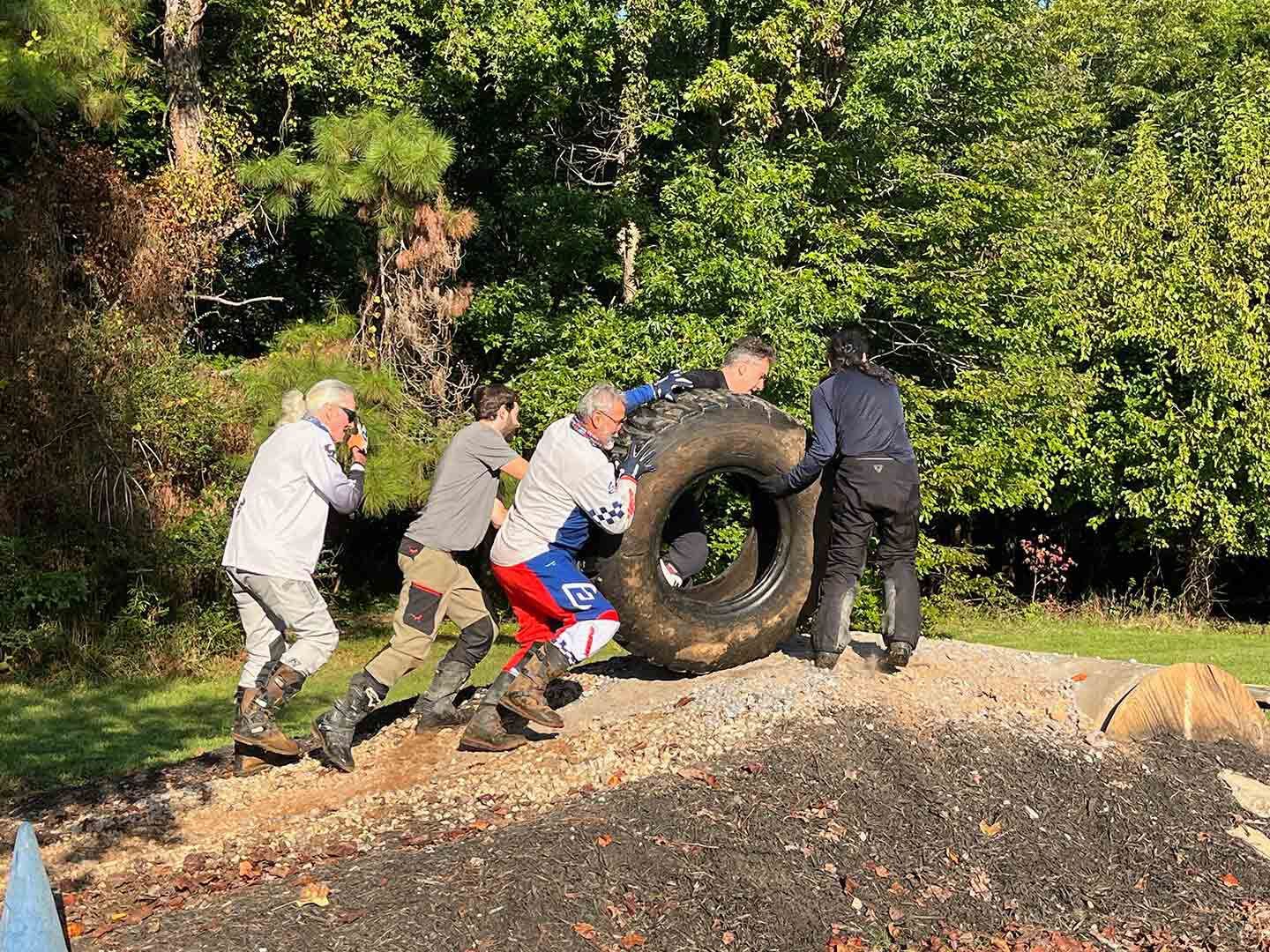
Physical challenges test strength and endurance. (BMW Performance Center/)Those accustomed to riding in adventure rallies or in large groups may not be phased, but for those of us who typically ride solo or with a few friends, there’s something nerve-wracking about being surrounded by all those bikes and following a group of strangers around unfamiliar terrain. There’s a lot of input for the mind to process all at once. The butterflies in my stomach were trying to fly out of my chest as I tried to calm my beating heart. But pretty soon I was thinking: “The guy in front of me just made it up that hill, so I can too.” And I did. I stopped thinking too much. I relaxed on the bars. And with a few successes beneath the tires, I was on my way.
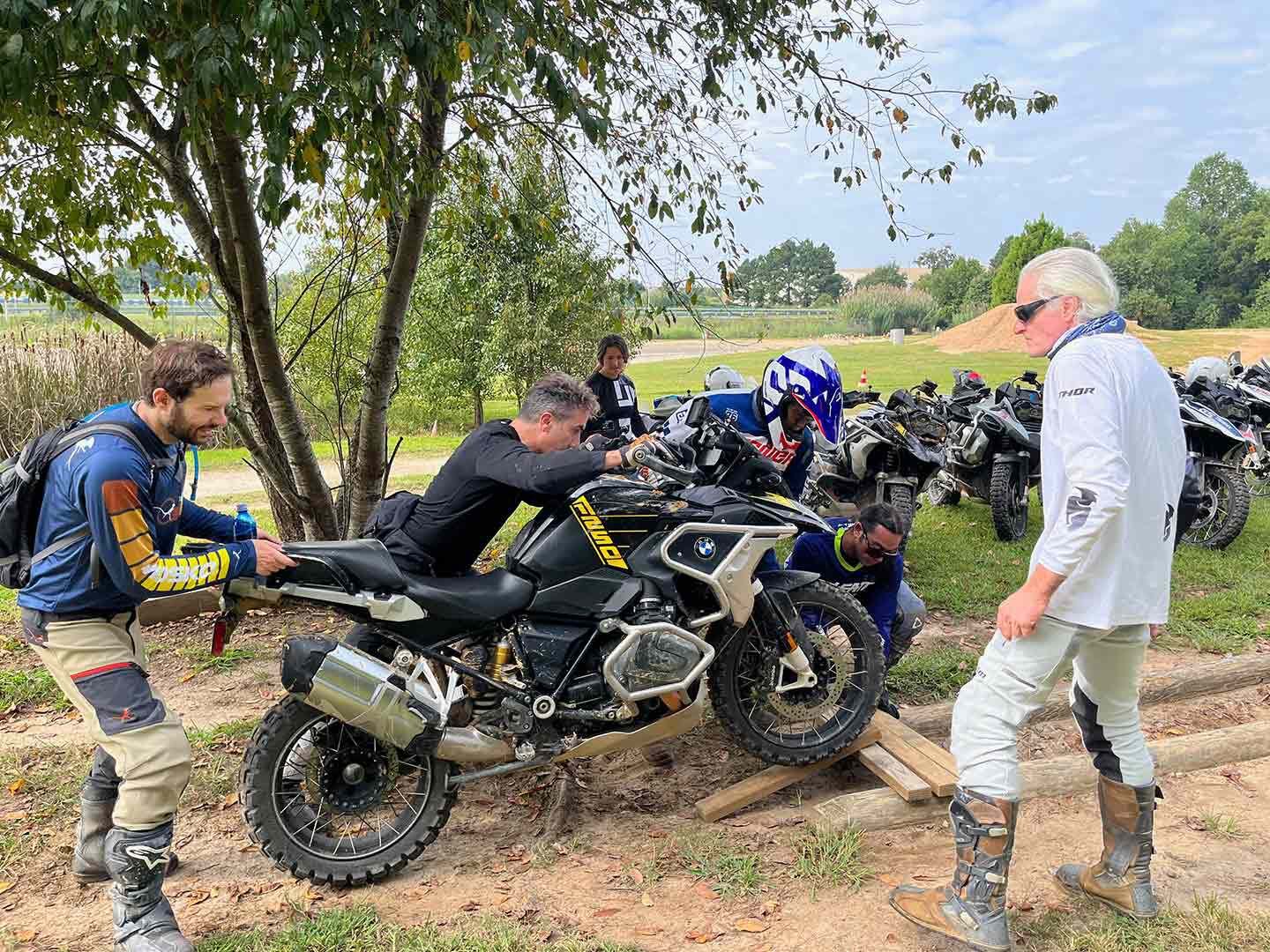
Using four wood planks as a bridge. Communication was critical to get the GS across without dropping a wheel in the gap. (BMW Performance Center/)After that, I began to revel in being out there on a GS. Since the last week of July, my personal motorcycles have gathered dust in the garage while I’ve been practicing slow-speed maneuvers on my GS press bike. I haven’t put a lot of miles on it, but if the odometer measured hours instead of miles (here, the comparison to a tractor is coincidental), it would paint a picture of a full riding season. My familiarity with the GS—its low CG, the clutch’s progressive engagement zone, the abundant low-rpm torque—is a refuge. Irrespective of its ultimate capability, the GS’ super power is the way it facilitates riders’ conquest of their own ultimate performance. Its ease of use is a bulwark against self-doubt and stress, which is especially useful considering the Trophy Prep course emphasized the importance of being able to perform in a stressful environment.
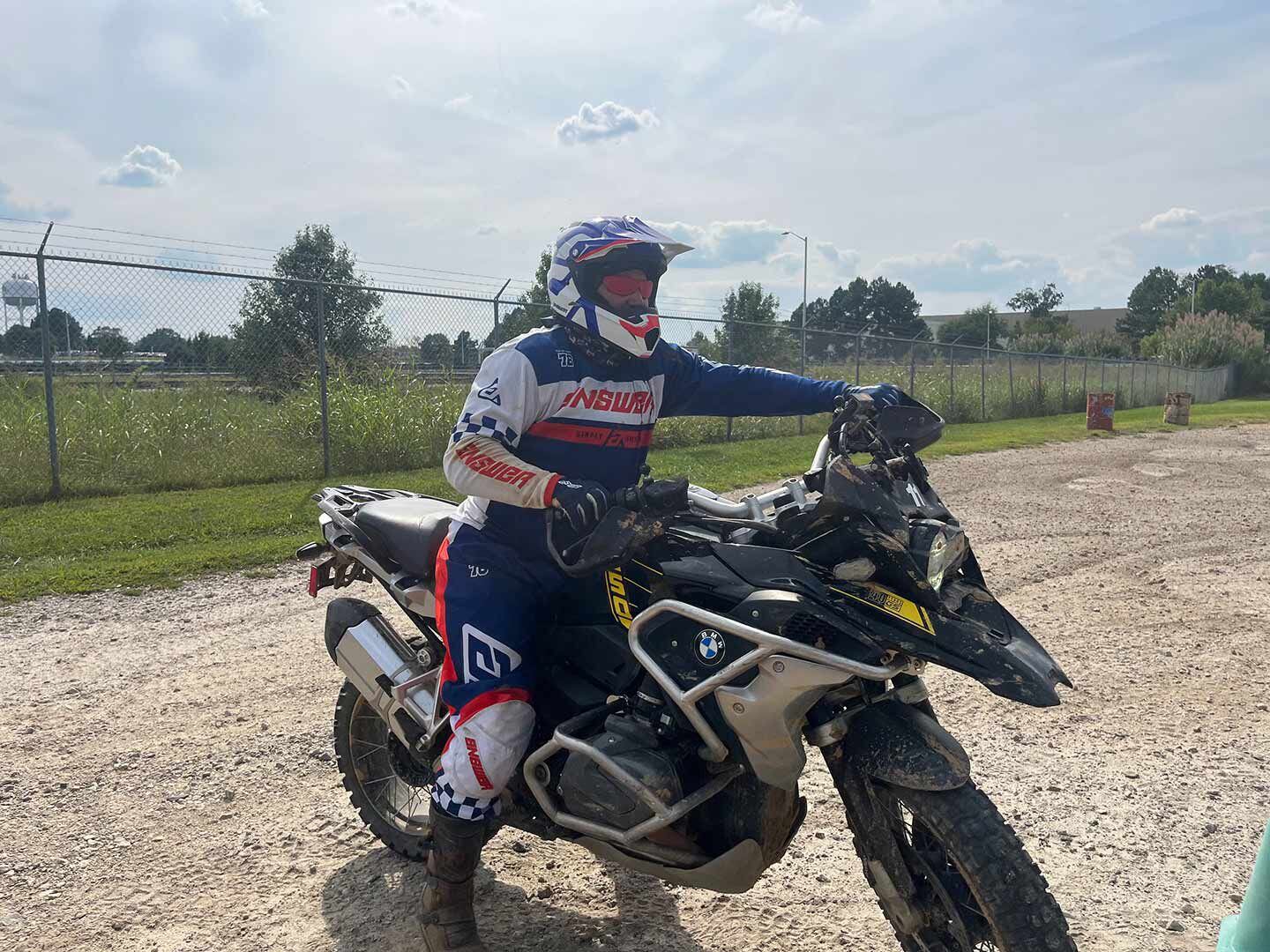
Trophy Prep participant, Mark Guerrero, in the challenge “The Blind Leading the Blind.” Guerrero had to ride through a cone course blindfolded with only the voices of his teammates to guide him. (BMW Performance Center/)To describe the correlation between stress and performance, psychologists use the Yerkes-Dodson Law, which states that human performance is at its peak when workload (or stress) is neither too low nor too high. As anyone who’s ridden a motorcycle knows, riding at a spirited pace on the street or track or pushing the envelope on technical off-road terrain boosts mental and physiological stimulation; a sympathetic bump in our own performance keeps us coming back for more. However, as the difficulty and unfamiliarity of a task increases, stress increases, and our performance suffers as a result. This is what we mean when we say we’re riding over our heads.
While our performance potential is inextricably tied to skill level, the Yerkes-Dodson Law conveys the significance of stress, and suggests that it’s a double-edged sword. Bringing the right attitude to one’s riding can curtail the harmful effects of stress, while losing one’s head can defeat even the most technically proficient rider.
Rodriguez says: “You get people who say they want it, but then they get super frustrated on the bike really quickly and they’re quick to quit. I’ve had folks here who will go work on a skill set and five minutes in they’re throwing the motorcycle on the ground and cussing. That type of personality and that type of attitude is not conducive to [performing well] here.”

The author carries a full water jug across a log as part of a physical challenge. (BMW Performance Center/)I’m far from being a zen master, but during the Trophy Prep course, when my early-morning nerves dissipated relatively quickly, I realized that I’ve started to cope with stress better. Two months of training has definitely strengthened my mind-over-matter muscle. When I dropped the bike, it didn’t diminish my resolve. I was quick to regain focus and leave my mistakes behind me. Maybe that’s the silver lining of dropping it so regularly while practicing.
While the prep course is not a skill-building course like other schools offered at the Rider Academy, we did briefly work on power slides, brake slides, and lofting the front wheel—skills that Rodriguez says are necessary in Qualifying and that BMW would prefer people have professional coaching in before trying them for the first time in the competition. I’ll confess that I’m not good enough yet to do a complete 180-degree turn using a brake slide and power slide, but that’s pretty high-level stuff for most riders. Still, I’m getting there and at least I know how to begin practicing efficiently.
While my riding skills have improved and I’ve become better at managing stress, come qualifying, I suspect I’ll be cursing the creators of the challenges when they require moves that exceed my abilities. At least I won’t have far to yell.
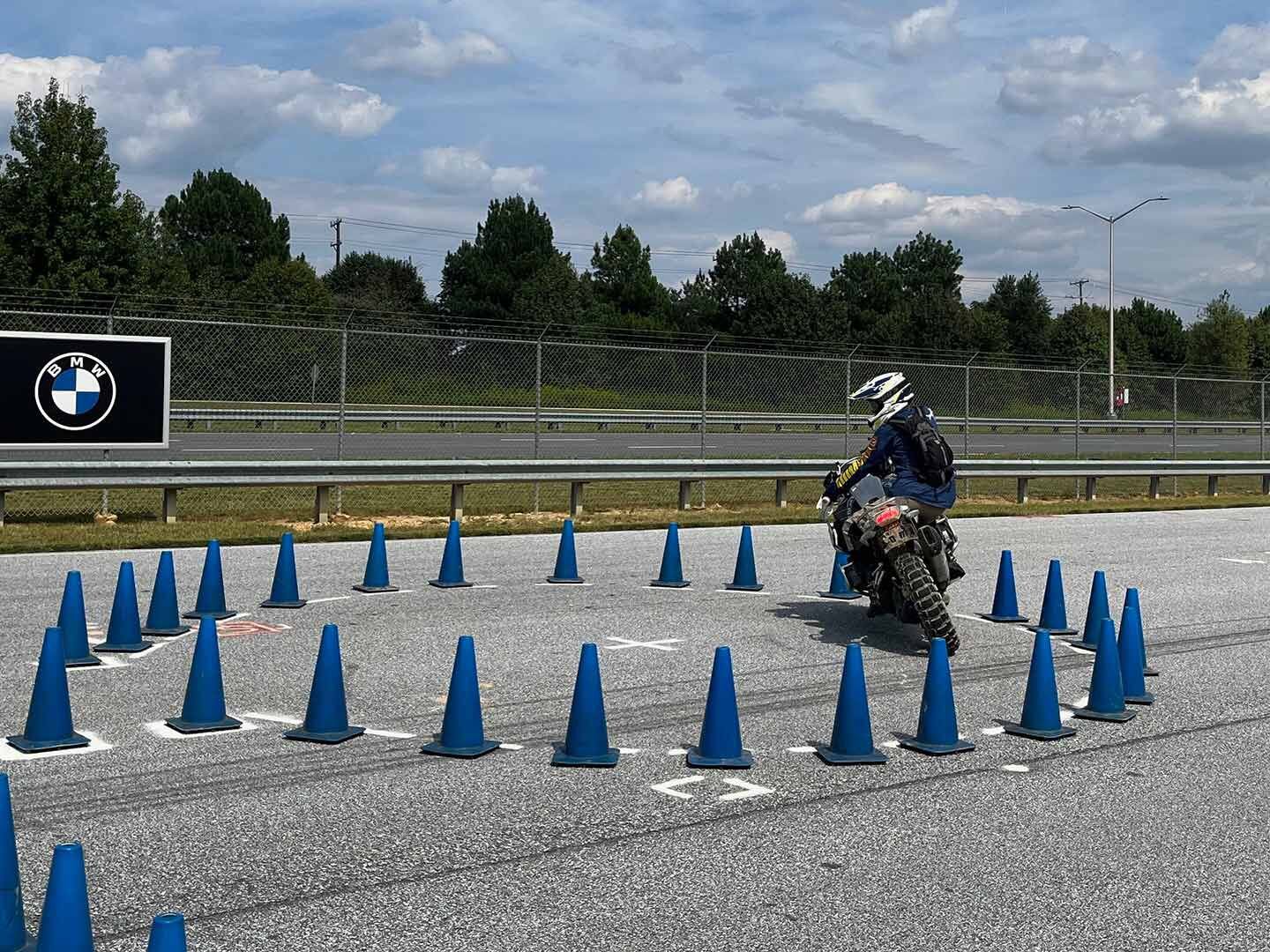
Traversing the head of the “Head and Shoulders” cone course. (BMW Performance Center/)“I love to create challenges,” Rodriguez says. “The semi-final is something I put together using elements from the Germany action pack. They give us a game plan and I pick ‘𝑥’ amount from there and then I go out on the property and figure out where it fits. The 21 challenges you’ll be doing out there [during qualifying] are prescribed from Germany, but I created some fun ones that you will be challenged by.
“With the Trophy prep class I take a lot more liberty on how I use the skill sets. I talk to the previous Trophy teams to learn where they did well, where they did poorly, and what challenges they saw. Then I design the prep course to have elements like they had in the final. It’s just to push people.”
Some of Rodriguez’s challenges have little to do with riding skill. For instance, “Hold My Beer,” a challenge he devised after being inspired by a bar game, is more about teamwork and honing communication skills.
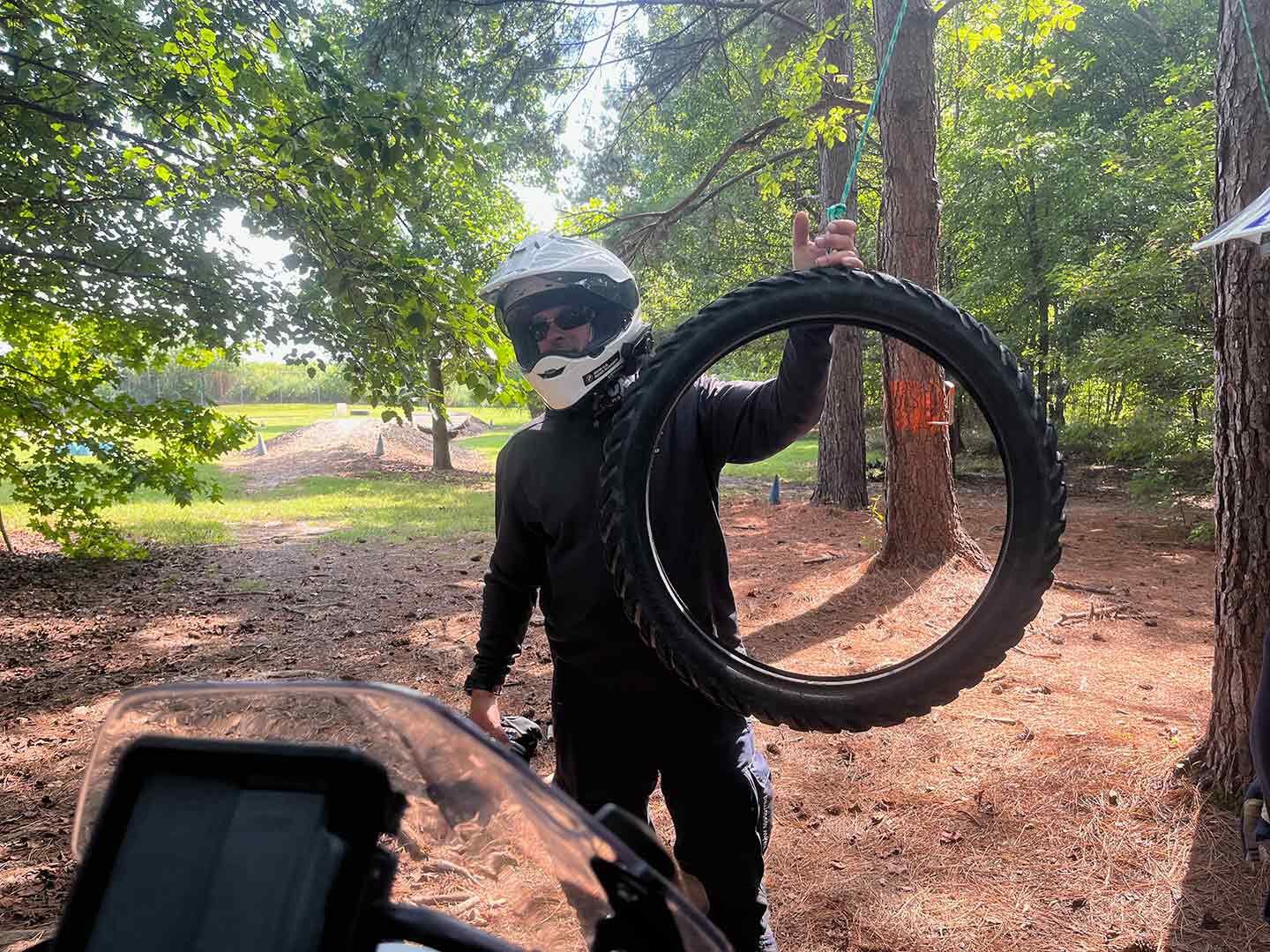
Rodriguez explaining “Hold My Beer,” a GS-mounted version of a ring toss–style bar game. (BMW Performance Center/)For much of the two-day course, I was part of a five-man team. We cheered each other on, looked out for each other, and helped pick up each other’s dropped bikes. Working together to transform a personal goal into a corporate goal became the most rewarding part of the entire experience.
Other than a half-day training with Shawn Thomas and Louise Powers and two days with Ben Phaup, my Trophy journey has been a solitary one. It’s been me leaving my family on the weekends to get in some practice. It’s been me and the GS in deserted parking lots. It’s been me waking up in the middle of the night, my mind racing through cone courses.
No matter how prepared I am—or am not—for qualifying, I know my experience is about more than just me. Qualifying is, after all, about forming a team—even, I suspect, for those who don’t earn a spot on Team USA. As qualifying approaches, there’s a lot to anticipate. Most of all, I’m excited about riding with my Trophy Prep classmates again, cheering them on, and celebrating their successes. I’m more prepared than ever.
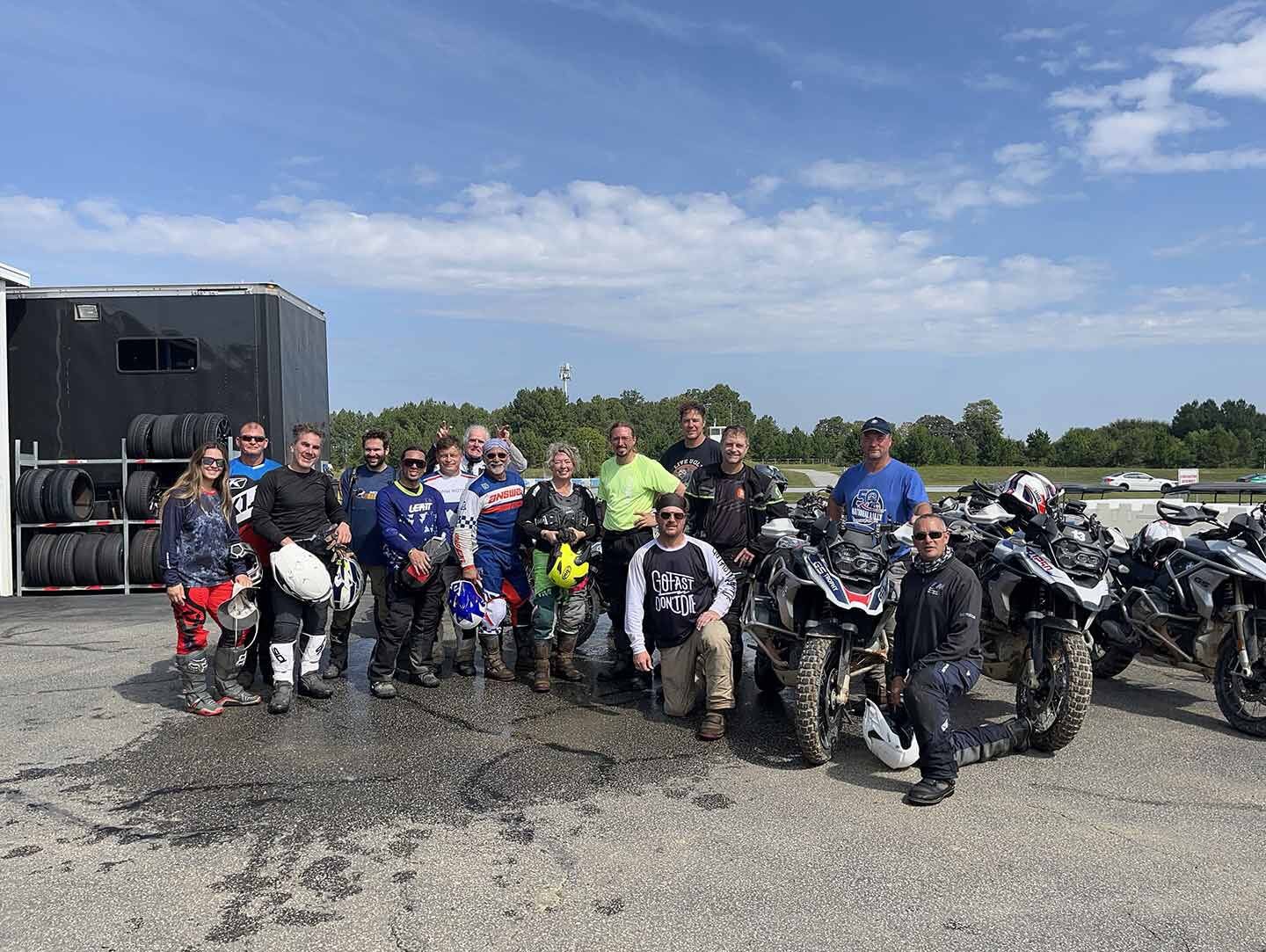
The Trophy Prep class. (BMW Performance Center/) -
The race-inspired model commemorates Iván Cervantes’ victory in the 2022 Baja Aragón
-
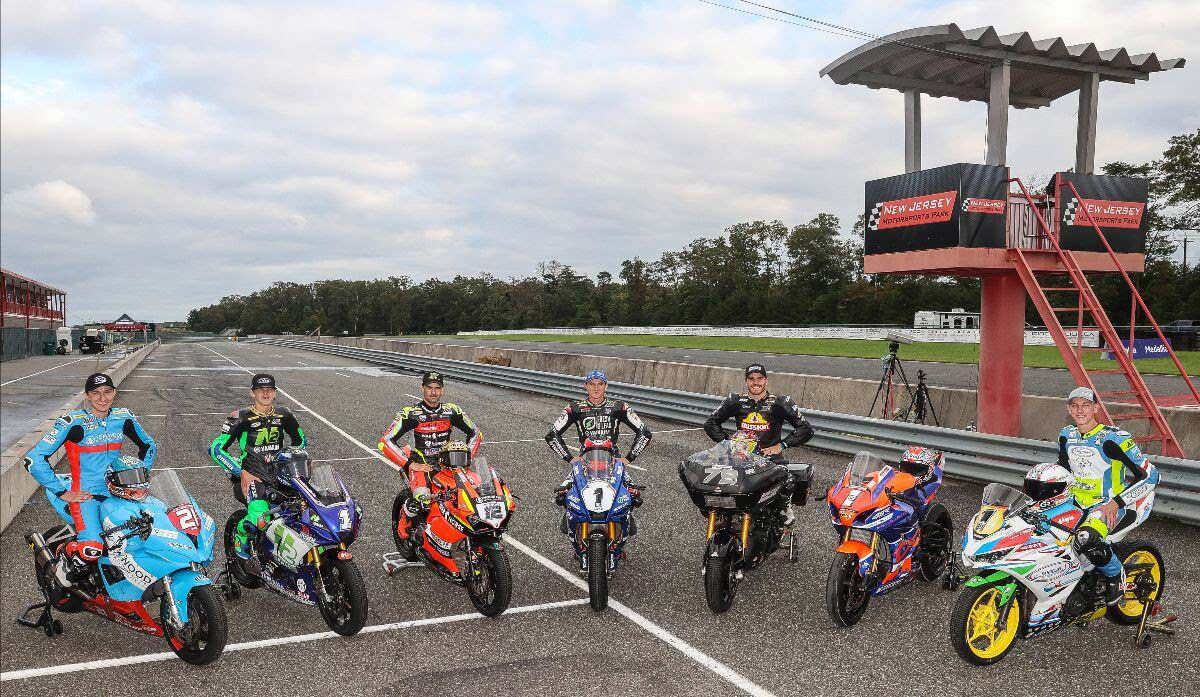
MotoAmerica 2024: More Races, More Action Headlined By 20 Superbike Races (MotoAmerica/)MotoAmerica, North America’s premier road racing series, is pleased to release its tentative 2024 MotoAmerica Championship schedule with eight classes set to battle for titles, including 20 Superbike races held over nine rounds, two additional Mission King Of The Baggers races, the Daytona 200, and a return to Mid-Ohio Sports Car Course after a 10-year hiatus.
Hayden Gillim Crowned As 2023 Mission King Of The Baggers Champion

Hayden Gillim Crowned As 2023 Mission King Of The Baggers Champion (MotoAmerica/)With just two season championships left to be decided on the final day of the 2023 MotoAmerica season, ironically, the Mission King Of The Baggers Championship ended in a similar fashion to how the REV’IT! Twins Cup Championship ended.
Only seven points separated Vance & Hines Mission Harley-Davidson teammates Hayden Gillim and James Rispoli going into race two at New Jersey Motorsports Park. But the showdown never really materialized because Rispoli ran off the track while leading early in the race on the wet-but-drying track. Although Rispoli didn’t crash, the off-track excursion put him well back in the pack and he ended up seventh.
JD Beach Wins Superbike Finale At NJMP
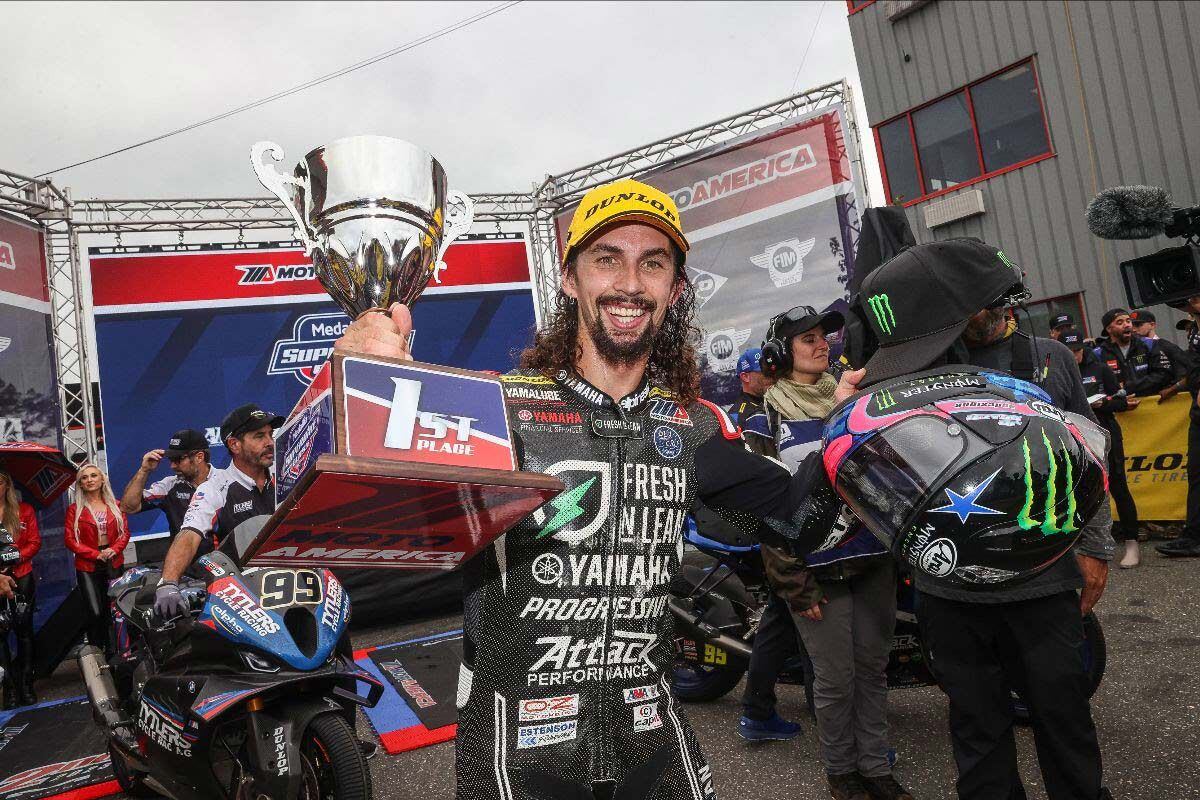
JD Beach Wins Superbike Finale At NJMP (MotoAmerica/)JD Beach was the master of iffy track conditions in the series finale of the MotoAmerica Medallia Superbike Championship at New Jersey Motorsports Park with the Fresh N Lean Progressive Yamaha Racing rider controlling the final race of the season from the sixth of 16 laps to score the second MotoAmerica Medallia Superbike victory of his career and his first in four years.
Off Track Podcast: MotoAmerica COO Chuck Aksland Discusses The 2024 Schedule
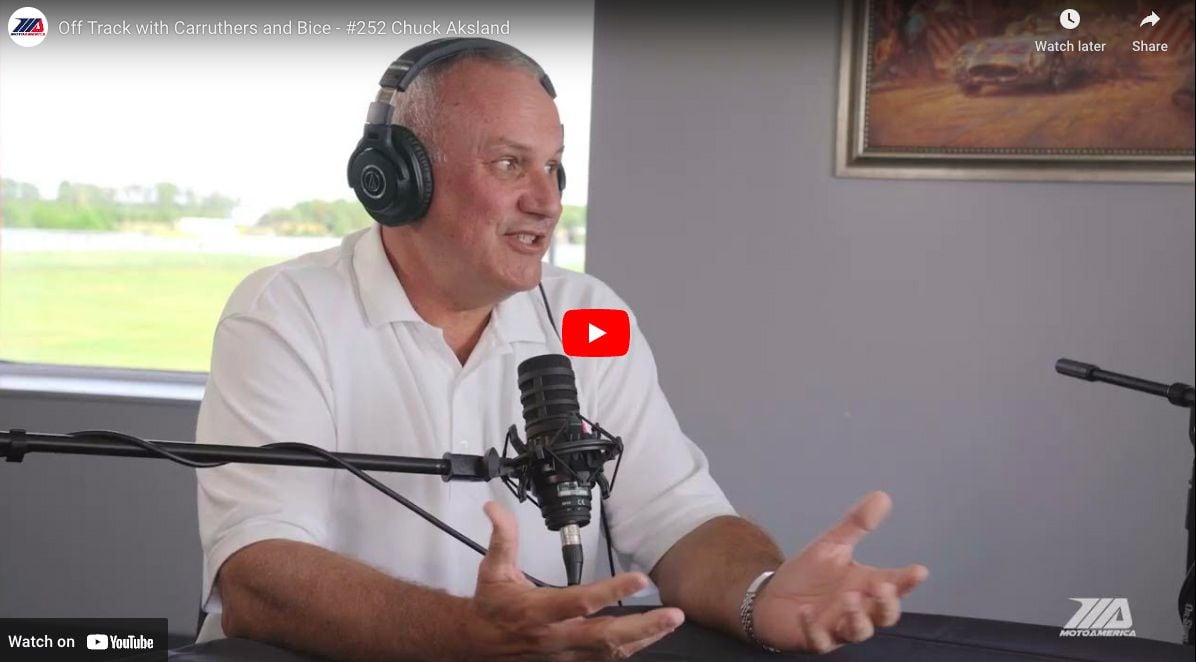
Off Track Podcast: MotoAmerica COO Chuck Aksland Discusses The 2024 Schedule (MotoAmerica/)The 2024 MotoAmerica Championship will be here before we know it and we caught up with MotoAmerica COO Chuck Aksland, the man behind the schedule, to chat about the addition of Mid-Ohio and more on this episode of Off Track With Carruthers And Bice.
Charging Forward: Energica Proves Itself In MotoAmerica
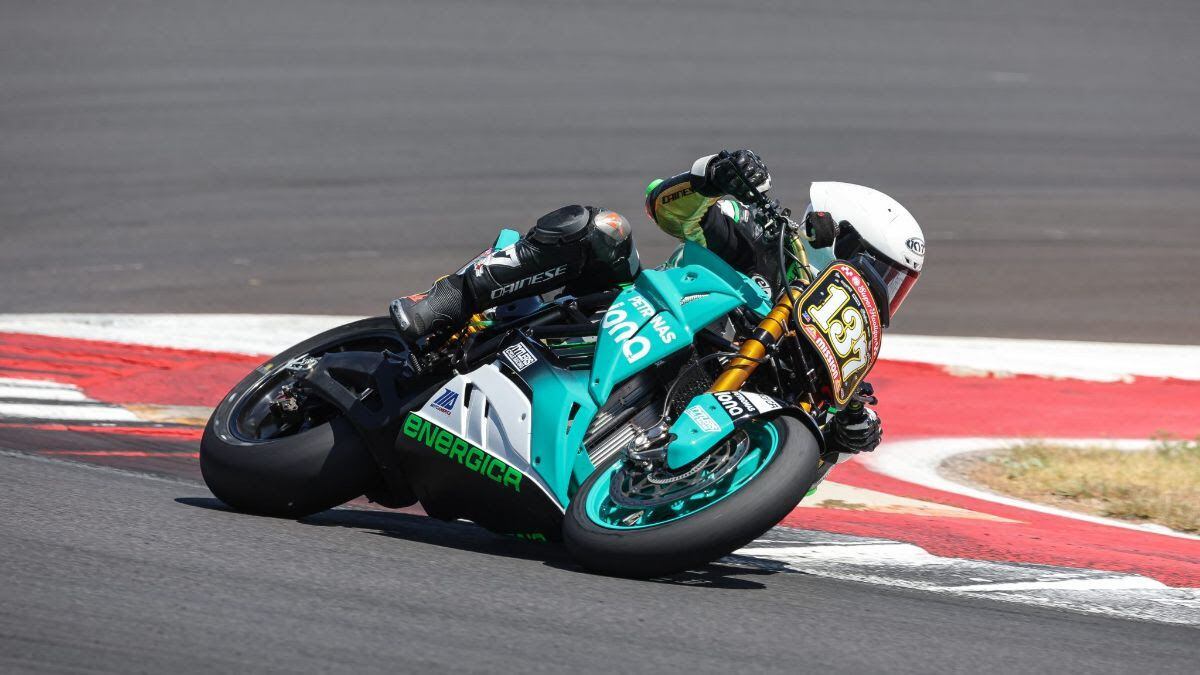
Charging Forward: Energica Proves Itself In MotoAmerica (MotoAmerica/)There were quite a few firsts in the MotoAmerica series this past season. Warhorse HSBK Racing Ducati NYC rider Xavi Forés became the first MotoAmerica rider to win eight Supersport races in a row, and he also did it as a MotoAmerica rookie, which was another first. Squid Hunter Racing’s Josh Hayes became the first rider to win 87, and then 88, AMA-sanctioned road races. And Tytlers Cycle Racing Kawasaki rider Kayla Yaakov became the first female in the MotoAmerica era–and the second female in AMA history–to reach the podium in a Supersport race. Those were MotoAmerica firsts, but what about world firsts?
Yup, we had two of those this past season, too.
Champions Crowned In New Jersey Motorsports Park Mini Cup Finale
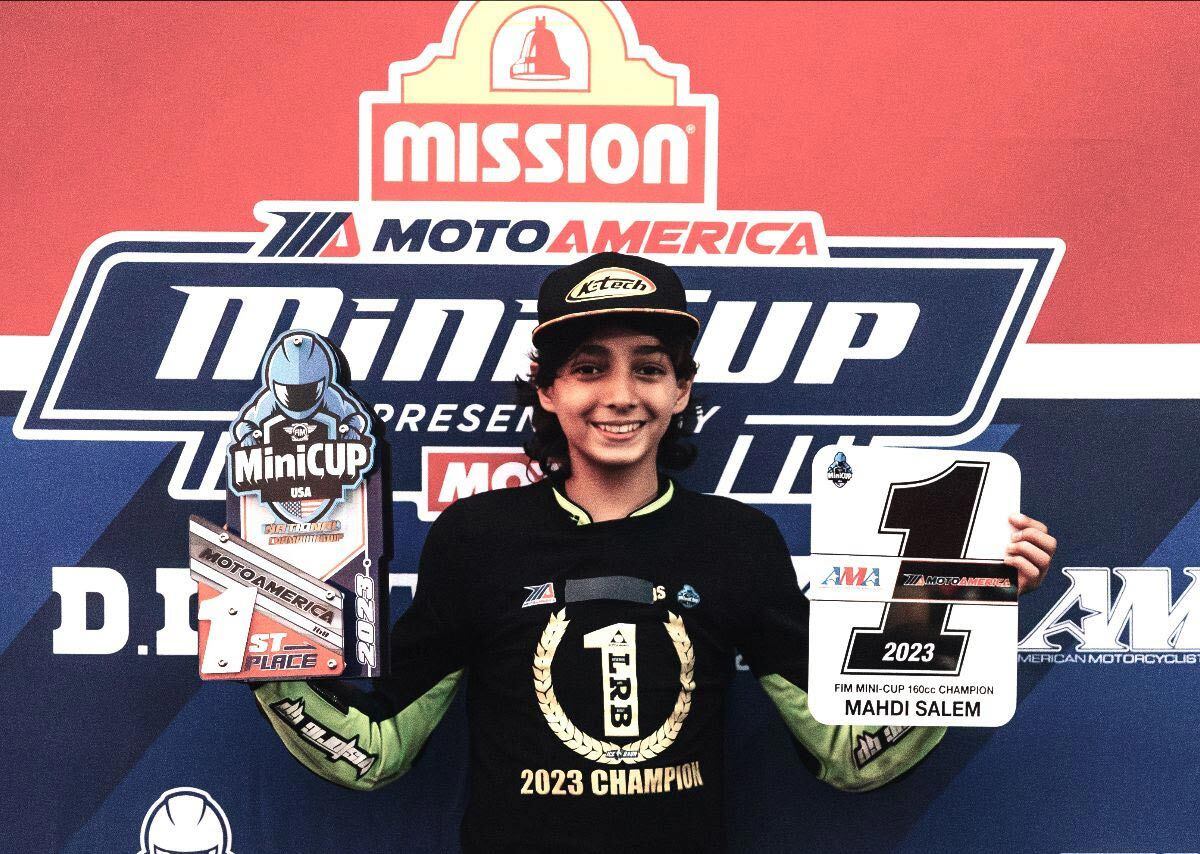
Champions Crowned In New Jersey Motorsports Park Mini Cup Finale (MotoAmerica/)The FIM Mini Cup Championship came to a thrilling climax on Friday afternoon at New Jersey Motorsports Park with Historic GP’s Mahdi Salem taking victory in both of the Ohvale 160 classes to take the title over Stadler America’s Nathan Gouker by just a single point. A day later, champions were crowned in all classes after racing concluded on a wet NJMP racetrack.
Welcome Back, Mid-Ohio Sports Car Course
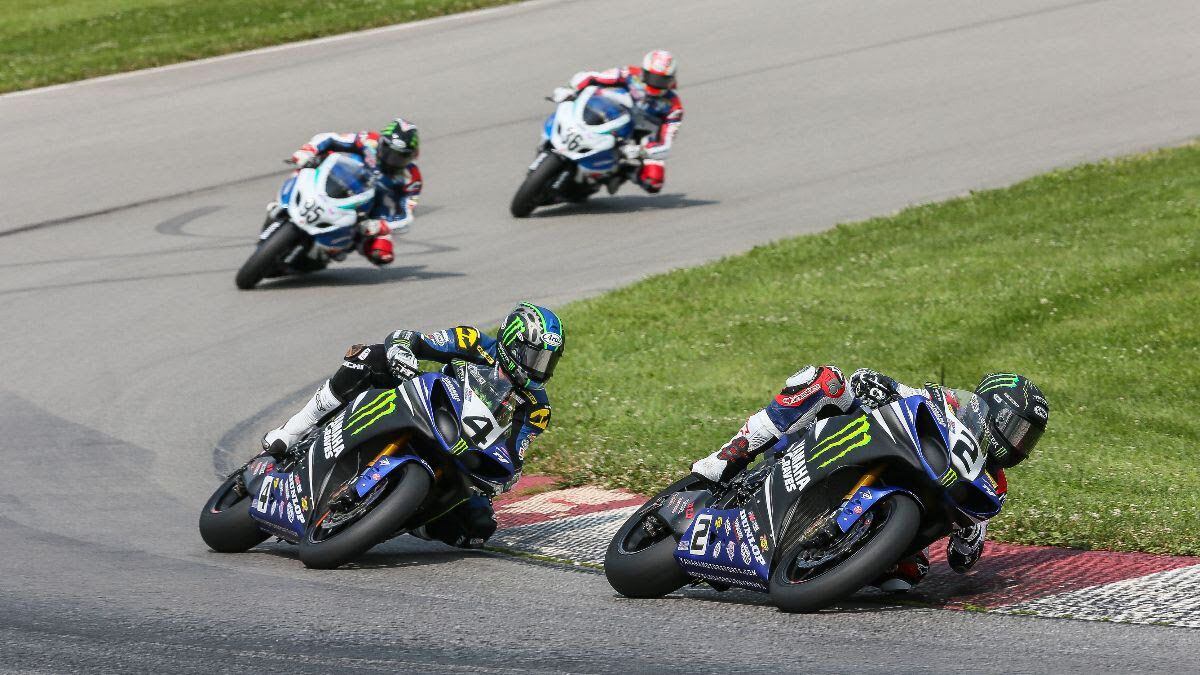
Welcome Back, Mid-Ohio Sports Car Course (MotoAmerica/)MotoAmerica, North America’s premier motorcycle road racing series, is thrilled to announce that it will bring a round of the MotoAmerica Championship to the Mid-Ohio Sports Car Course in Lexington, Ohio, August 16-18, for what will be the seventh round of the 2024 MotoAmerica Superbike Championship.
Forés Wraps Up Supersport Title At COTA
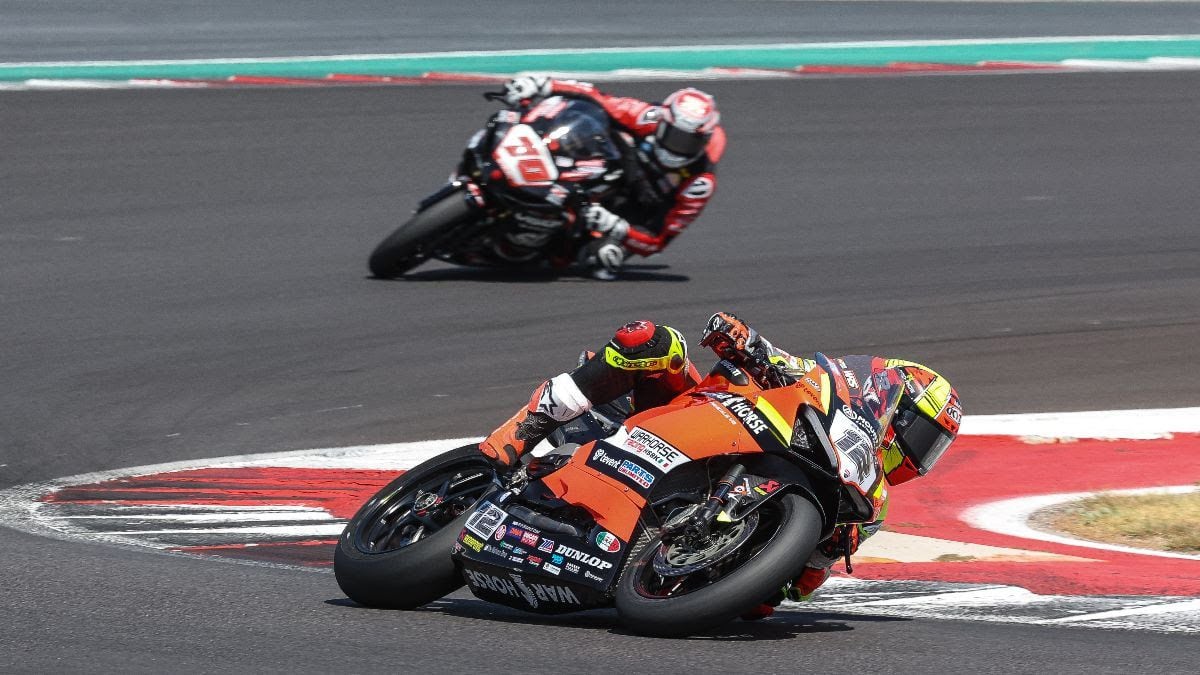
Forés Wraps Up Supersport Title At COTA (MotoAmerica/)After Warhorse HSBK Racing Ducati NYC’s Xavi Forés started the season with a record-breaking eight wins in a row, which set a new record in the Supersport class, the Spaniard’s victory tally suddenly came to a halt at Brainerd where he finished both races off the podium. And then, at Pittsburgh, he finished second in both races. Well, on Saturday at Circuit of The Americas in Austin, Texas, Forés returned to his winning ways with a championship-clinching victory.
-
More torque, a fairing redesign, a new windscreen, and more grace the 2024 range.
-
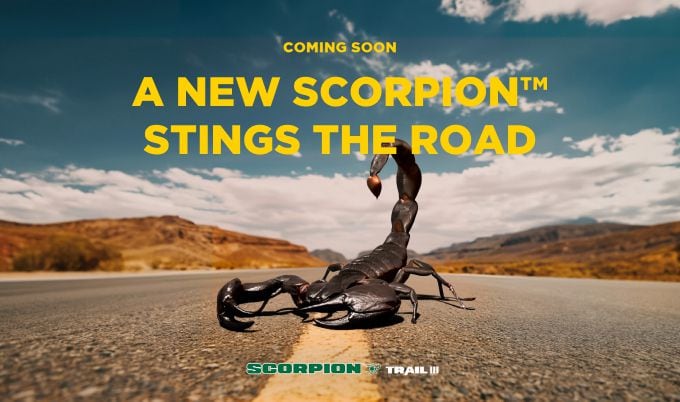
Pirelli SCORPION Trail III is the sportiest tyre ever on asphalt from the SCORPION range. (Pirelli/) Pirelli Press Release:
SCORPION Trail III is the new enduro street tyre from Pirelli developed for maxi enduros that combine excellent performance on asphalt and in light off-road usage. The tyre is completing its final and rigorous outdoor tests and will be on sale to the public starting from January 2024.
In recent years the enduro street segment has become one of the most important on the market and Pirelli has chosen to develop tyres with increasingly sporty road performance but with an off-road look, with particular attention to ease of use in different road conditions.
Pirelli SCORPION Trail III in fact presents an aggressive tread look behind which lies strong technological innovation. It takes advantage of the most recent technologies, materials, and processes, as well as the knowledge acquired by Pirelli in the ‘big enduro’ segment, to respond to the most demanding market expectations by offering first-rate road qualities. Compared to its predecessor SCORPION Trail II, the new tyre guarantees significantly improved road handling and sportier behaviour thanks to excellent grip, as well as better performance in the wet. Furthermore, SCORPION Trail III ensures stability even with full load and can best interact with the machine’s electronic systems. Finally, as regards to off-road riding, abrasion resistance has been significantly improved, which is an important parameter for those who love venturing on dirt roads.
SCORPION TRAIL III is the perfect tyre for tackling fun asphalt routes full of curves and is dedicated to all those motorcyclists looking for a product with a tread design dedicated to big enduro bikes on the road with excellent performance, both in dry and wet conditions, combined with sporty behaviour and good mileage.
The target machines of SCORPION TRAIL III are those starting from medium displacements and above (over 400cc) which are fitted with 19- or 21-inch front tyres; therefore, motorcycles capable of tackling long journeys and excursions with light off-road sections. During 2024, 17-inch front and rear equipment dedicated to crossovers will also complete the range.
The choice to identify this new product with the SCORPION brand is in line with the history linked to this range of Pirelli products, which has always been a protagonist in off-road and in two- and four-wheel competitions such as the Enduro and Cross-Country World Championship and the Motocross World Championship- in which the Pirelli off-road tyres have been leaders for 40 years with 81 world titles won.
-
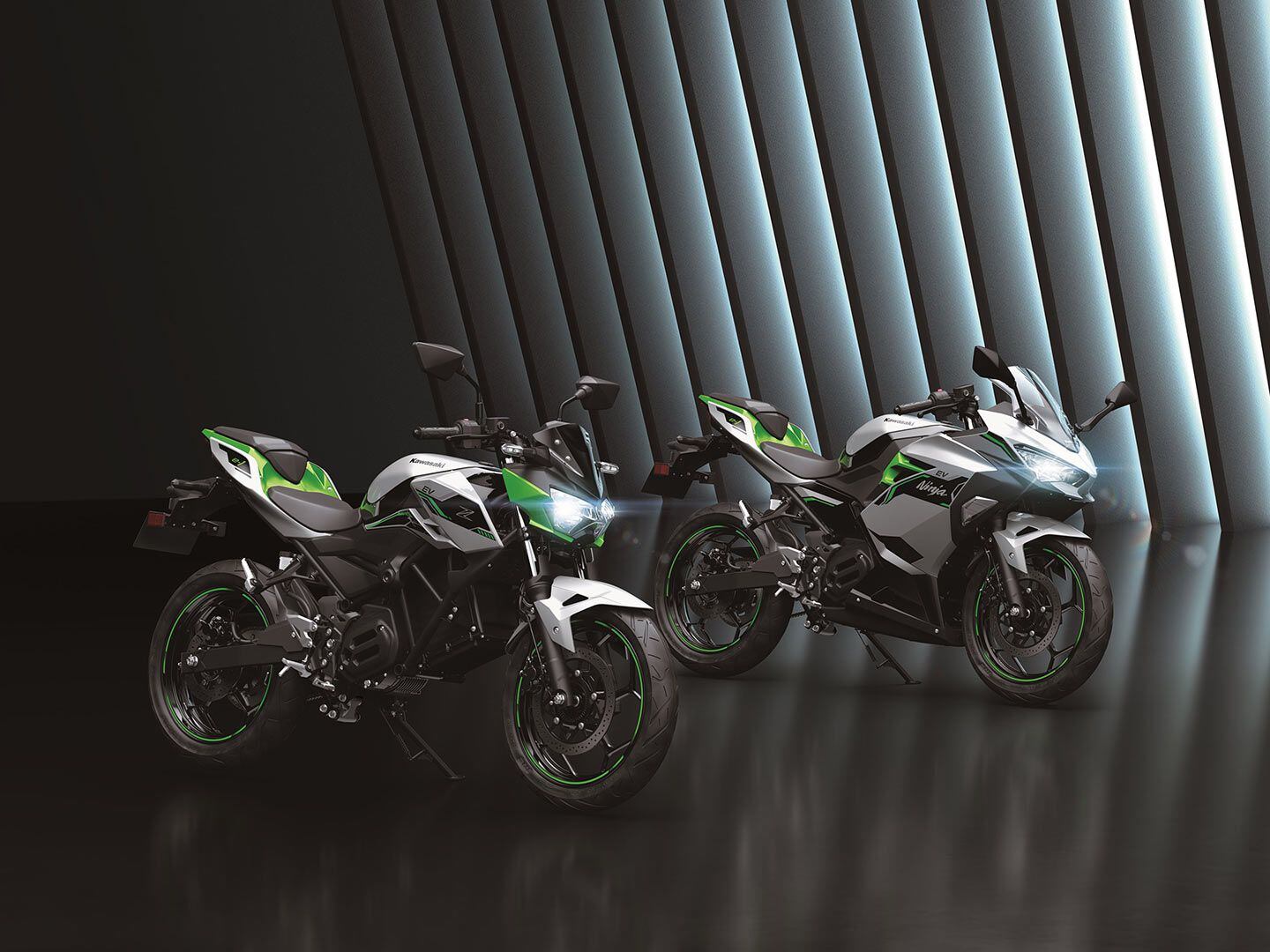
Kawasaki’s 2024 Ninja e-1 ($7,599) and Z e-1 ($7,299) electric motorcycles. Kawasaki describes the bike as the lighthearted solution to urban commuting. (Kawasaki/)Kawasaki has been clear in its intention to bring electric motorcycles into its streetbike lineup as soon as possible and today it made good on that promise by announcing two all-new electric motorcycles: the Ninja e-1 and Z e-1. Designed for urban commuting, both bikes are loosely based on Kawasaki’s 400cc models but open the door to a completely different riding experience compared to their gas-powered counterparts.
Interestingly, Kawasaki goes as far as to mention the electric scooters and bicycles that have become increasingly popular over the years, saying, “These electric-powered motorcycles are the real deal and offer superior performance over an electric scooter or bicycle.” It’s no secret that Team Green, like all manufacturers, are intent on reaching new riders, and these two bikes are very much a part of that mission.
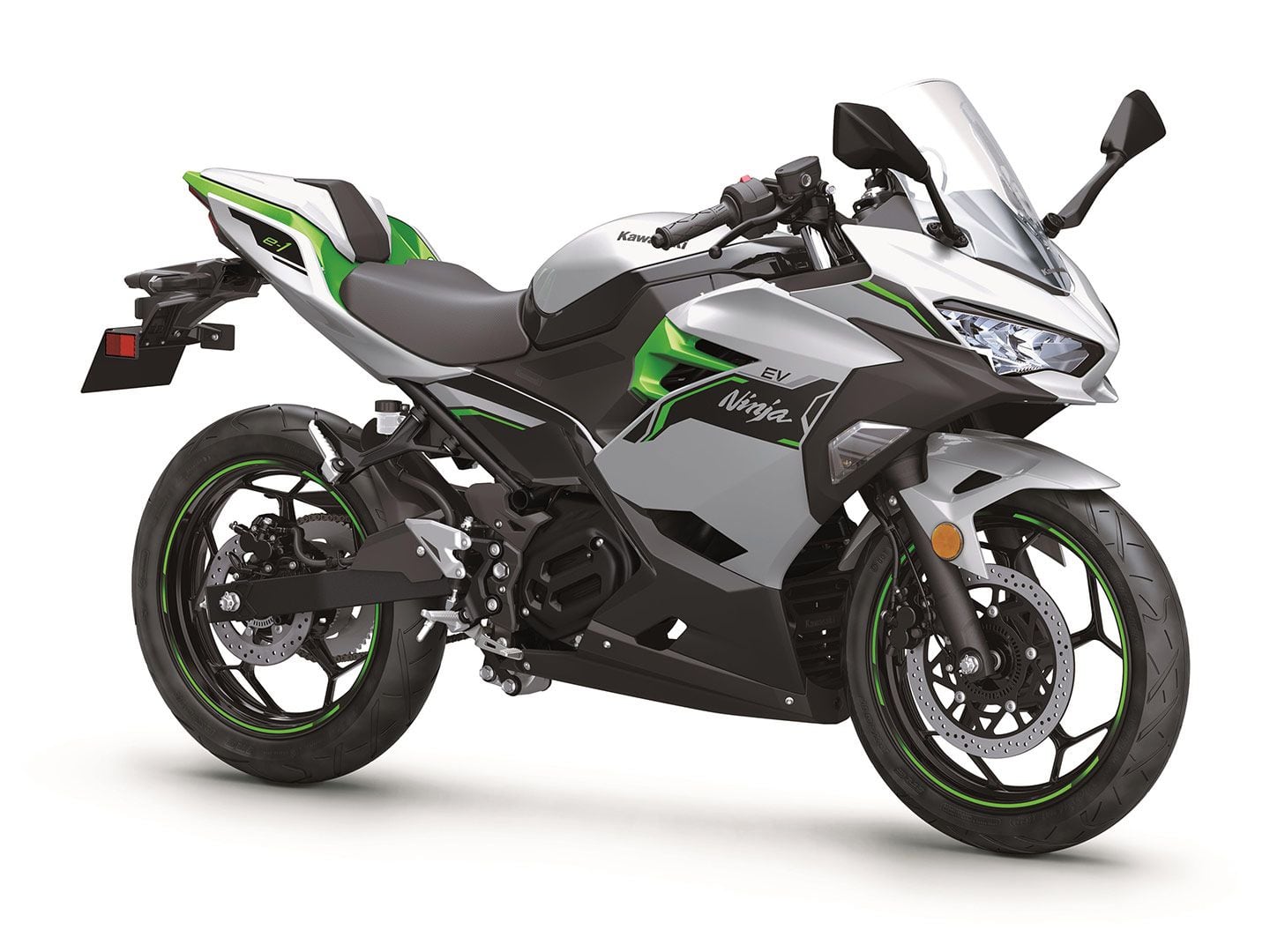
Kawasaki’s Ninja e-1 has a higher top speed when compared to the naked Z e-1—52 mph in Road mode and 37 mph in Eco mode. Top speed potential increases when using the e-boost function, which can be applied for up to 15 seconds at a time and brings top speed to 65 mph. (Kawasaki/)Electric Motor and Batteries
The Ninja e-1 and Z e-1 are powered by a brushless electric motor rated at 5.0kW, with a max rating of 9.0kW. Beyond the obvious benefit of being clean, quiet, and cool-running, Kawasaki says the motor is intended to offer strong low-end power and an immediate throttle response for quick acceleration. This is a key component to making the bikes perform well in stop-and-go riding situations around town.
Power is transferred from the motor through a primary reduction gear to the chain final drive. The single-ratio transmission and electric motor eliminate need for a clutch or shift lever, but Kawasaki has kept the rear brake foot-operated, rather than moving the lever to the now-bare left handlebar, where a scooter’s rear brake is and those of most e-moto bikes are typically found.
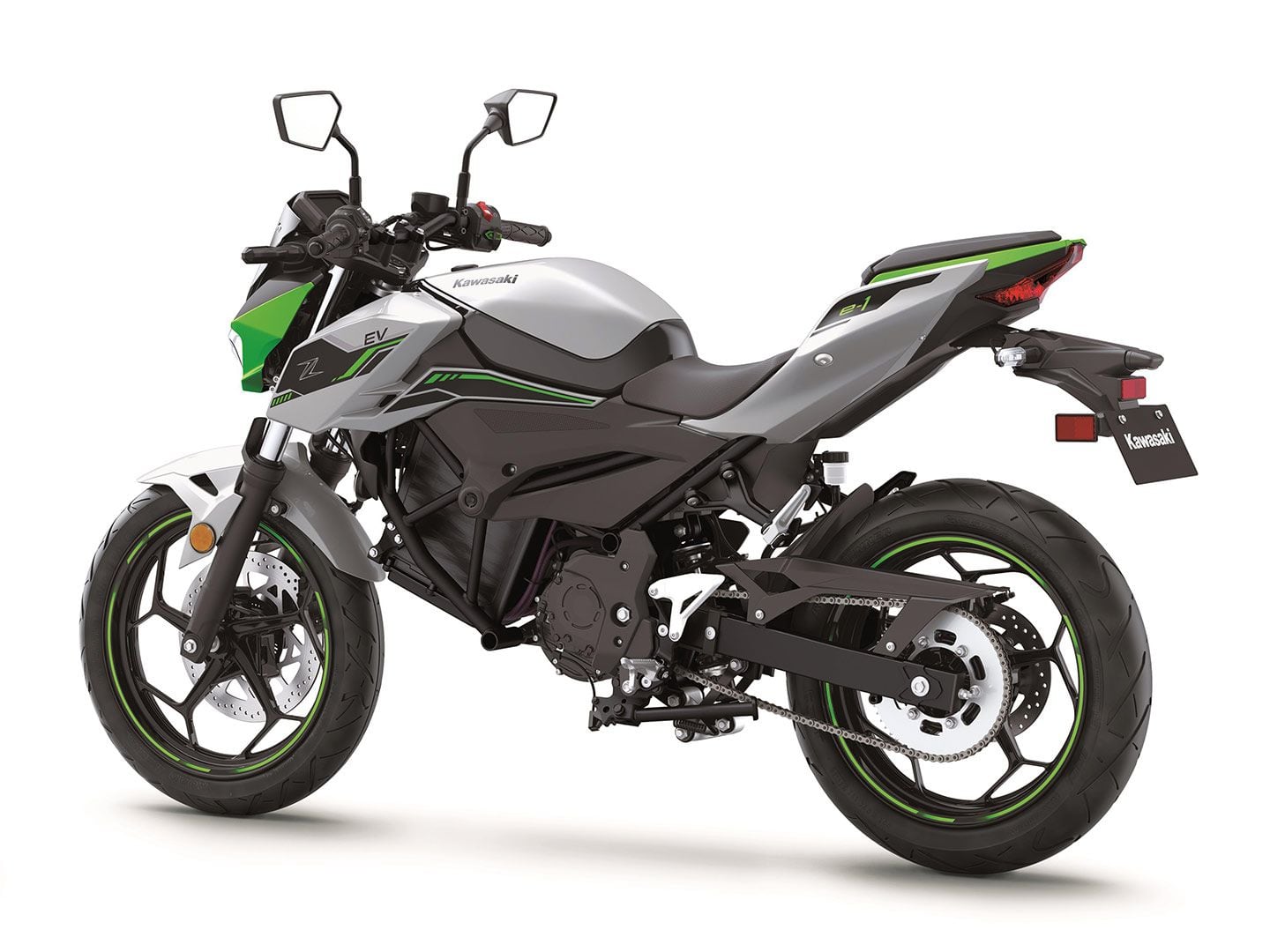
The Z e-1 (shown) and Ninja e-1 are powered by a brushless electric motor and use removable lithium-ion batteries. Curb weight is 298 pounds for the Z e-1 and 309 pounds for the Ninja e-1. (Kawasaki/)Dual lithium-ion batteries are mounted in a parallel arrangement, below the storage box that sits where the fuel tank would traditionally be. Each removable battery weighs a claimed 25.3 pounds, offers a nominal capacity of 30Ah, and nominal nominal voltage of 50.4V. This makes total battery capacity 60Ah.
Removing the batteries is done by unlocking and opening the storage compartment, unlocking the battery cover, and pulling them out, a process Kawasaki says it focused on in order to ensure ease of use. Another benefit to the removable batteries is that they can be taken indoors for charging. Consider street parking your motorcycle in a garageless urban situation—the batteries could be carried to your living space and charged indoors.
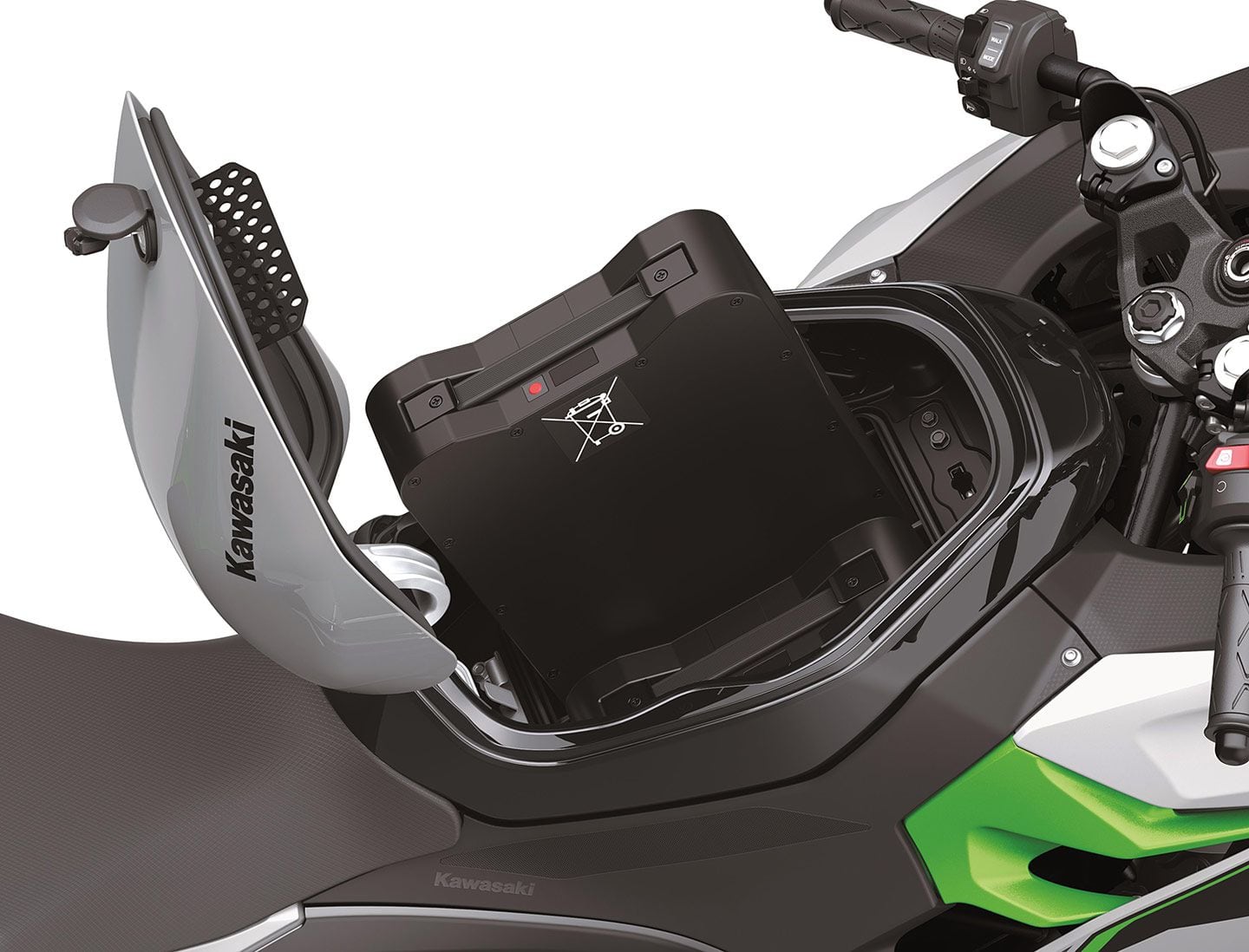
The lithium-ion batteries weigh 25.3 pounds each and are mounted in a parallel arrangement. They were designed to be easily removed for charging, but users can also charge the bike via an underseat charging adapter. (Kawasaki/)Speaking of charging, the batteries can be charged in one of three ways: via a charging dock, without a charging dock, or with the batteries left in place, by using an underseat charging adapter. One battery can be charged at a time, unless a second charger is used, in which case the batteries can be charged simultaneously.
Total charge time is a claimed 7.4 hours, or 3.7 hours per battery. Kawasaki claims 1.6 hours per battery for a partial charge, defined as taking the battery from 20 to 85 percent. Charging appears to be Level 1 only, that is, plugging into a standard 120V wall socket. The charger itself is an external unit that would need to be carried with you, if you intended to charge on the road.
Regenerative braking allows energy generated during deceleration to be recycled back to the battery once the rider rolls off the throttle. The feature kicks in when the batteries are at 60 percent charge, then gradually tapers off as they approach a full charge. Range is a claimed 41 miles, which drives home the point that these bikes are very much meant for quick trips around town.
A separate 12V battery is used to turn the screen on and to operate the lights, but the bike will not switch to “Ready” without the lithium-ion batteries in place.

There are three methods for charging the Ninja e-1 and Z e-1 batteries, as shown in the graphic. Kawasaki claims that total charge time is 3.7 hours per battery. (Kawasaki/)Riding Modes
The Ninja e-1 and Z e-1 have Road and Eco riding modes, and top speeds vary depending on the model, with the fully faired Ninja capable of a slightly higher top speed in Road (52 mph) and Eco (37 mph). For comparison, the Z e-1′s top speed is approximately 49 mph in Road and 35 mph in Eco. The rider can change modes via a handlebar-mounted switch at any time, as long as the batteries’ state of charge is above 35 percent. Once charge has dropped below that, the bike will transition to “limited-power operation.”
For added versatility, both bikes are equipped with an e-boost feature that increases power for stronger acceleration and higher top speed. The feature is activated by a button on the handlebar and can be used for up to 15 seconds at a time, in order to limit the impact on range and battery temperature. E-boost increases Ninja e-1 top speed to 65 mph in Road and 45 mph in Eco. Similarly, the Z e-1 is capable of 65 mph in Road and 42 mph in Eco mode when using e-boost.

The Ninja e-1 and Z e-1 both have a 4.3-inch TFT display. Notice the two available ride modes: Road and Eco. In addition to these modes, an e-boost function increases power for stronger acceleration and higher top speed. This would theoretically come in handy when needing to accelerate past a car or merge with traffic. E-boost can be used for just 15 seconds at a time. (Kawasaki/)Kawasaki has also developed a Walk mode for both bikes. With the system activated, riders can move the bike forward at approximately 3.1 mph, or in reverse at roughly 1.8 mph.
Chassis
In an attempt to keep curb weight as low as possible, Kawasaki is using a trellis-style frame that’s loosely inspired by chassis used elsewhere in its lineup, but with revised rigidity and low mounting position for the electric motors, which helps lower the center of gravity.
Dimensions are nearly the same as they are on the Ninja 400: The wheelbase is 53.9 inches, rake is 24.4 degrees, and trail is 3.7 inches. The goal? Ensure that the bike is lightweight and sporty, with a similar feel to the Ninja 400 that has been a huge success for Kawasaki. A 41mm fork and preload-adjustable shock are tuned for urban riding.
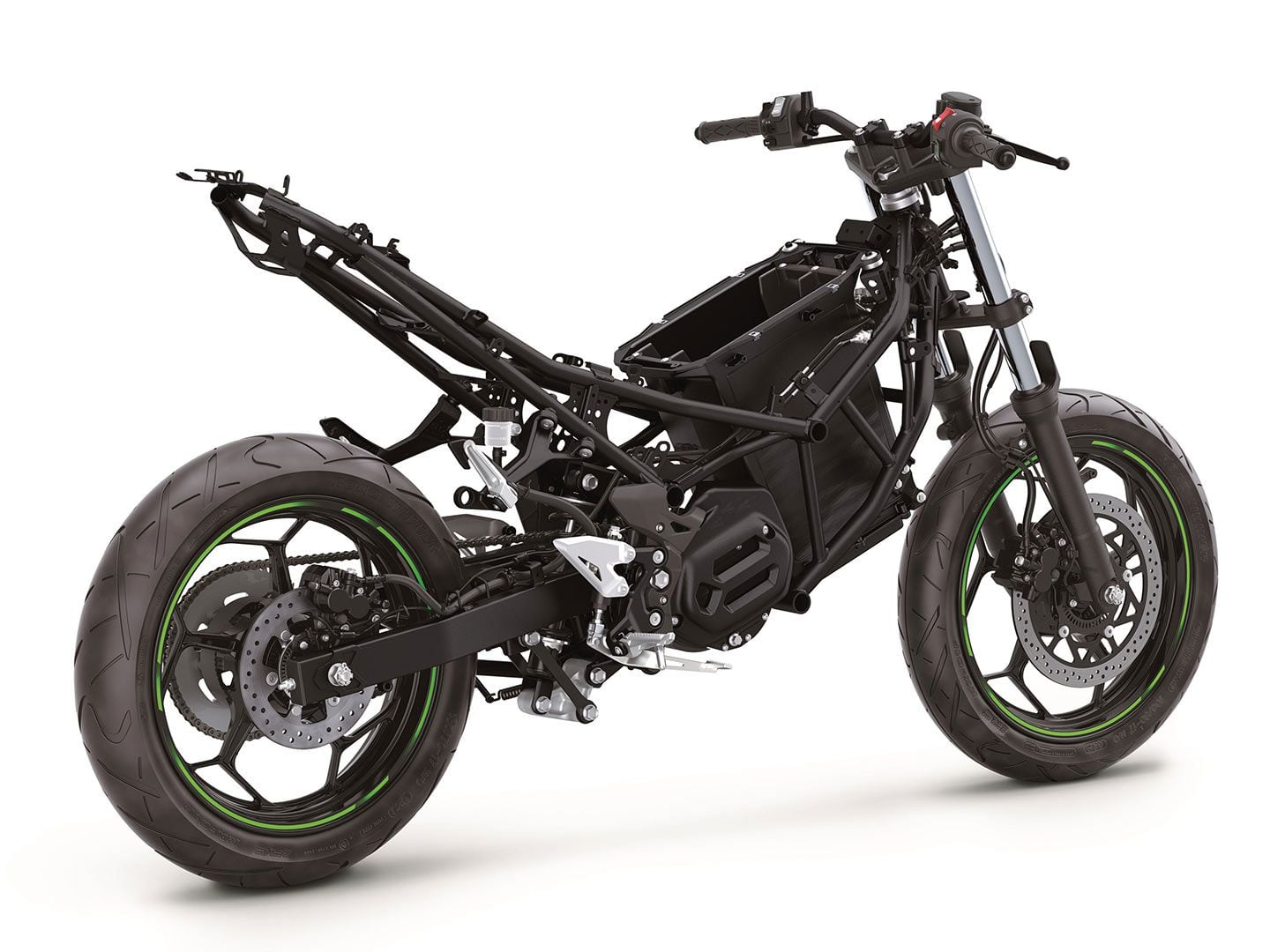
A trellis frame is used to keep weight to a minimum. Rigidity is optimized for this use case, while motor mounts are placed low as possible to help lower the center of gravity. Notice the tall handlebar for the Z e-1; the Ninja e-1 has clip-on-style handlebars attached to the top of the fork tubes. (Kawasaki/)A two-piston caliper bites on a single 290mm disc up front, and a two-piston caliper works on a 220mm disc out back. Tire sizes are 100/80-17 (front) and 130/70-17 (rear).
Importantly, claimed curb weight is down when compared to the Ninja 400 and Z400 models, with the Ninja e-1 weighing in at 309 pounds, and the Z e-1 weighing 298 pounds. Compare that to the ABS-equipped Ninja 400, which weighs 362 pounds, and the Z400, which curiously weighs in at 364 pounds.
Ergonomics and Styling
Kawasaki has gotten quite good at building nearly identical packages and making them distinct only in terms of look, and that continues to be the case here, with the Ninja e-1 and Z e-1 differing only in terms of bodywork and riding position. The biggest difference here is in the handlebars: The Ninja e-1′s clip-on style handlebars are attached to the top of the fork tubes, whereas the Z e-1 uses a tall, one-piece handlebar that puts the rider in a more upright position.
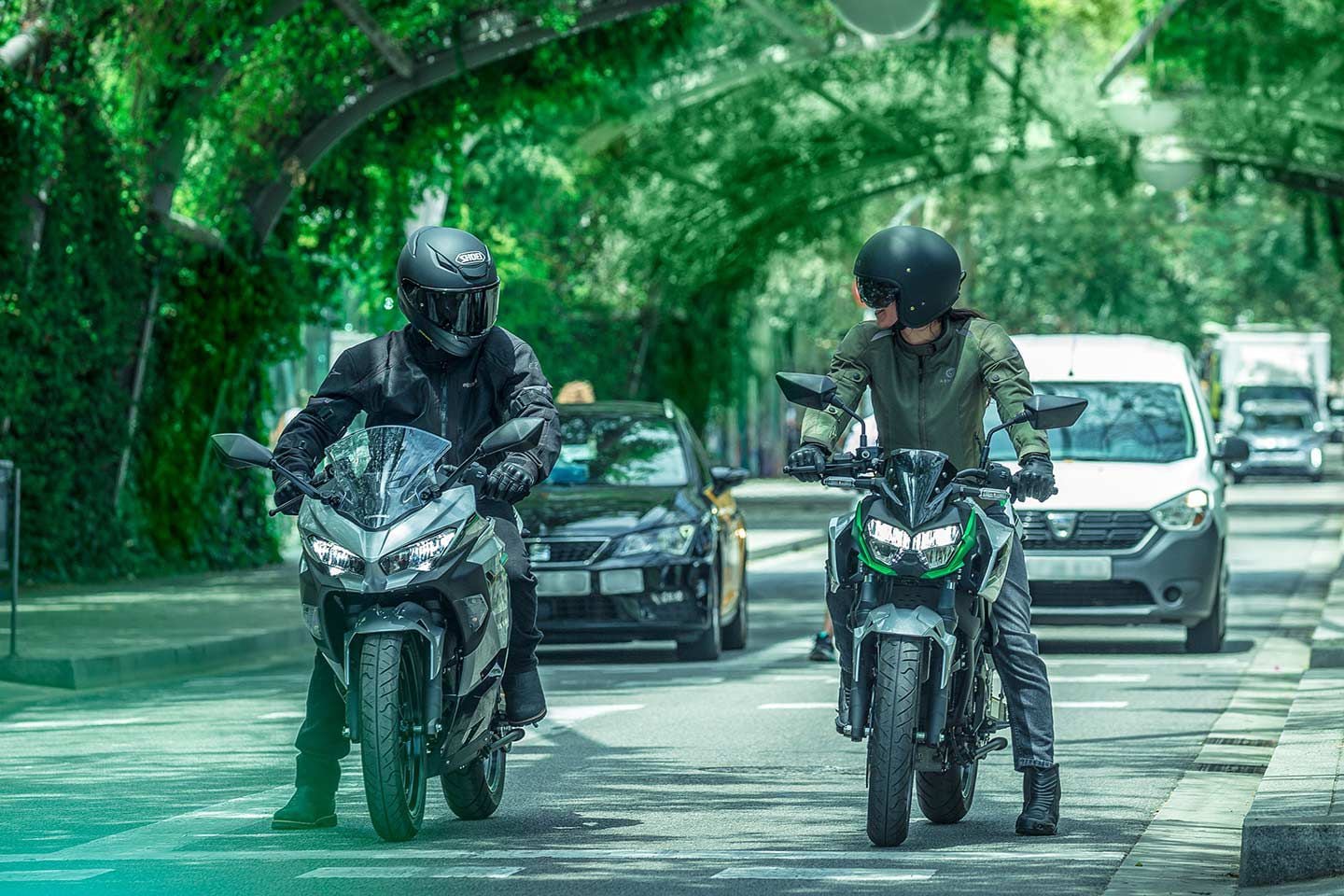
Kawasaki describes the Ninja e-1 and Z e-1 as urban commuters. Range is a claimed 41 miles. (Kawasaki/)More important is that both bikes have a 5-liter storage box, which will fit an assortment of small items and come in handy when running errands around town. This is, of course, quite a bit smaller than the 15-liter storage compartment on Honda’s Navi.
Conveniences don’t end there, however, as the bikes come equipped with a 4.3-inch TFT display and Bluetooth technology that enables riders to connect to their motorcycle wirelessly.
Pricing and Availability
The order period is now open for Ninja e-1 and Z e-1 models, with Kawasaki saying that bikes will be available this month. MSRP for the Z e-1 is $7,299, while the Ninja e-1 will go for $7,599.
Both bikes are available in just one color option: Metallic Bright Silver/Metallic Matte Lime Green/Ebony.
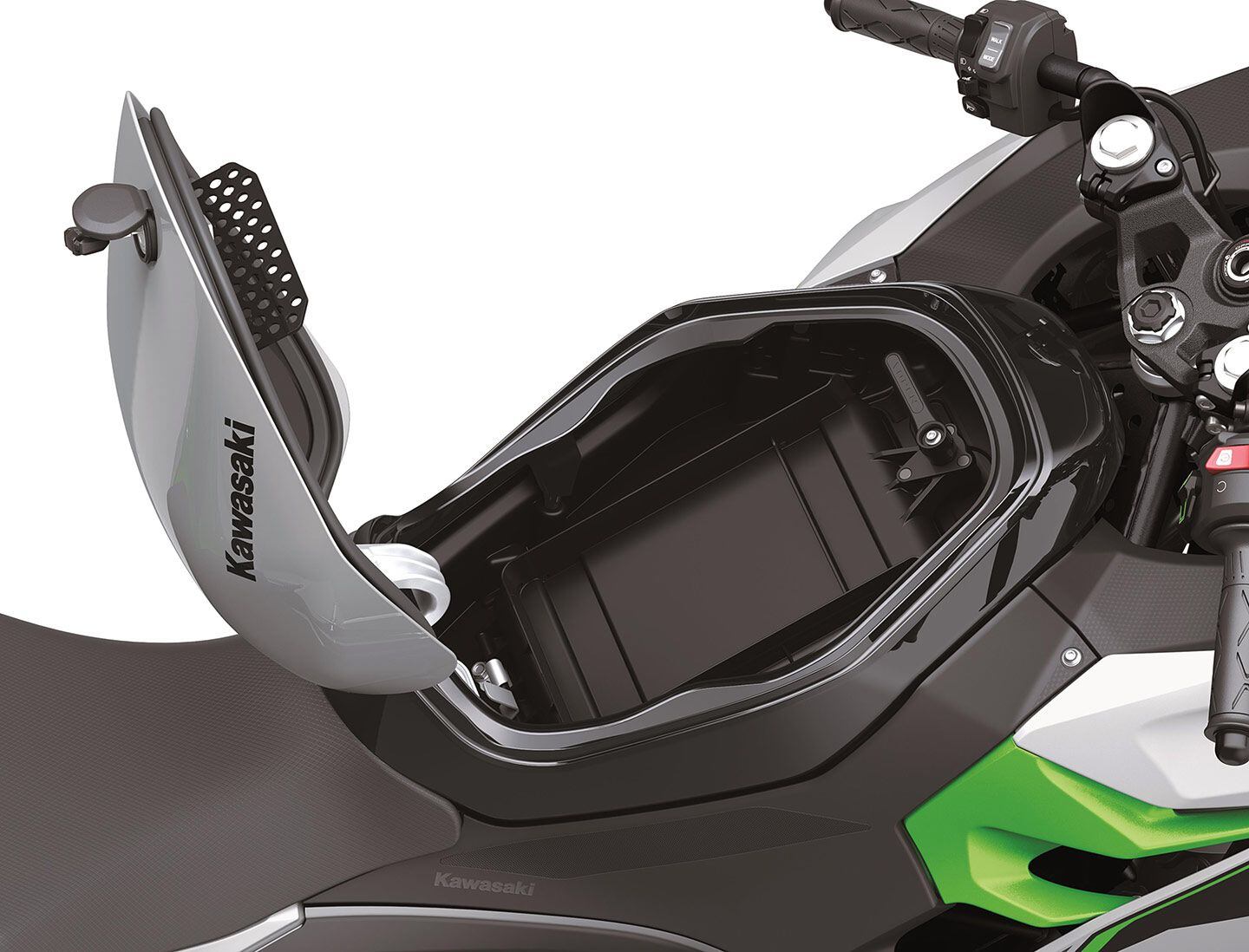
Here’s a closer look at the 5-liter storage compartment on the Ninja e-1 and Z e-1 models. Notice the lock for the battery compartment. (Kawasaki/)
Swapping between Road and Eco ride modes is as easy as thumbing this switch on the left side of the handlebar. Notice that the bikes also have a Walk mode for feet-down parking-lot maneuvers in forward and reverse. (Kawasaki/)
The e-boost function can be activated on the fly or when stopped with this button on the right handlebar. (Kawasaki/)
Kawasaki Ninja e-1 and Z e-1 charger. (Kawasaki/)
The underseat adapter for charging the Ninja e-1 and Z e-1, assuming you want to leave the batteries in place. (Kawasaki/)2024 Kawasaki Z e-1 and Ninja e-1 Specs
MSRP: $7,299 (Z e-1) / $7,599 (Ninja e-1) Motor: PMSM (Permanent Magnet Synchronous Motor) Rated Capacity: N/A Maximum Speed: 65 mph (w/ e-boost) Battery: Lithium-ion 30Ah x2 Voltage: 50.4V Charging Type: N/A Charge Time: 7.4 hr. Transmission: 1-speed, internal, motorcycle-style reduction gears Final Drive: Chain Frame: Steel trellis Front Suspension: 41mm telescopic fork; 4.7 in. travel Rear Suspension: Monoshock, spring preload adjustable; 5.2 in. travel Front Brake: 2-piston caliper, hydraulic w/ 290mm disc Rear Brake: 2-piston caliper, hydraulic w/ 220mm disc Wheels, Front/Rear: 17 in./17 in. Tires, Front/Rear: 100/80-17 / 130/70-17 Steering Head Angle/Trail: 24.4°/3.7 in. Wheelbase: 53.9 in. (1,369mm) Ground Clearance: 6.7 in. (170mm) Claimed Seat Height: 30.9 in. (785mm) Claimed Wet Weight: 298 lb. (Z e-1) / 309 lb. (Ninja e-1) Contact: kawasaki.com -
 1
1
-
-
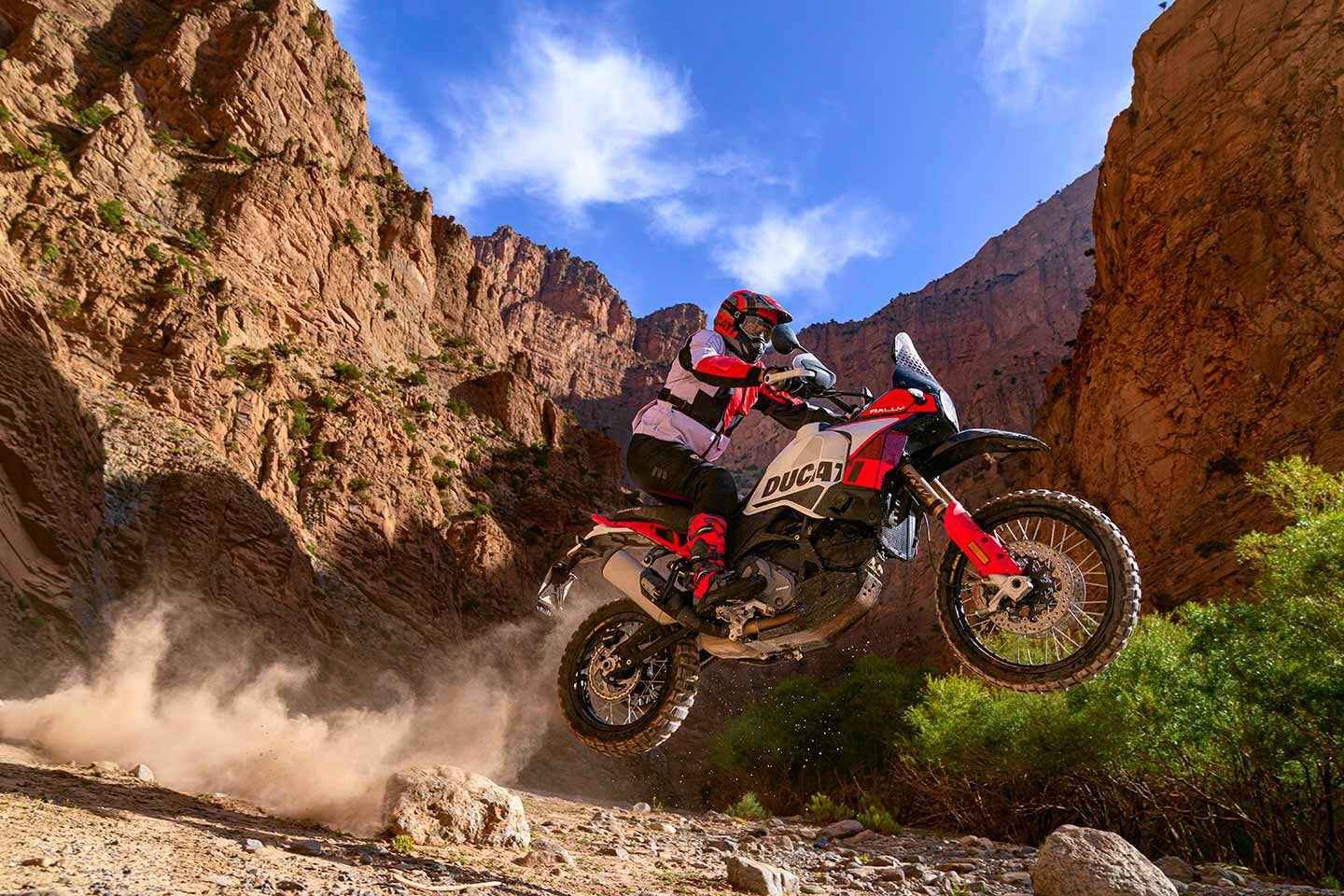
Ducati fitted the DesertX Rally with serious off-road equipment. (Ducati/)Ducati’s DesertX marked the return to the no-holds-barred kingdom of hard off-road riding, from the almost forgotten days of the 450 R/T that was urgently developed to equip the Italian team to the 1971 ISDT at the Isle of Man. The DesertX proved to be developed down to every detail, very capable, and with strong potential thanks to the gloriously versatile 937 11° desmo Testastretta V-twin. Now Ducati has branched out to give life to an even more specialized version, the DesertX Rally.
To test its ultimate potential against the toughest off-road riding conditions, the DesertX Rally debuted in a prototype form at the Iron Road Prolog of the Erzbergrodeo 2023 in the hands of multiple Enduro World and European supercross champion Antoine Méo who took it to the win in the twin-cylinder class.
Development of the DesertX Rally was totally devoted to the adoption and optimization of racing-derived technical components in order to fully extract the potential of an already rather strong combination of a very capable chassis and potent 937cc eight-valve desmo 90-degree V-twin.
The steel-tube trellis frame has been retained in its original form, both structural and geometrical, with the steering rake set at 27.6 degrees to generate 4.8 inches of trail in combination with the 21-inch front wheel. The only differences are consequent to the Rally’s adoption of long-travel race-derived suspension.
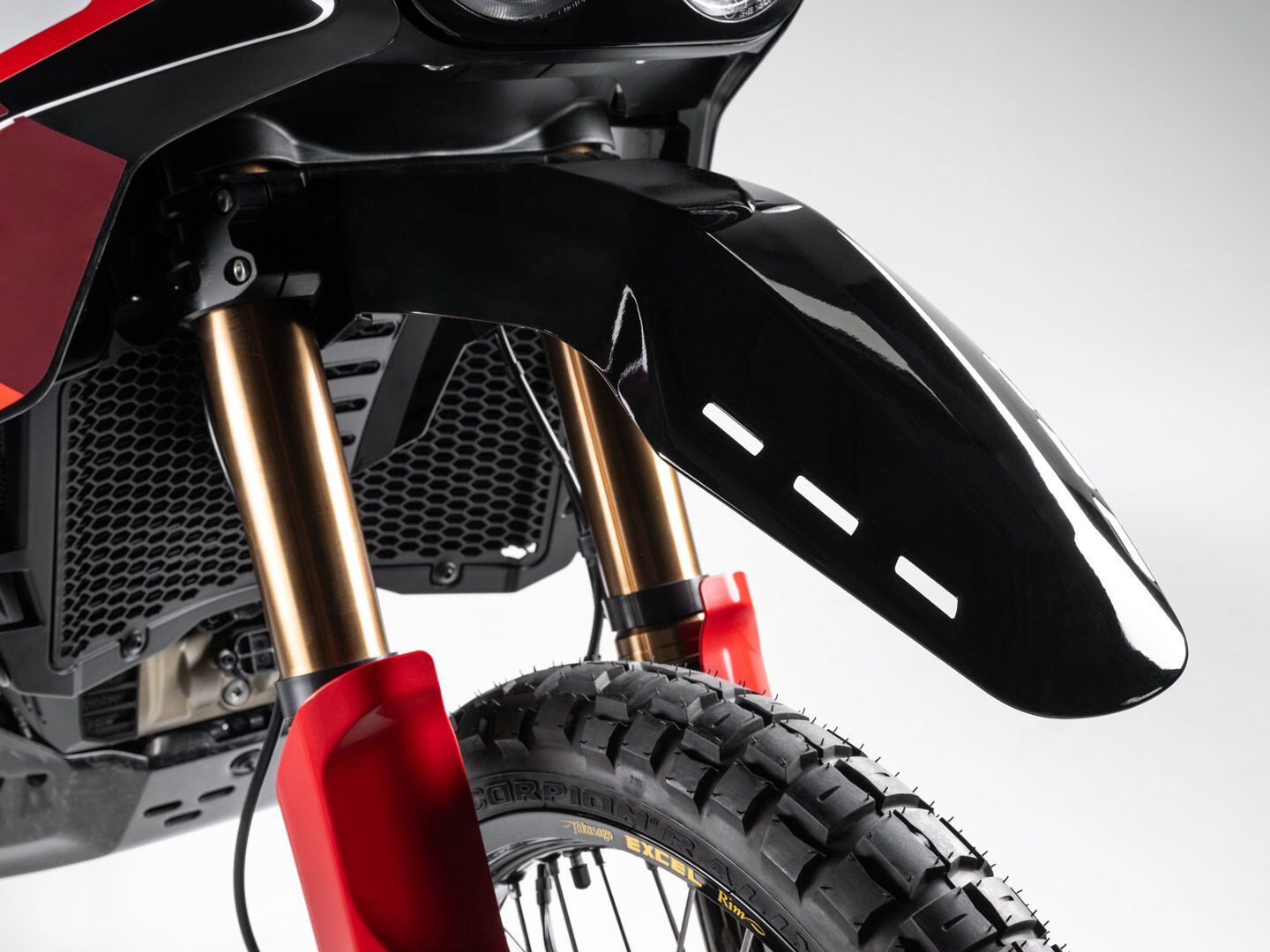
Long-travel suspension ups the DesertX Rally’s off-road game. (Ducati/)Billet aluminum triple clamps carry a 48mm Kayaba cartridge fork featuring special treatment of the inside of the stanchions (Kashima coating) and at the sliders (DLC treatment) to grant maximum smoothness under the toughest riding conditions. The new fork is 30mm longer and ensures a front wheel travel of 9.8 inches, 0.8 inch more than the standard unit. That longer fork also causes the wheelbase to stretch from 63 to 64 inches. Kayaba also supplies the new rear monoshock unit. In addition providing a rear wheel travel of 9.4 inches, the new unit features a larger 46mm piston for a more efficient damping control needed for severe off-road duty. The new rear shock is also fully adjustable in compression and rebound with a remote preload adjustment. An adjustable Öhlins steering damper is standard equipment as well.
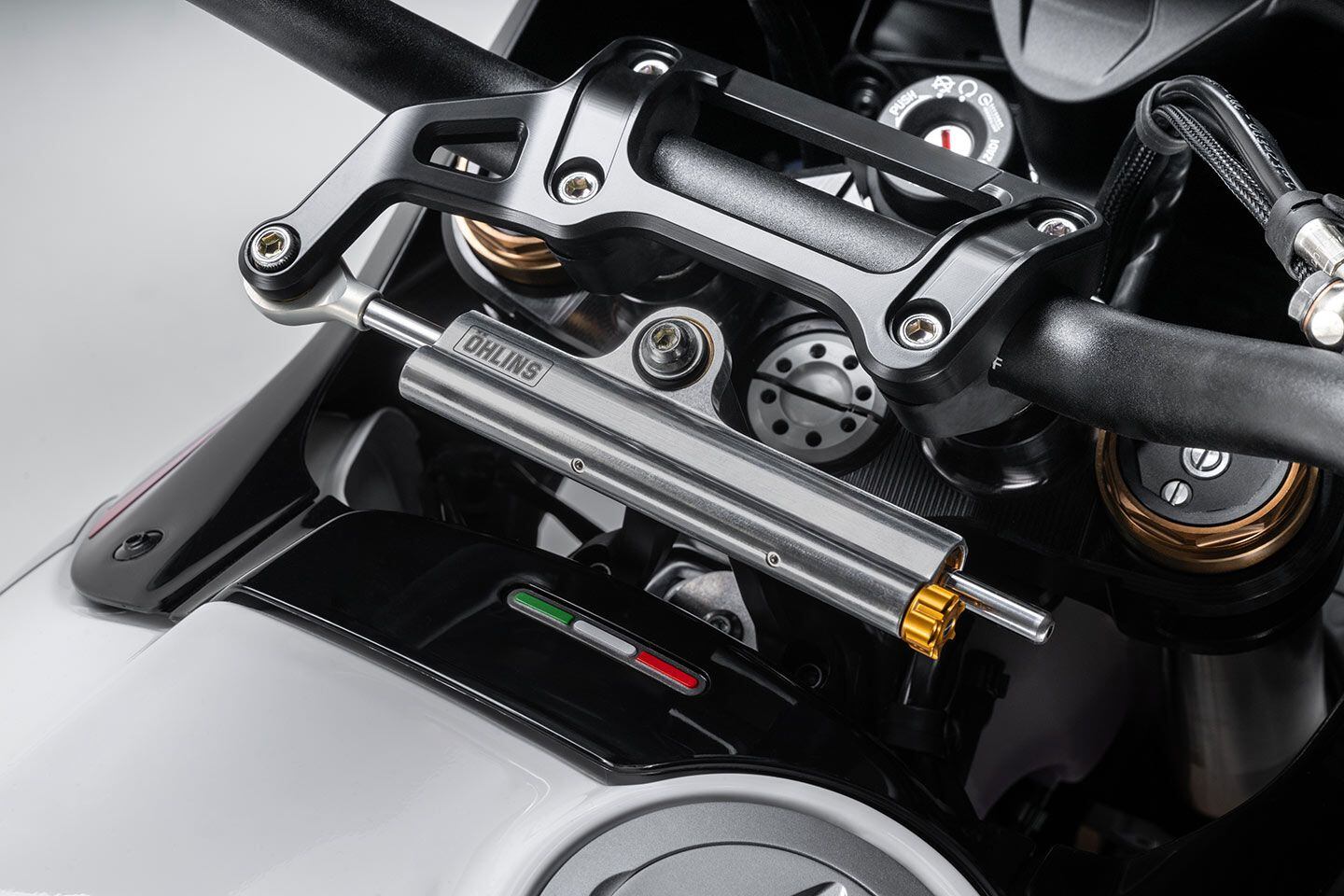
Behind that Öhlins adjustable steering damper are billet triple clamps holding 48mm KYB fork legs. (Ducati/)The seat height has gone up from 34.4 to 35.8 inches, but a lower seat (34.8 inches) is available as an accessory. A meaningful modification of the chassis setting comes in the wheel department with a traditional carbon steel spoke arrangement on Takasago Excel rims and billet hubs—consequently demanding that the tires be fitted with tubes. DesertX Rally is available with a selection of three tires; Pirelli Scorpion Rally STR is the base tire, but for extreme off-road performance the alternative is the Scorpion Rally. Those who want to spend more time on macadam than on dirt have the Pirelli Scorpion Trail II as the optimal choice. They all come in 90/90-21 and 150/70-18 sizing, front and rear respectively.
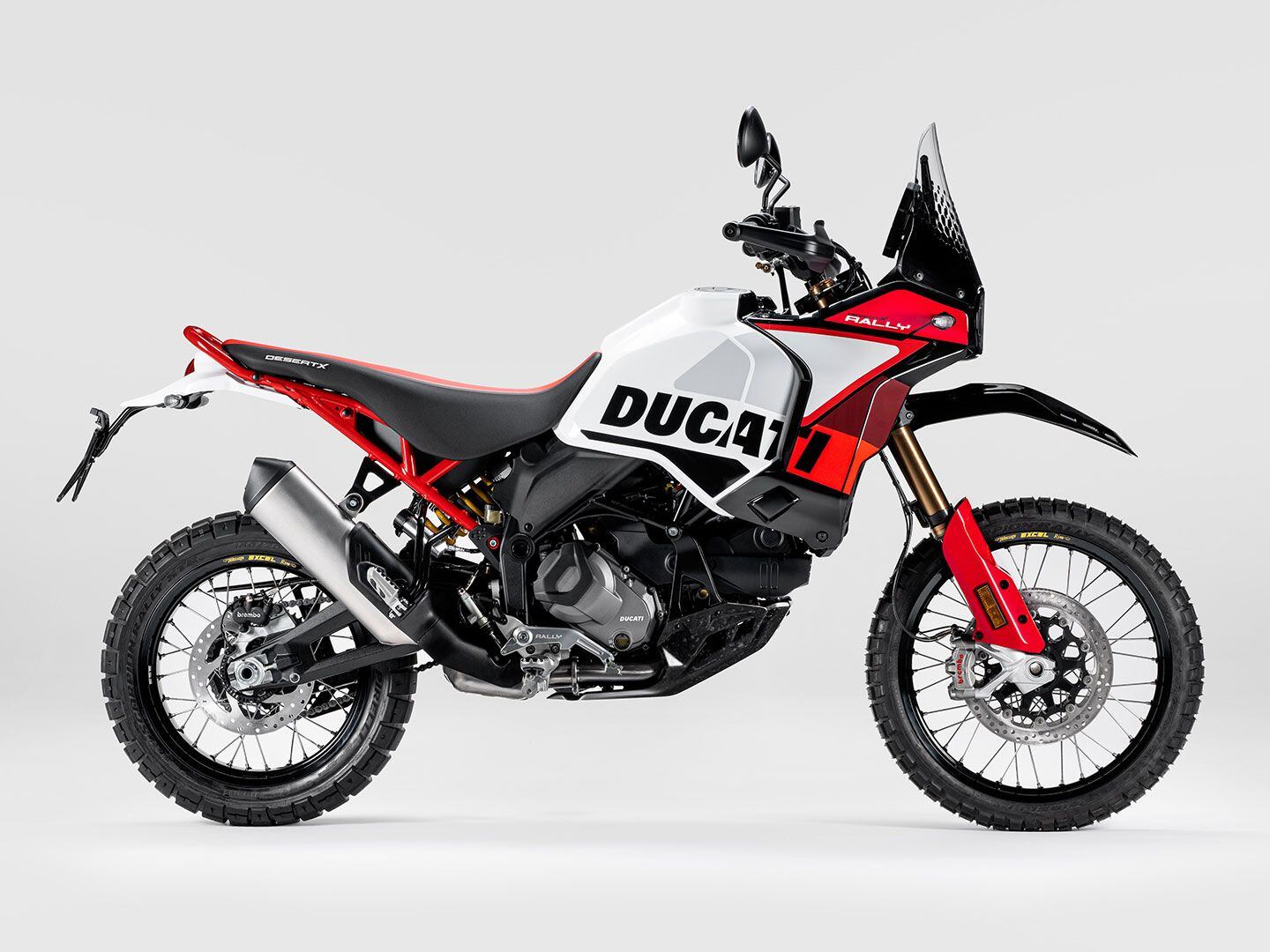
Special graphics on solid-color plastics are meant to take a beating better than painted surfaces. (Ducati/)The braking department looks adequate for a sportbike, with the front disc brake consisting of two 320mm rotors and radial mount, four-piston Brembo Monoblock calipers. At the rear, a 265mm rotor is teamed to a two-piston caliper. The whole system is managed by Bosch cornering ABS.

Kashima and DLC coated surfaces increase the smoothness and function of the DesertX Rally’s KYB fork. (Ducati/)As mentioned above, the engine remains the highly capable 937cc 11° Testastretta eight-valve desmo 90-degree V-twin. This unit is one of the more flexible, smooth, and responsive in its class. In addition, the 937cc version of the Testastretta was the first to switch from a hybrid crank assembly layout (with con-rods turning on plain bearings and the crankshaft turning on old and faithful aero angular contact ball bearings) to a full plain bearings design that offers quiet operation and superior rigidity. The powerplant produces a standard 110 hp at 9,250 rpm, same as the base-model DesertX, and delivers 68 lb.-ft. of peak torque at 6,500 rpm. That’s an outstanding interval of almost 3,000 rpm separating peak torque from peak power—a condition that grants excellent engine response over a very wide rev range.
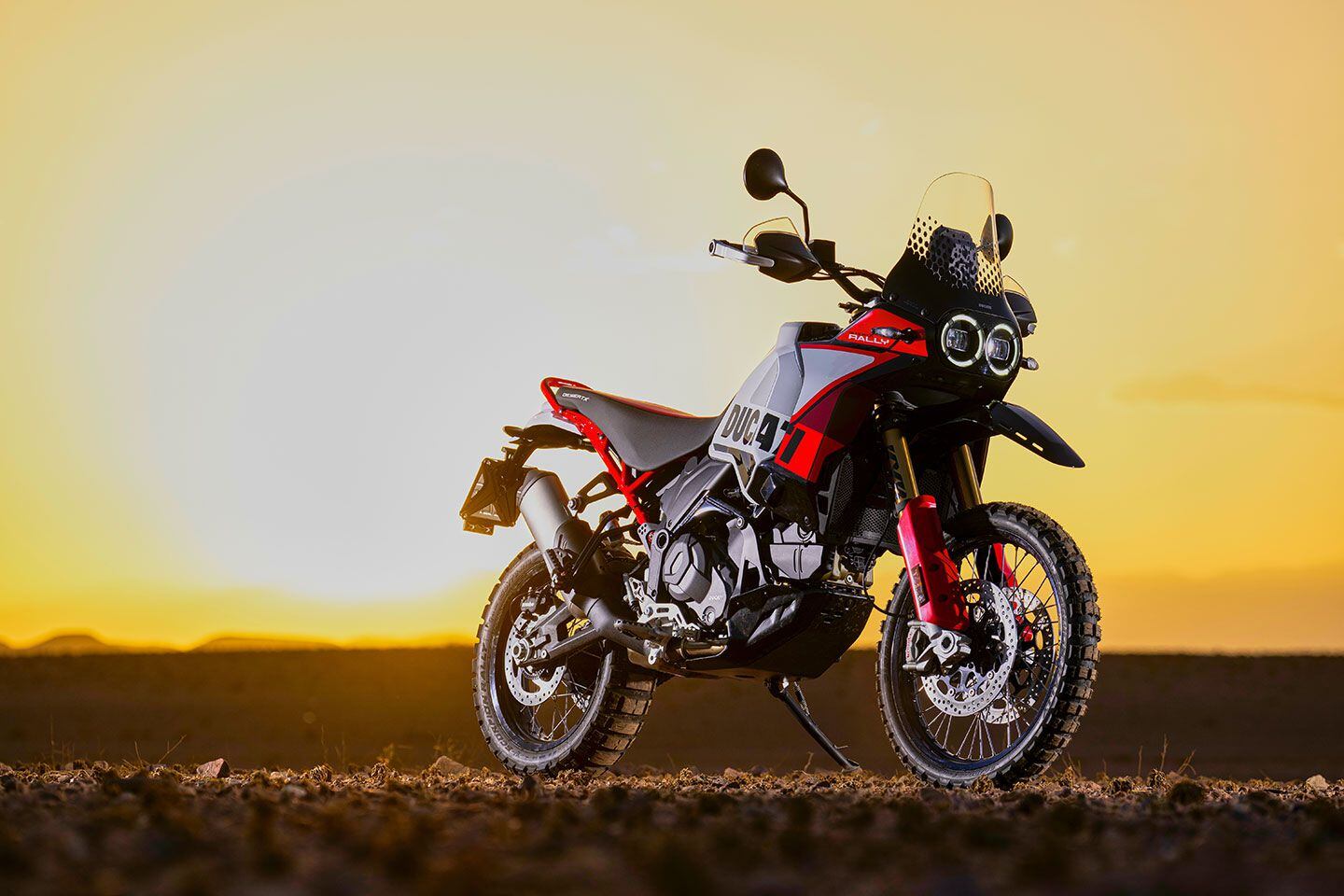
Ducati claims 110 hp from the DesertX Rally’s 937cc 11° Testastretta V-twin. (Ducati/)To assist the rider negotiating the hardest terrain, the DesertX Rally features a very comprehensive electronics suite. The ECU offers six riding modes (Sport, Touring, Urban, Wet, Enduro, and Rally) in addition to cornering ABS and traction control. An electronically controlled Ducati Quick Shift (up and down) and wheelie control are also standard equipment. A 5-inch TFT instrumentation display acts as the control center of the electronics suite. It is designed for integration with Ducati Media System so that the rider can connect their smartphone to access more information and Ducati’s turn-by-turn navigation system.
Special-edition graphics on solid-colored plastic bodywork—painted parts show scratches too easily—along with a single-piece rally seat and carbon fiber skid plate are the finishing touches on the DesertX Rally.
Price in the US will start at an MSRP of $22,995. Better get to your local Ducati dealer quick!
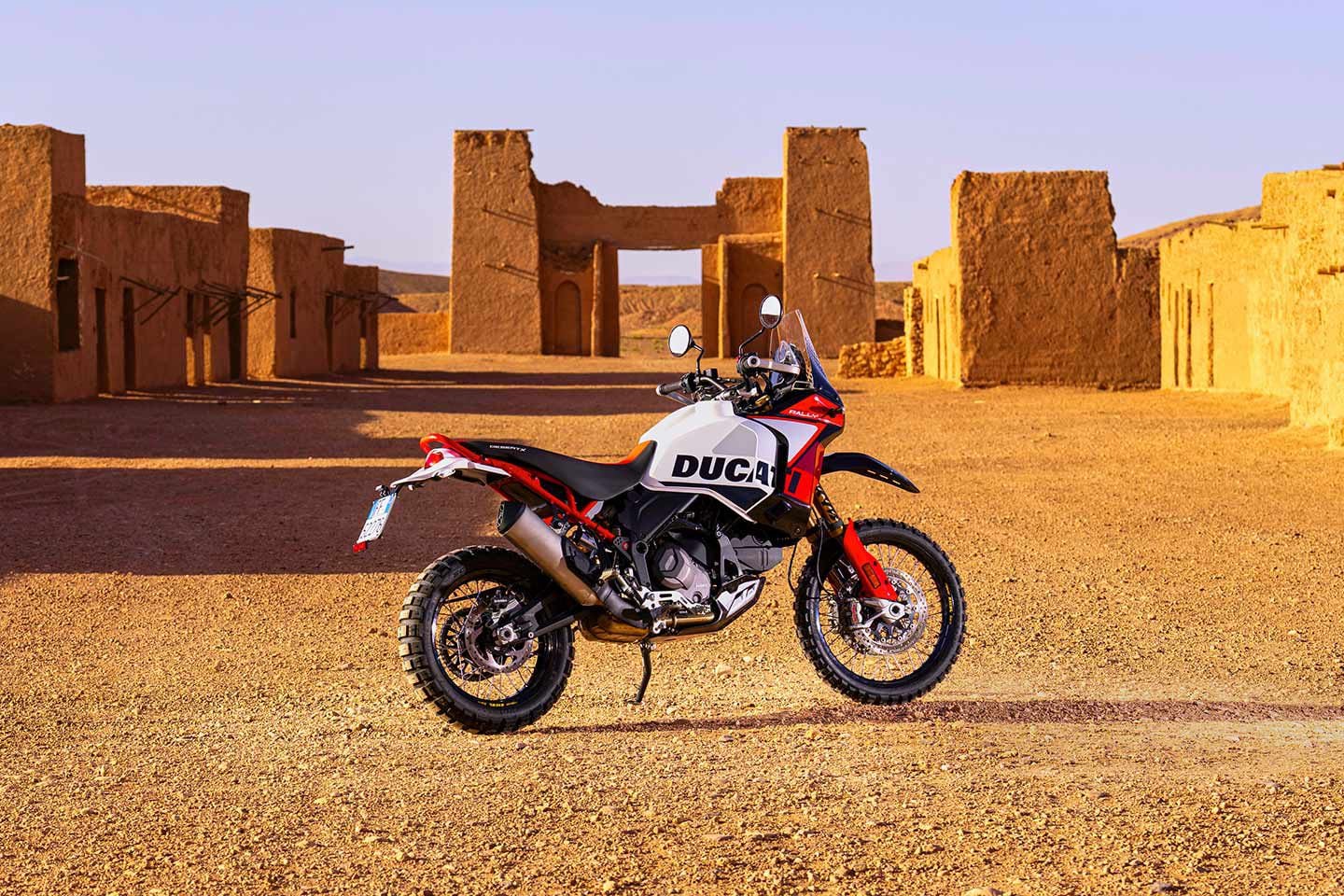
Ducati’s DesertX Rally has an MSRP of $22,995. (Ducati/)2024 Ducati DesertX Rally Specs
MSRP: $22,995 Engine: Testastretta 11° desmodromic, liquid-cooled V-twin; 4 valves/cyl. Displacement: 937cc Bore x Stroke: 94.0 x 67.5mm Compression Ratio: 13.3:1 Transmission/Final Drive: 6-speed/chain Claimed Horsepower: 110 hp @ 9,250 rpm Claimed Torque: 68 lb.-ft. @ 6,500 rpm Fuel System: Bosch electronic fuel injection w/ 53mm throttle bodies, ride-by-wire Clutch: Wet, multiplate slipper and self-servo; hydraulic actuation Frame: Tubular steel trellis Front Suspension: KYB 48mm upside-down fork, fully adjustable; 9.8 in. travel Rear Suspension: KYB monoshock, fully adjustable, remote preload adjustable; 9.4 in. travel Front Brake: Radial-mount Brembo Monoblock 4-piston caliper, dual 320mm semi-floating discs w/ Bosch Cornering ABS Rear Brake: Brembo floating 2-piston caliper, 265mm disc w/ Bosch Cornering ABS Wheels, Front/Rear: Spoked; 21 x 2.15 in. / 18 x 4.0 in. Tires, Front/Rear: Pirelli Scorpion Rally STR; 90/90-21 / 150/70R-18 Rake/Trail: 27.6°/4.8 in. Wheelbase: 64.0 in. Ground Clearance: 11.0 in. Seat Height: 35.8 in. Fuel Capacity: 5.5 gal. Claimed Curb Weight: NA Contact: ducati.com -
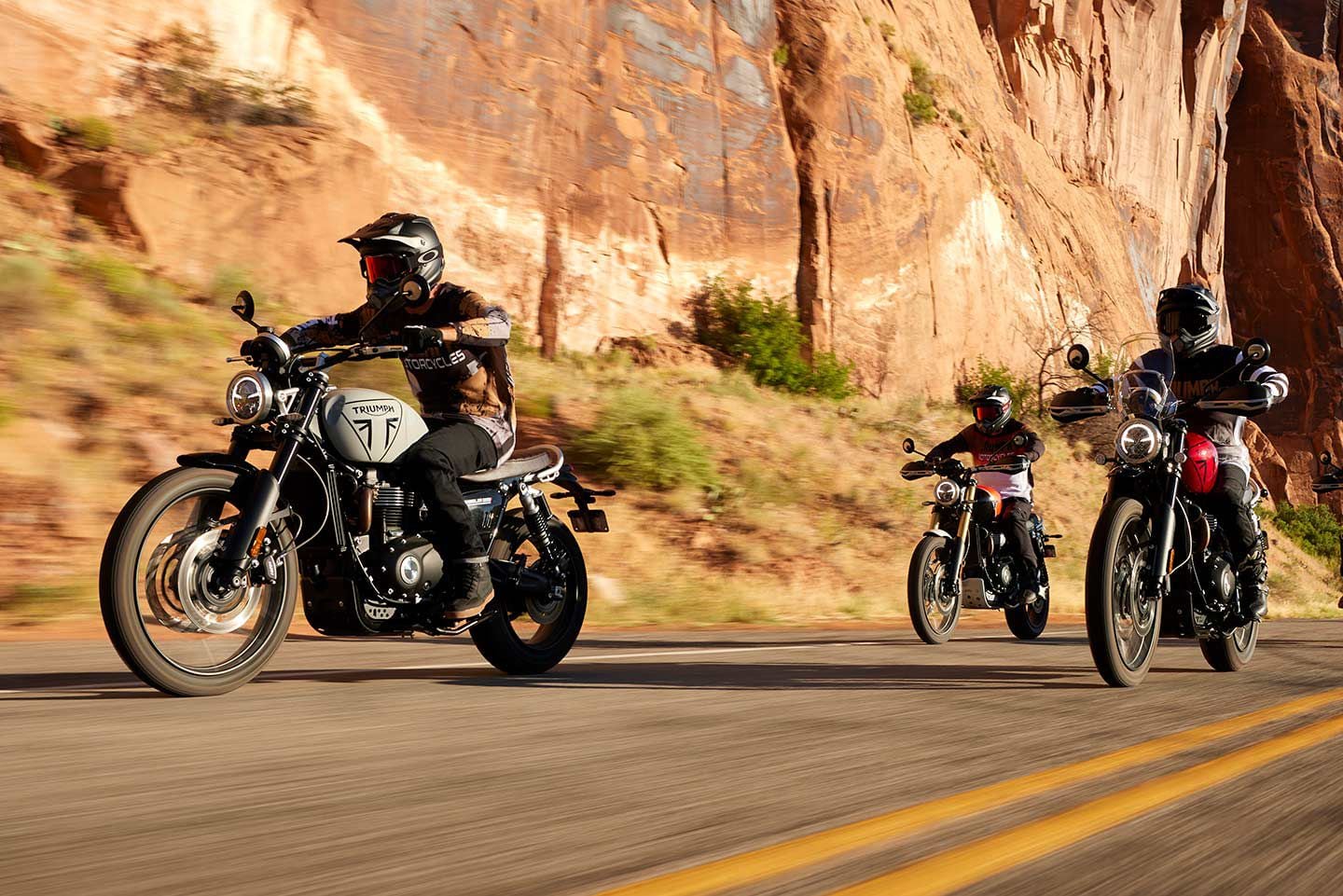
Triumphs Scrambler 1200 X and Scrambler XE are more clearly differentiated than before. (Triumph/)Triumph’s Scrambler 1200 models have been a big hit—one more so than the other. Now the Hinkley-based manufacturer has reworked the two-variant model line with a more accessible Scrambler 1200 X and an upgraded Scrambler 1200 XE. Both models still are powered by Triumph’s 1,200cc parallel twin, but now the two have a larger differentiation to make the mission of each clearer.
Thank goodness for the removal of that “C” in the name of the less extreme Scrambler, as there was always confusion in the office when talking about these models—”Wait, did you say ‘XE’ or ‘XC?’”
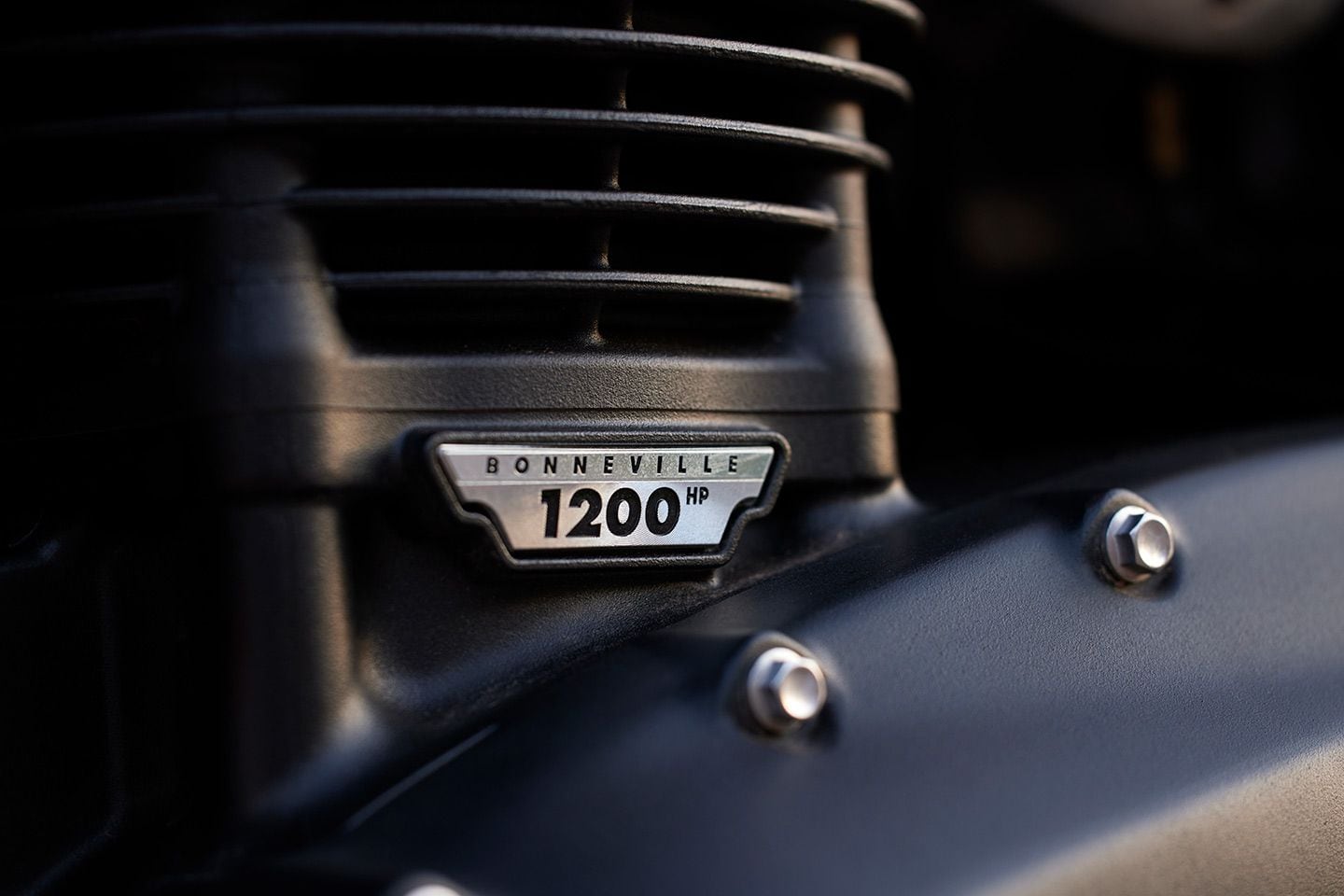
Triumph’s 1,200cc SOHC parallel twin powers both the Scrambler 1200 X and Scrambler 1200 XE. (Triumph/)2024 Scrambler 1200 X
For 2024, the new Scrambler 1200 X takes all of Cycle World’s 2020 Ten Best Scrambler XC style and capability and makes it more approachable for the rider who isn’t looking to conquer Baja (like we did) or is looking for a lower seat height. Power comes from the very same 1,200cc SOHC parallel twin that makes a claimed 89 hp at 7,000 rpm and 81.1 lb.-ft. of torque at 4,250 rpm. Triumph claims a new single 50mm throttle body and revised exhaust headers create a broader spread of power above 5,000 rpm to redline.
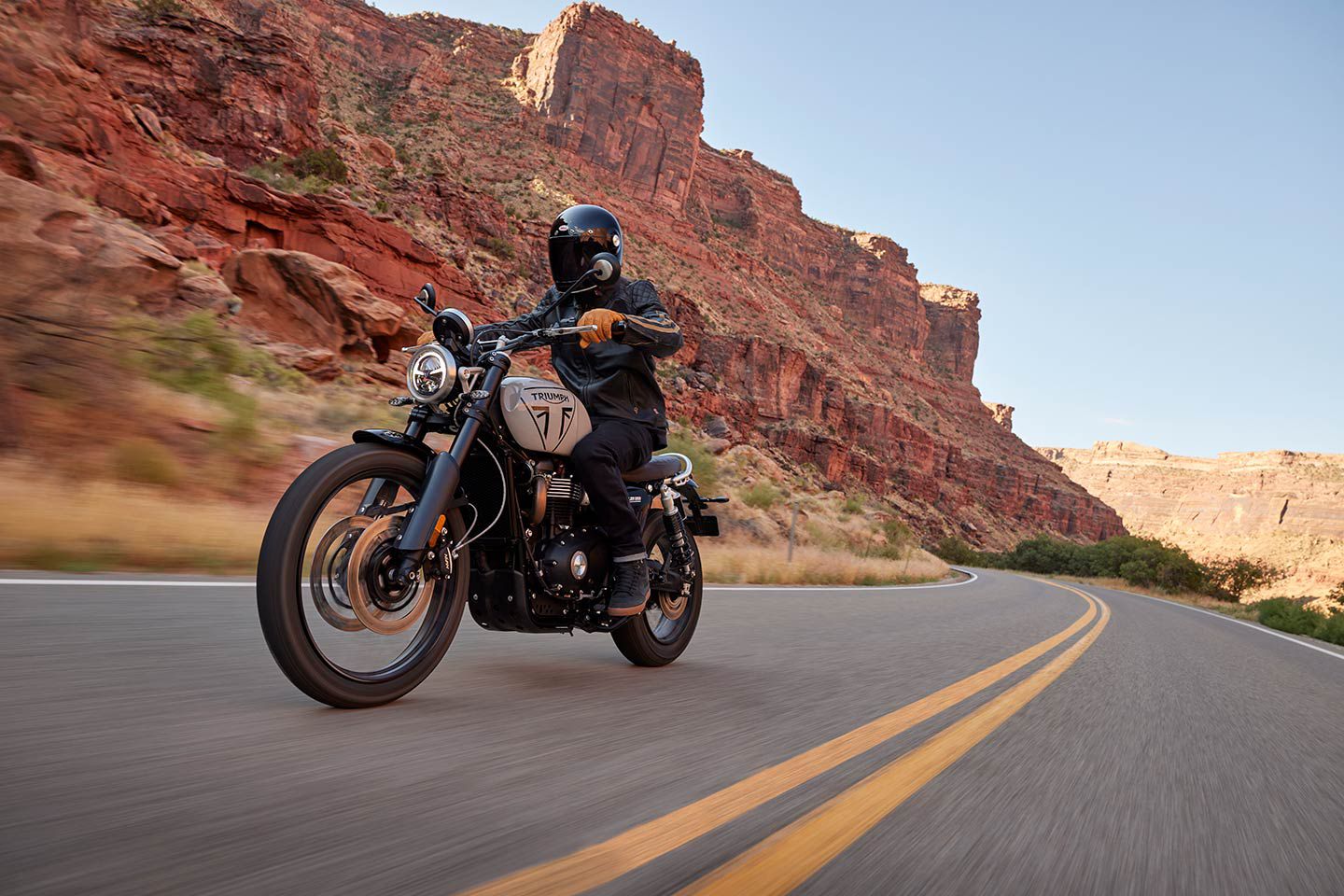
Triumph has made the Scrambler 1200 X more accessible to riders with a lower seat height and a significantly lower MSRP than the Scrambler 1200 XC it replaces. (Triumph/)New 45mm Marzocchi upside-down cartridge fork and preload-adjustable piggyback shocks have a shorter stroke of 6.7 inches (1.2 inches less than the outgoing XC) and are optimized for on-road performance. It retains a 21-inch front and 17-inch rear spoked tubeless. This also brings the seat height down 0.8 inch to 32.3 inches, for an easier reach to the pavement. Triumph’s low accessory seat takes that even lower to 31.3 inches. The X also gets a 2.6-inch-narrower handlebar than the XE.
Triumph has fitted cornering ABS and switchable cornering traction control to the X, which was not available on the XC. The IMU-based system was developed with Continental and automatically adjusts the settings dependent on roll, yaw, pitch, and acceleration. Inside the circular instrument dial is an LCD/TFT hybrid display for selecting and adjusting the Rain, Road, Off-Road, Sport, and customizable Rider modes. Braking is handled by 310mm dual front discs with Nissin twin-piston axial calipers and a single 255mm disc with a floating rear caliper, also by Nissin.
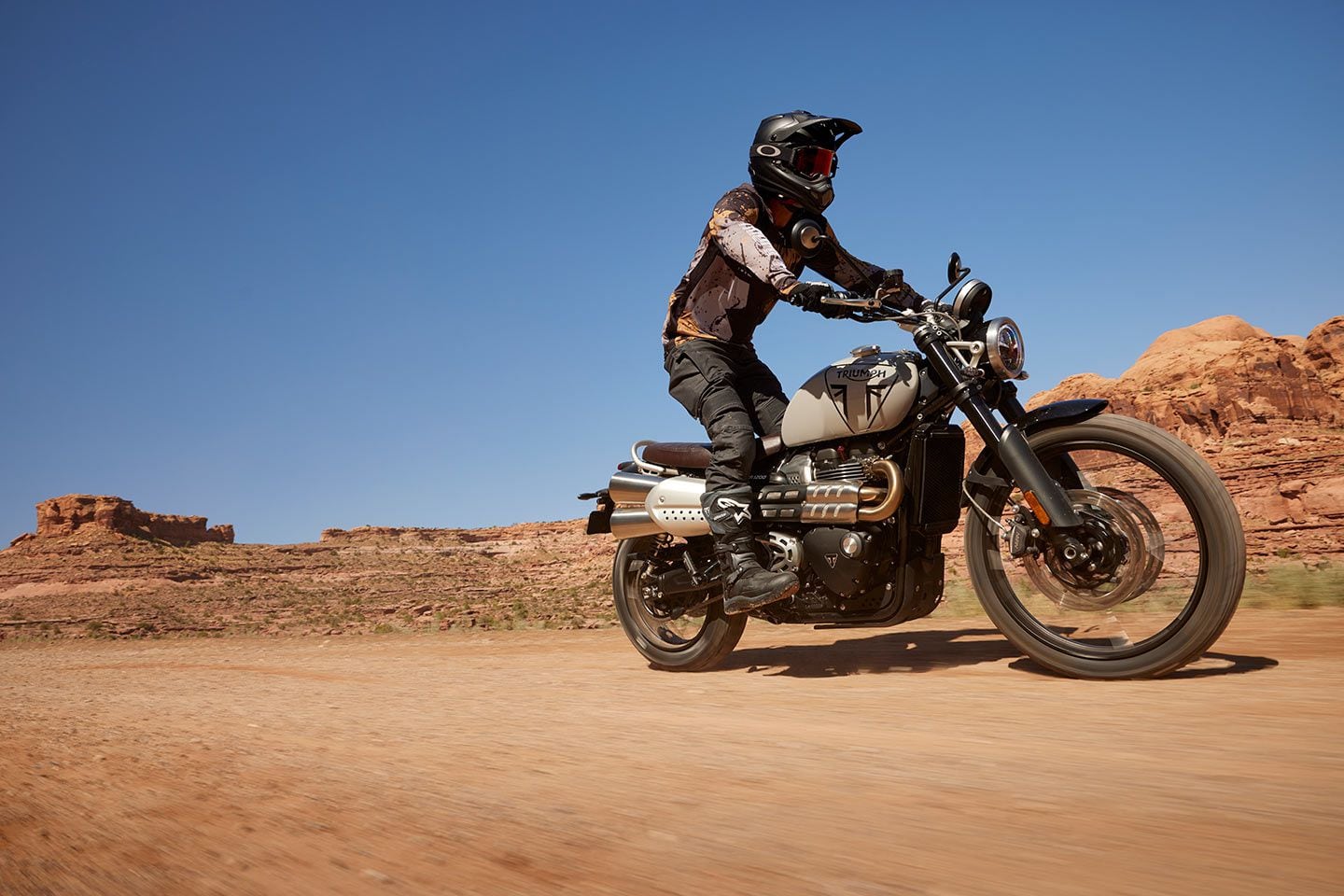
Just because the Scrambler 1200 X is more street-focused doesn’t mean it can’t get dirty. (Triumph/)Not only has Triumph made the Scrambler 1200 X more accessible for a variety of riders, it has made the price tag more attractive as well with a starting MSRP of $13,595. That’s $1,150 less than the 2023 Scrambler XC it replaces.
2024 Scrambler 1200 XE
Triumph’s Scrambler 1200 XE blurred the lines of a scrambler-style motorcycle and a high-performance adventure bike with its long-travel suspension, off-road-friendly ergos, and 21-inch front wheel. In fact Triumph-sponsored Ernie Vigil even raced the XE in Baja. For 2024 the XE loses none of its off-road capability, but gets new brakes and suspension.

Triumph’s Scrambler 1200 XE is more off-road ready than the X. (Triumph/)Powered by the same 1,200cc twin as the X, the XE models gets an additional Off-Road Pro mode that shuts off the ABS and traction control with an off-road throttle map. The XE enjoys a TFT dash with switchable design themes, high and low contrast options, and a personalized start-up screen with the rider name displayed. A single-button cruise control is also standard.
Marzocchi suspension units now replace the Showa fork and Öhlins shocks on the XE. Suspension travel remains 9.8 inches front and rear. Both the front and rear are fully adjustable for preload, compression, and rebound, and the 45mm fork features hydraulic bumpstops for increased bottoming resistance. At the bike the new piggyback shocks feature dual springs with three spring rates, with the top single-rate spring providing plushness on small bumps. A 32mm-longer swingarm on the XE from the X gives it better weight balance and stability in the dirt.
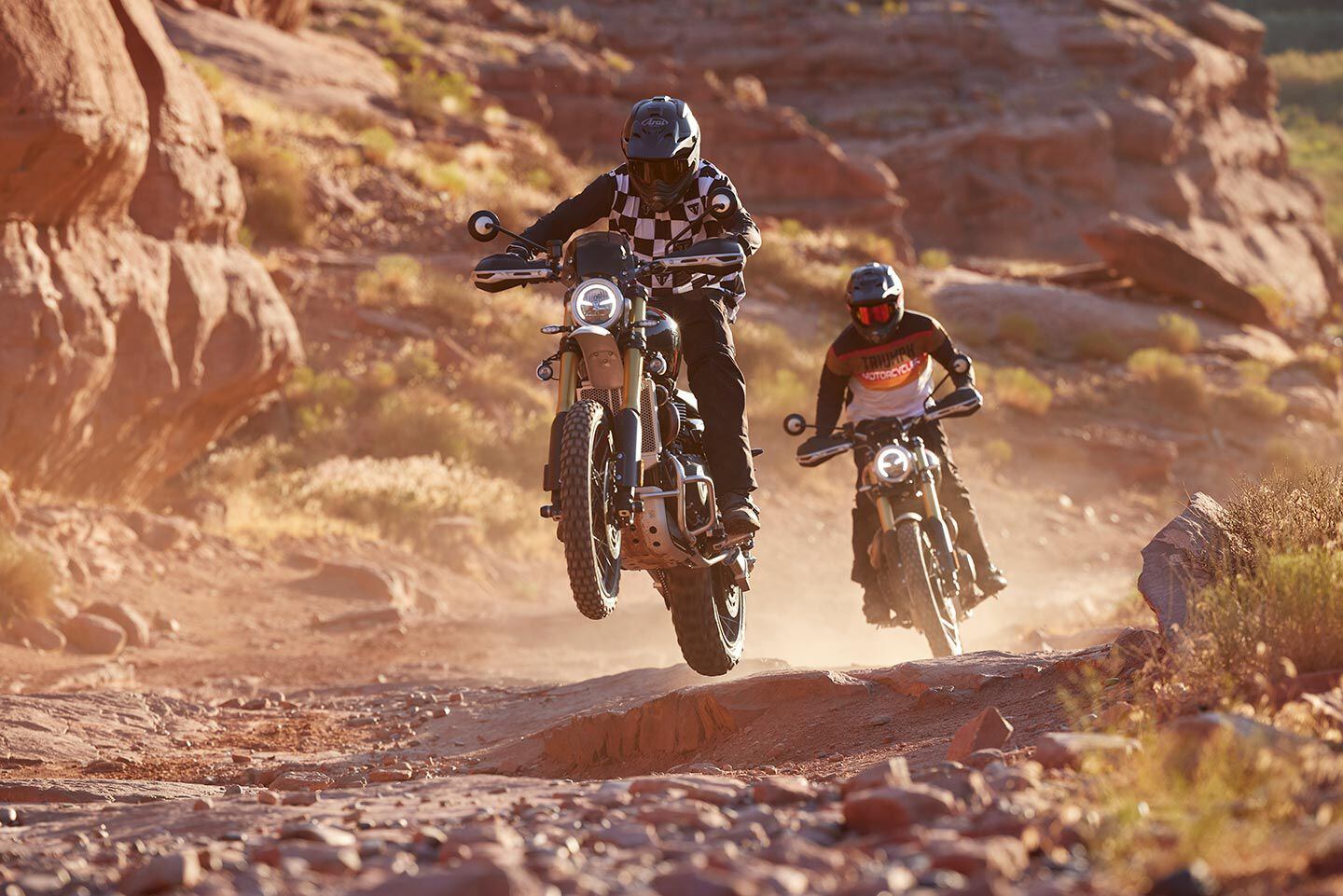
New Marzocchi fork and shocks give the Scrambler 1200 XE 9.8 inches of suspension travel. (Triumph/)Braking gets an upgrade with Brembo Stylema radial Monoblock calipers on 320mm floating discs. The rear gets the same Nissin setup, and ABS switchability does increase by one setting with the option of completely off in Off-Road Pro.
Pricing on the Scrambler 1200 XE is $15,295, $900 less than the 2023 version. Both the X and XE are expected in dealers at the first part of 2024.
-
Wunderlich adds a touch of convenient practicality to your BMW R 1200/1250 GS adventure-tourers.
-
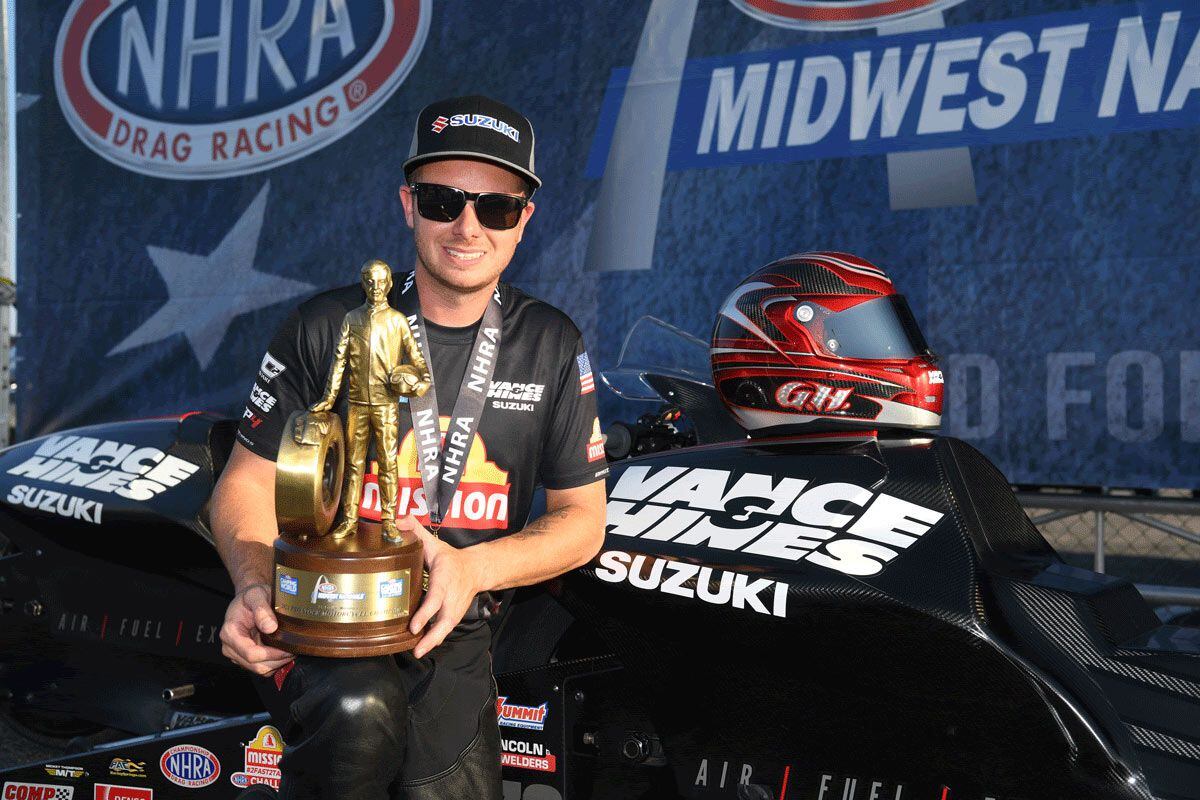
Gaige Herrera took his eighth win of the season and widened his lead in the Pro Stock Motorcycle Countdown. (Suzuki/)Suzuki Motor USA Press Release:
Gaige Herrera took his eighth win of the season and widened his lead in the Pro Stock Motorcycle Countdown to the Championship standings with a victory over his Vance & Hines/Mission Suzuki teammate Eddie Krawiec at the NHRA Midwest Nationals at World Wide Technology Raceway in St. Louis on Sunday.
Race Highlights
- Gaige Herrera qualified No. 1 for a record 11th time, reset the track’s elapsed-time record, and won his eighth race of the season.
- Eddie Krawiec qualified third and advanced to his second final-round appearance of the season.
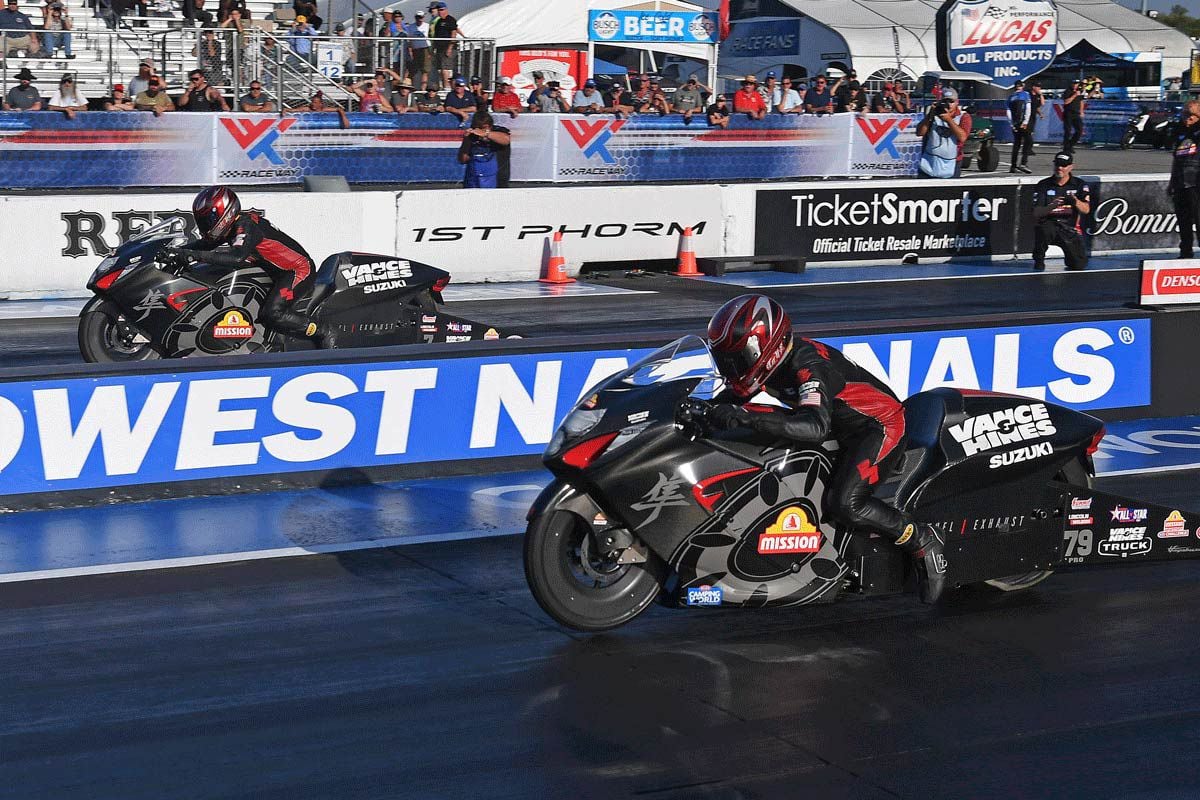
An all-Vance & Hines/Mission Foods Suzuki final and Gaige Herrera (79) captures his eighth victory of the season in St. Louis. (Suzuki/)Continuing to display total domination over the Pro Stock Motorcycle class on his Gen 3 Hayabusa, Herrera qualified in the top starting spot for a class-record 11th time this season with a 6.716-second/201.79 mph run on Friday evening.
Herrera set a new track elapsed-time record in the first round of eliminations with a 6.701-second/201.88 mph victory over Joey Gladstone (6.780 seconds/200.17). After making a 6.706-second/202.45 mph solo bye run in round two Herrera met Chase Van Sant in the semi-final round, where he equaled his qualifying time with a 6.716-second/202.12 mph pass to defeat Van Sant (6.800 seconds at 198.85 mph). The victory set up an all-Vance & Hines/Mission Suzuki final-round matchup between Herrera and Eddie Krawiec for the second time this season.
In the finals, Herrera again denied Krawiec his 50th career win, showing no mercy with a 6.728-second/201.79 mph victory over his teammate, who ran 6.761 seconds at 201.52 mph. The win, Herrera’s eighth of the season, widened his lead in the Countdown standings to 99 points over second-place Matt Smith.”
I had a great motorcycle all through qualifying and eliminations. It was the one to beat. Having an all-Vance & Hines/Mission Suzuki final is awesome. I went into it with lane choice, but we decided to flip a coin in the pits and Eddie won, so he took the better of the two lanes. I outran him, but it was a great, close final. I can’t ask for anything better,” Herrera said. “It gives me a lot of momentum and I’m excited to go to Dallas with a bigger lead in the Countdown points.”
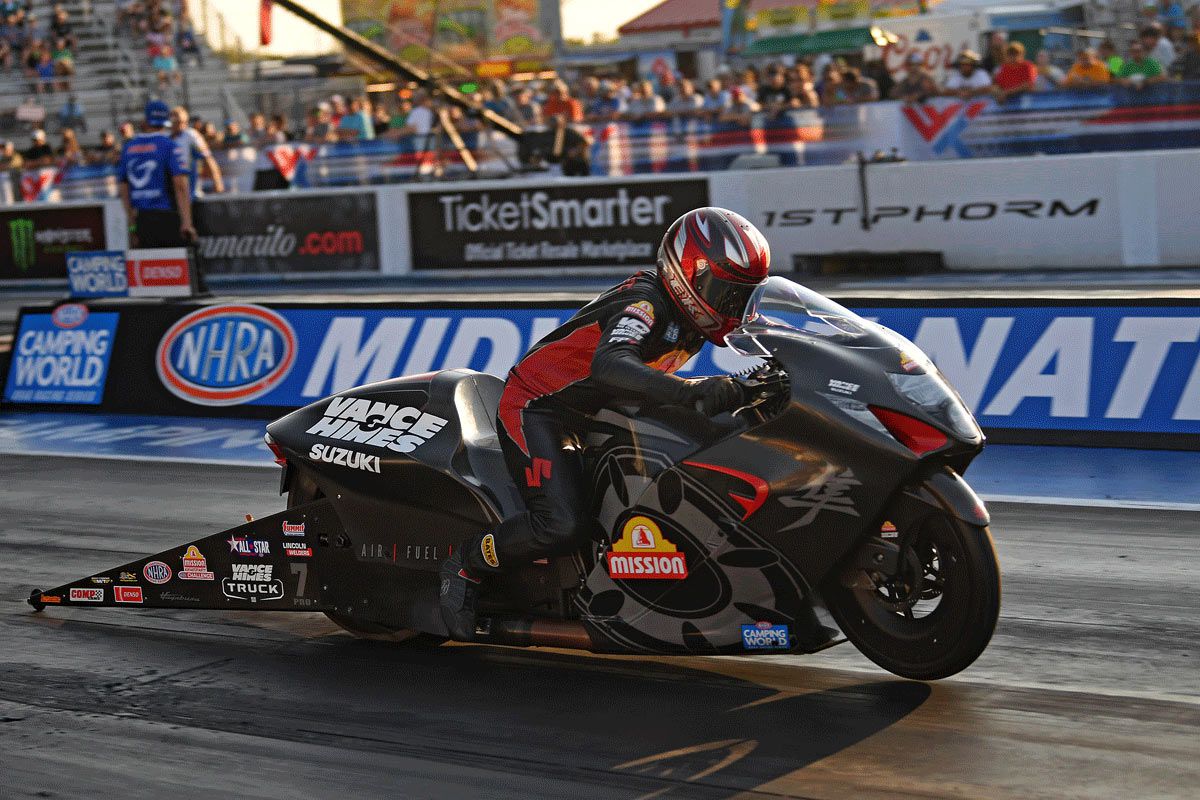
Eddie Krawiec (7) meets his teammate in the finals, but he falls just short of getting his 50th career victory. (Suzuki/)After advancing to the semi-final round a week ago in Charlotte, Krawiec arrived in St. Louis on a mission to close the points gap to riders ahead of him in the Countdown standings. He got his weekend off to a strong start by qualifying third with a 6.773-second/201.25 mph run.
Krawiec ran 6.748 seconds at 201.40 mph in round one to beat Ryan Oehler, who fouled on the starting line, then advanced out of round two with a 6.760-second/201.28 mph second-round victory over Jianna Evaristo, who also fouled. In a huge semi-final matchup against Matt Smith, Krawiec beat Smith off the starting line, blasting to a 6.747-second/201.94 mph win over his opponent, who ran 6.782 seconds at 202.70 mph.
The crucial victory sent Krawiec to his second final-round matchup against Herrera this season, where he came up just short of winning his 50th career race. Despite the loss, Krawiec closed his gap to Smith to 30 points and now sits in fourth place just 3 points behind third-place Hector Arana, Jr. going into the final three-race stretch of the Countdown.
”I had a great Hayabusa all weekend. To run 6.70s at over 201 mph every pass shows how much progress we’ve made with my motorcycle over the past couple of races.” Krawiec said. “The win against Matt Smith was huge. It has the potential to be a championship-deciding round by keeping him from having an opportunity to get closer to Gaige in the points. Right now, it’s really a race for second place for everyone else, and we’re in great shape.”
For Vance & Hines/Mission Suzuki crew chief Andrew Hines, the team is building momentum at the most critical part of the season.
”We made the right calls at the shop this week to overhaul a few things and work on Eddie’s program so he could help Gaige as a blocker and that worked out great. After the final round Eddie said this is the best package he’s had in his career,” Hines said. “We’ll keep doing what we’ve been doing all season to keep the momentum going. We have two formidable Hayabusa’s that will be a problem for every other competitor in the last three races.”
With three races remaining in the Countdown to the Championship, Herrera and Krawiec sit first and fourth in the Pro Stock Motorcycle standings with 2,430 and 2,301 points, respectively.
The Vance & Hines/Mission Suzuki team is back in action Oct. 12-15 at the NHRA FallNationals at Texas Motorplex in Ennis, TX.
For the latest Suzuki team news, race reports, and information visit SuzukiCycles.com/Racing/Drag-Racing.
-
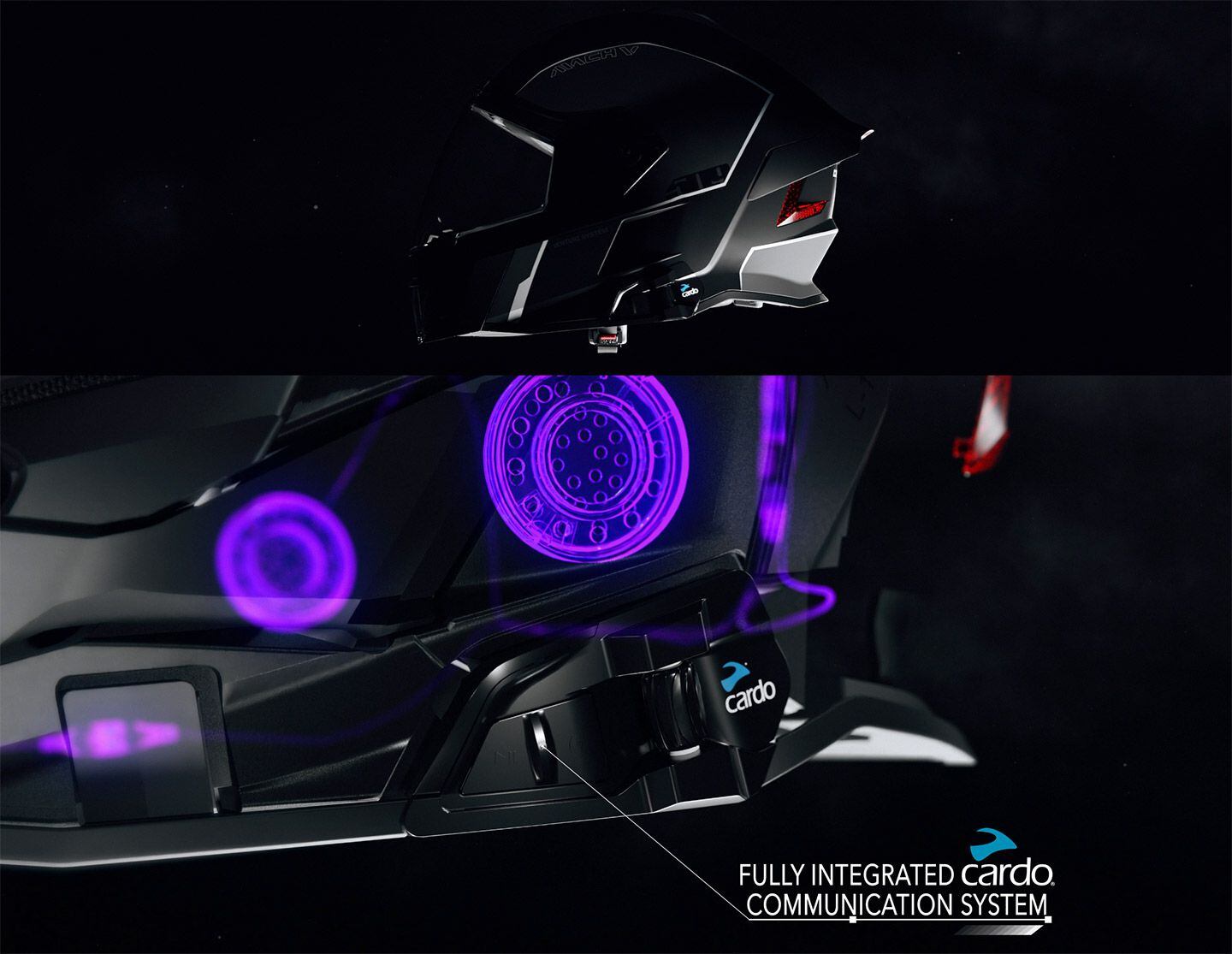
Cardo Systems and 509 transform motorcycle helmets with Cardo Systems fully integrated communication technology. (Cardo Systems/)Cardo Systems Press Release:
Cardo Systems, global market leader in wireless communication systems for powersports, has joined forces with leading powersports apparel brand 509 to introduce the Mach V Commander, a groundbreaking motorcycle helmet that transcends the conventional. The Mach V Commander features a fully integrated state-of-the-art Cardo communications system with in-helmet audio and microphone enabling seamless communication and connectivity for you and up to 14 users. The helmet also boasts the industry’s leading JBL sound quality and noise cancellation capabilities.
This innovative collaboration catapults 509 into the heart of the motorcycle community, as the Mach V Commander helmet sets a new standard for communication and connectivity on the open road. Marrying 509′s acclaimed craftsmanship with Cardo Systems’ cutting-edge communication technology, riders can effortlessly converse with fellow riders, manage calls, and enjoy music while on the move.
“As the vanguard of powersports communication, we’re thrilled to collaborate with 509 to help enhance motorcyclists’ safety and offer a fully integrated communication system to help make the riding experience even better,” said Shachar Harari, VP, Business Development & OEM at Cardo Systems. “This partnership presents a phenomenal opportunity to deliver best-in-class communication coupled with the renowned craftsmanship that both our brands are known for.”
Designed to be more than just a piece of protective gear, the Mach V Commander helmet by 509 represents a leap forward in motorcycle helmet technology. With the ability to effortlessly connect to 15 riders within a range of one mile, the Mach V Commander redefines communication on the open road. Its integrated Cardo System ensures crystal-clear audio quality, allowing riders to communicate with exceptional clarity amidst the ever-changing environments of the open road. Safety and comfort are paramount, with features like an impact-resistant visor, controllable chase light, and advanced moisture control contributing to an enhanced riding experience.
“We are elated to unveil the Mach V Commander helmet, featuring integrated Cardo Systems, to the vibrant street rider community,” said Bill Hartlieb, Global Product Director at 509. “Through our collaboration with Cardo Systems, we created a product that authentically elevates connectivity, convenience, and safety on the road.”
Innovation, safety, and seamless communication converge in the Mach V Commander helmet with integrated Cardo Systems. Designed for the modern motorcyclist, this collaboration between Cardo Systems and 509 sets a new standard in helmet technology. Discover the future of motorcycle helmets with the Mach V Commander by Cardo Systems and 509.
Key Features of the Mach V Commander Helmet with Cardo Communication System:
- <b>Group Communication</b>: With Cardo Communication System, riders can stay connected with up to 14 fellow riders within a range of up to 1 mile (1.6 kilometers) through mesh connectivity or connect via Bluetooth® for music, phone, or map capabilities.
- <b>Superior Audio Quality</b>: The integrated Cardo Communication System ensures crystal-clear sound, with JBL speakers and PSI (Pressurized Sound Isolation) earmuff system for isolation, passive noise canceling, and custom fit.
- <b>Voice Command and Hands-Free Operation</b>: Riders can keep their hands on the handlebars and their focus on the road, as the Mach V Commander Helmet supports voice commands for seamless operation, making communication effortless and intuitive.
- <b>Enhanced Safety and Comfort</b>: The Mach V Commander Helmet incorporates the safety performance features motorsports riders have come to expect from 509, an impact-resistant visor, controllable chase light, Fidlock® Magnetic Chinstrap, and excellent moisture control with the patent-pending Venturi Venting System.
The Mach V Commander Helmet with Cardo Communications System is available for purchase on Ride 509 and at authorized 509 retailers nationwide.
-
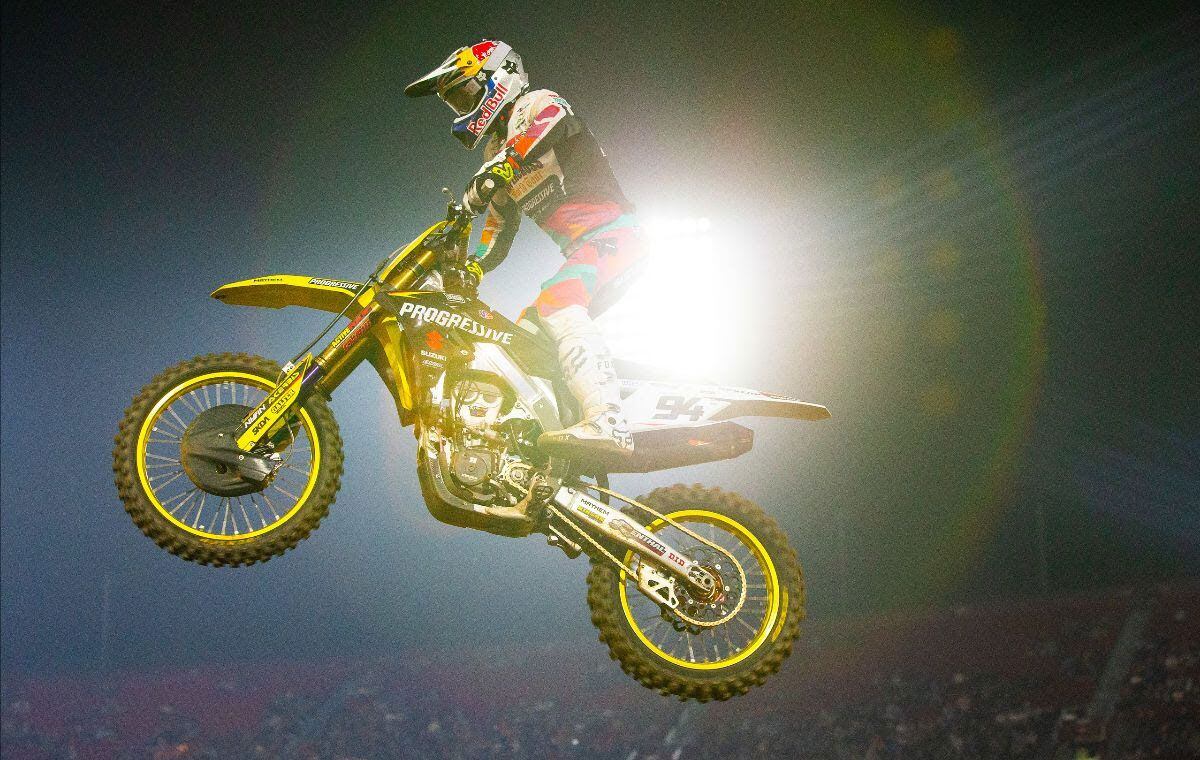
Ken Roczen and HEP have brought a new level of success and excitement to Suzuki racing in 2023. (Suzuki/)Suzuki Motor USA Press Release:
Suzuki Motor USA is thrilled to announce an extension to the partnership with elite athlete Ken Roczen and HEP Motorsports. Ken Roczen and HEP have brought a new level of success and excitement to Suzuki racing in 2023, and Suzuki is pleased to be able to partner with Ken Roczen again for 2024.
In 2023, Ken Roczen and the HEP Motorsports’ Progressive Insurance ECSTAR Suzuki team delivered a consistent and successful season of racing, including an incredible win at the Indy Supercross, several podium finishes, and a tie for third place in the AMA Supercross Championship.
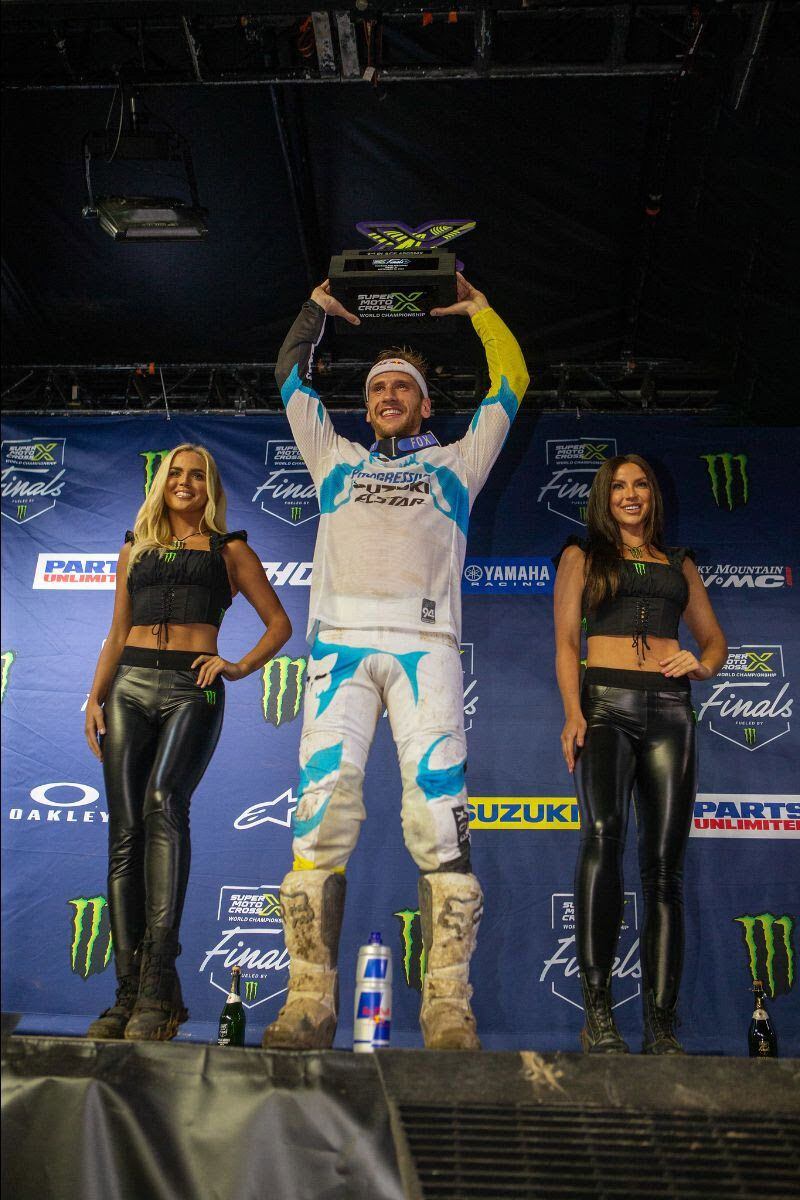
A Moto 2 win gave Ken Roczen second place overall at the Chicagoland Speedway. (Suzuki/)In addition, Ken Roczen gave Suzuki fans across the country a thrilling end to the season in the SuperMotocross World Championship by claiming key podium positions, taking another impressive win in the second moto at the Chicagoland Speedway, and two second place finishes in the final race at the LA Memorial Coliseum to secure second place in the inaugural SuperMotocross World Championship.
“I am extremely excited to re-sign with the team,” said Ken Roczen. “We have done some amazing things so far in 2023 and I am really eager to do even better things in 2024. It has been one of the most fun and rewarding years of my career and I am happy to keep it going.”
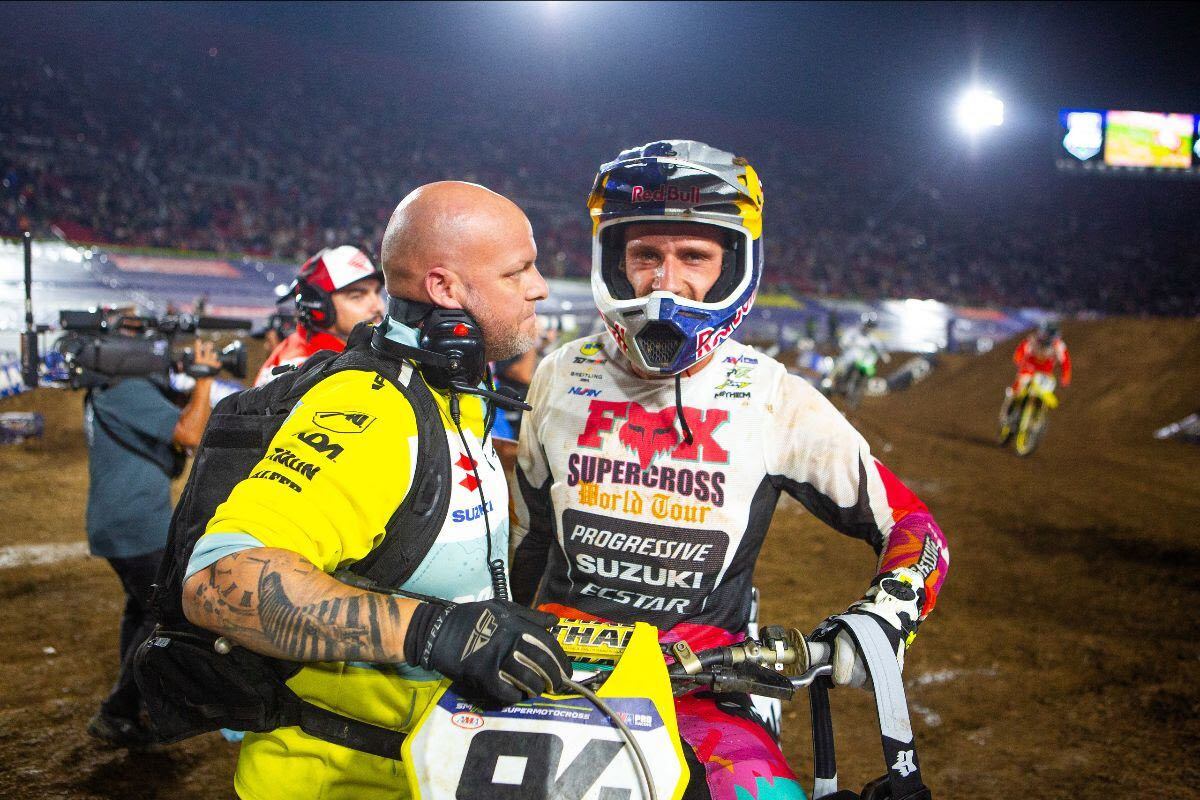
Ken Roczen earned an impressive second place overall in the SuperMotocross World Championship in Los Angeles. (Suzuki/)“Excited to have Roczen back on the team for 2024,” said Team Manager, Larry Brooks. “We came a long way from the beginning of the year to being one of the top competitors. Every time Ken Roczen raced, he was in contention to win. The whole team, including Ken himself, worked extremely hard and it showed in the results. When I took a step back and looked at what we’d done, I was really impressed. I am sure Ken will have continued success in 2024.”
“Everyone at Suzuki is really thrilled to be able to partner with Ken Roczen again in 2024,” said Chris Wheeler, Motorsports Manager at Suzuki Motor USA, LLC. " Kenny has brought a new level of racing performance and excitement to Suzuki this year and we look forward to continuing that performance with Kenny in 2024!”
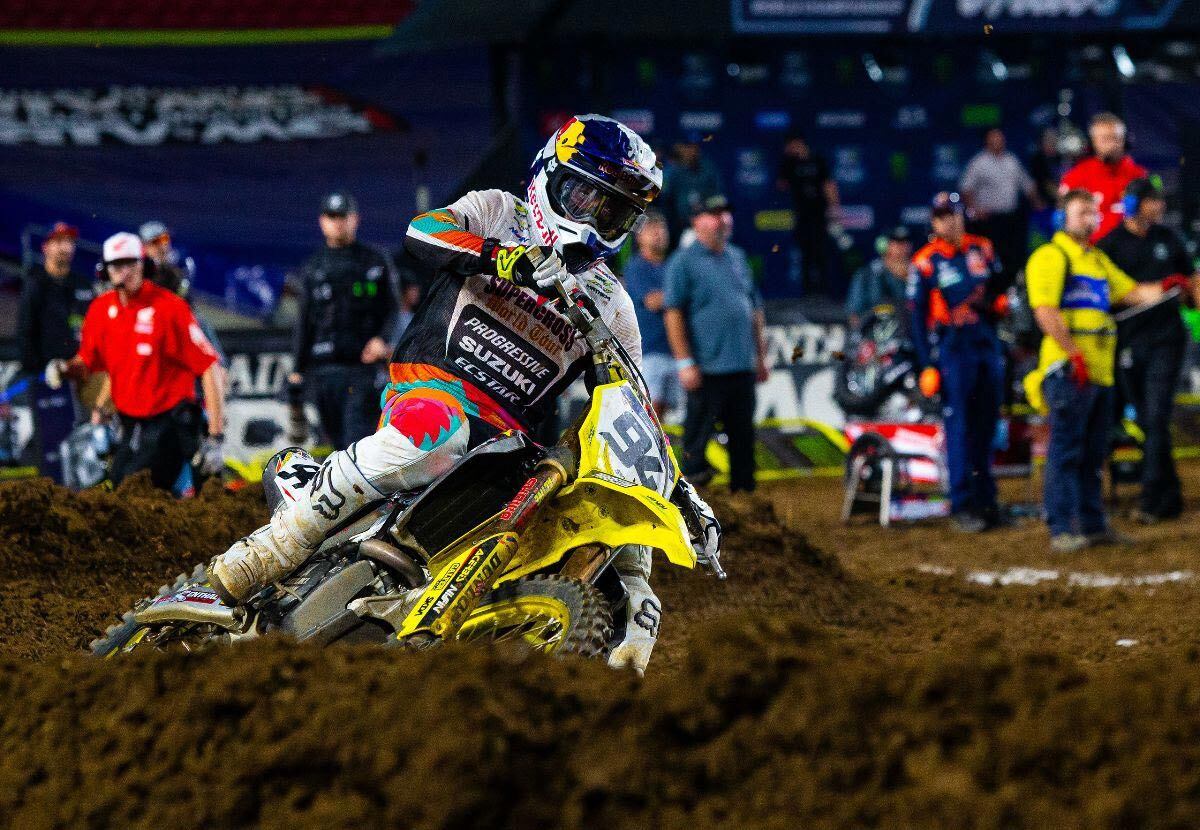
Ken Roczen’s podiums and race wins proved the competitive performance of the Suzuki RM-Z450. (Suzuki/)Suzuki’s RM-Z450 and RM-Z250 are poised for more competition excitement in 2024 and beyond. Suzuki is excited to continue its successful racing heritage with Ken Roczen as they compete in the 2024 SMX World Championship and look forward to seeing the continued enthusiasm and loyalty of the RM Army. The 2024 SMX League season debuts in January 2024 at Angel Stadium for Anaheim 1.
-
Improving the suspension and adding stronger, lighter wheels show how serious it is about off road riding.
-
KTM has developed the reputation for making some of the most hard-hitting, off-road-capable adventure bikes on the market. The “Ready to Race” company slogan is apparent in every model the company makes, but for 2023, the Austrian manufacturer went a step further with the 890 Adventure R. Heavily influenced by its Dakar-winning 450 rally bike, the 2023 KTM 890 Adventure R received a slew of updates to further progress its off-road capabilities including reworked WP Xplor suspension, updated lean-sensitive ABS and MTC (Motorcycle Traction Control), redesigned bodywork, and a revised TFT display.
The 889cc parallel-twin powerplant remains the same for 2023. Its liquid-cooled DOHC design utilizes 46mm throttle bodies, a six-speed transmission with an optional up-and-down quickshifter, and a PASC (Power Assisted Slipper Clutch) with cable actuation. Before hitting our in-house dyno, the 2023 KTM 890 Adventure R measured 477 pounds on our automotive scales. On our Dynojet 250i dynamometer, the 890 Adventure R produced 93.3 hp at 8,500 rpm and 64.4 lb.-ft. of torque at 6,700 rpm. For reference, the 2023 Ducati DesertX, weighing 518 pounds on our automotive scales, recorded 93.7 hp at 9,000 rpm and 57.1 lb.-ft. of torque at 6,200 rpm.
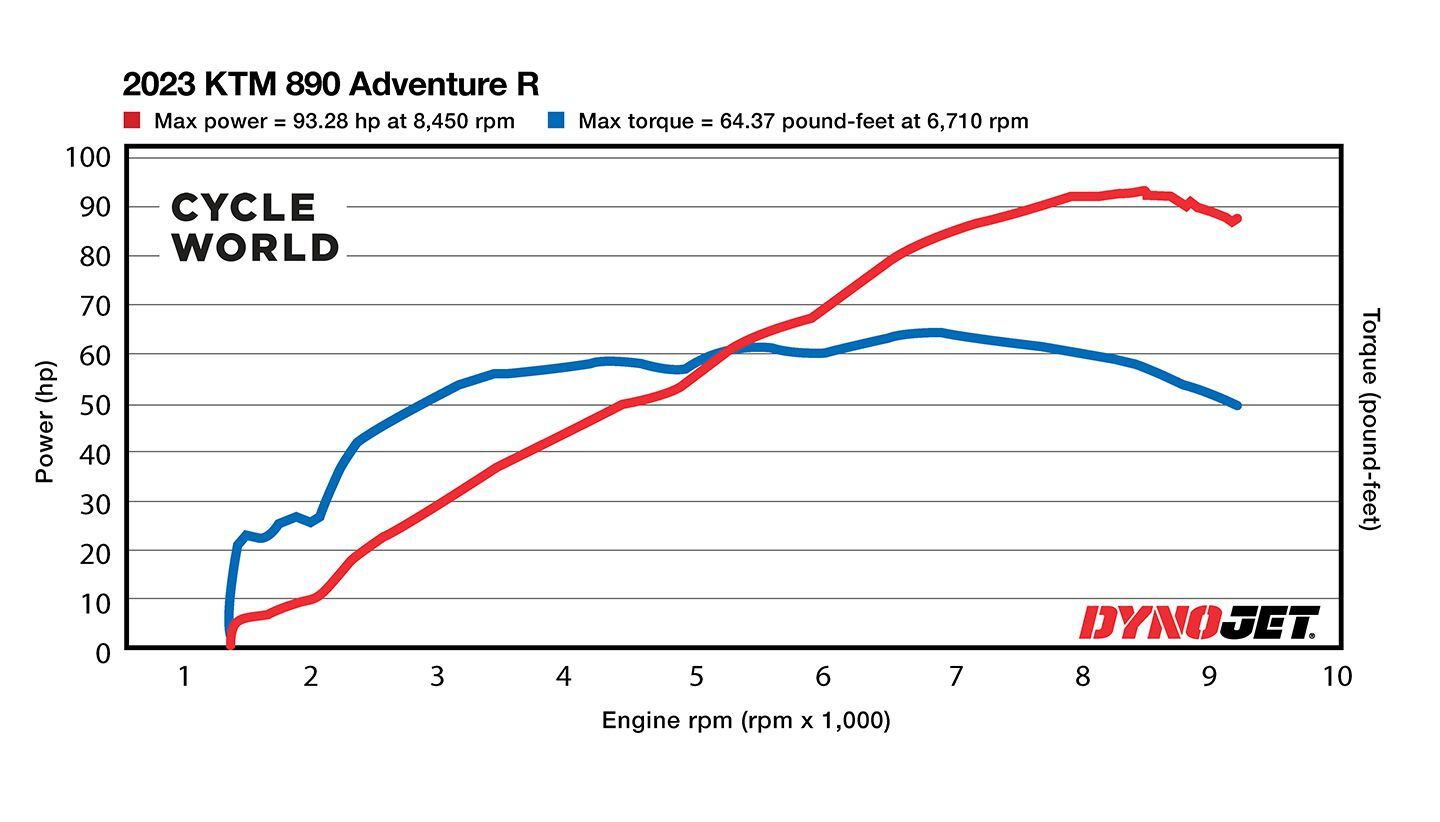
2023 KTM 890 Adventure R Dyno Chart. (Robert Martin/)The 2023 KTM 890 Adventure R is, pound for pound, one of the highest performing adventure bikes available. Its relatively light curb weight, powerful engine, and capable chassis confirms the 890 Adventure R is designed for the hardcore adventure rider. The quick-revving 889cc parallel twin delivers linear power and a relatively flat torque curve, great for all riding conditions. And because this middleweight ADV has a large range of adjustability through the available ride modes, the 890 R can be turned up or tamed down for just about any riding conditions.
-
The house of Hinckley more clearly delineates the differences between the XE and X models for a wider range of riders.
-
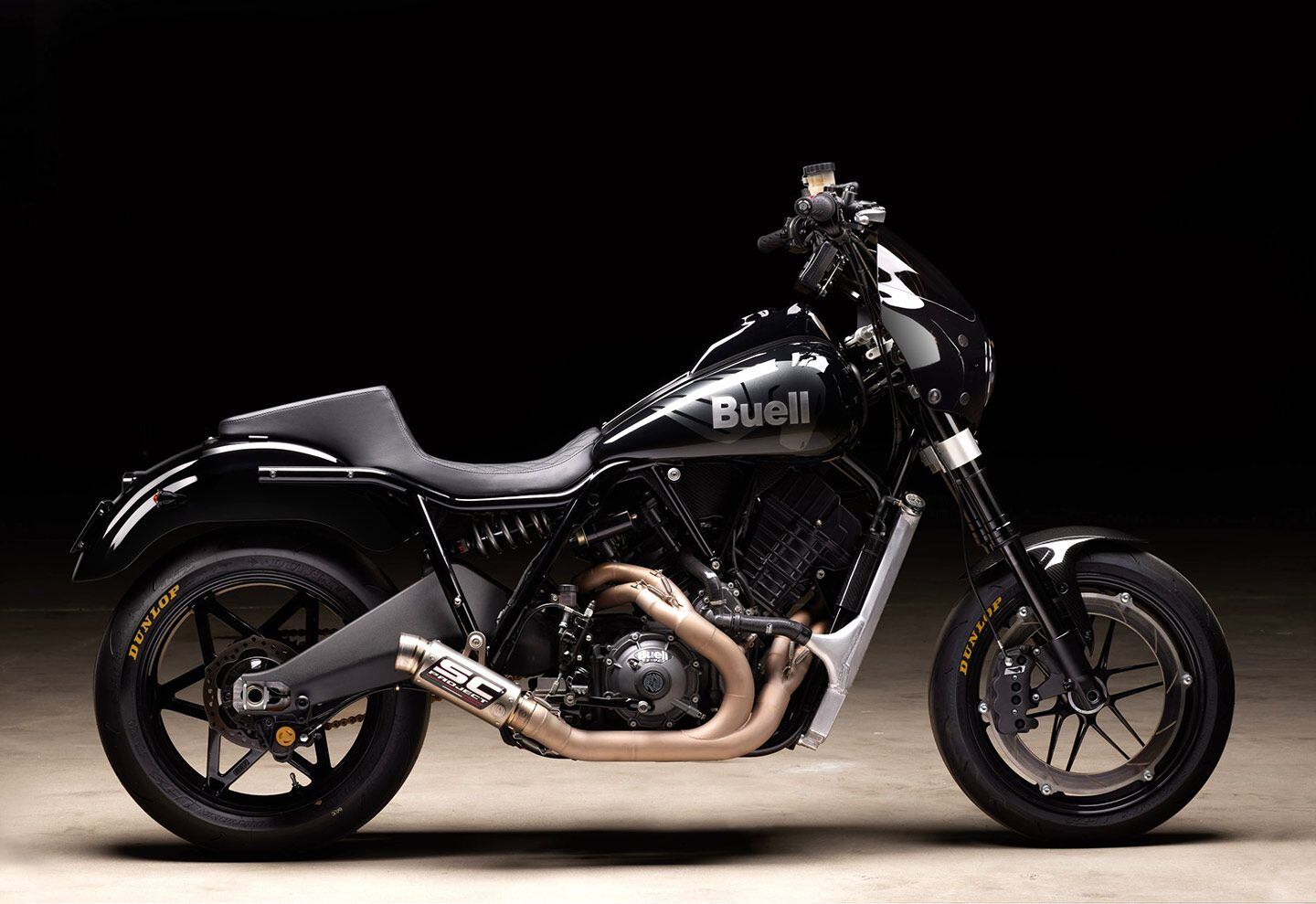
Buell’s high-performance 2025 Super Cruiser (preproduction model shown) has already attracted plenty of potential buyers. (Buell/)Even to the very end of its first run in 2009—when then-owner Harley-Davidson unceremoniously pulled the plug—Buell was known as a unique brand that never failed to provoke debate with its innovative products. No wonder the latest incarnation of the Buell Motorcycle Co., which resurfaced in 2021, seemed determined to take the same path when it unveiled its new Roland Sands–designed Super Cruiser concept back in February. Buell Nation was predictably stoked, but other riders took notice too; the company says that, in just six months, it has amassed over $120 million in preorders for the new cruiser, which won’t hit the production line until 2025. (Not to point out the obvious, but that’s an awfully long time from now.)
Related: Buell Motorcycles Is Back
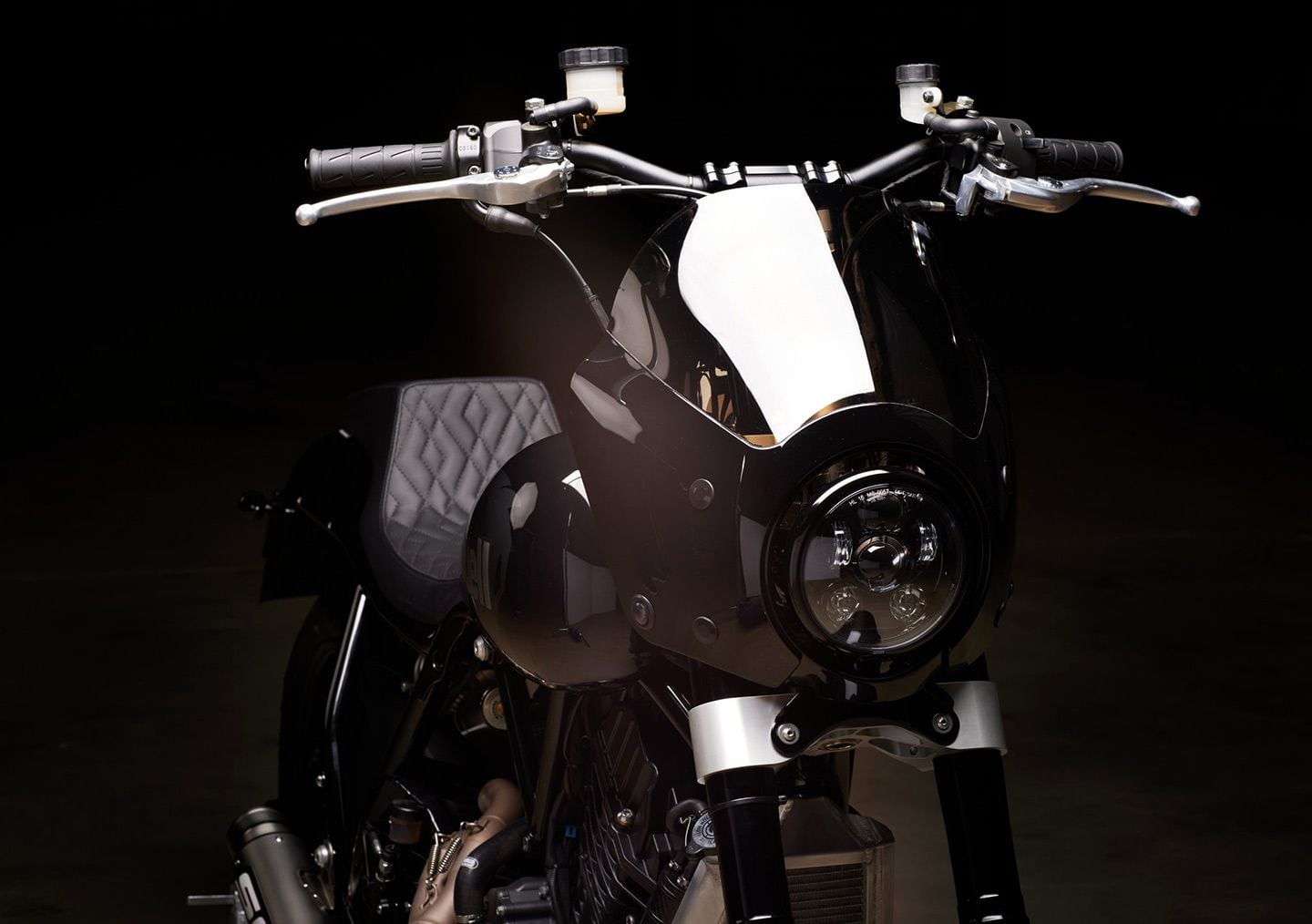
With its tall handlebars, mini-fairing, and superbike-level power claims, the Roland Sands–designed model has distinct echoes of H-D’s FXR. (Buell/)Bill Melvin, CEO of Buell, was happy to take a victory lap, saying, “Americans love style, muscle, and performance. The Super Cruiser breaks the mold for all three, and the response shows that Buell simply nailed it. This is utterly unheard of for an American V-twin.”
In case you missed the initial hubbub, the high-performance streetbike is being designed and built in collaboration with Roland Sands Design. Sands says he was tasked with “using as much of the standard Buell rolling kit” as was possible in initial meetings with Melvin, so it’s likely everything from the inverted Showa fork to the 17-inch alloy wheels with signature perimeter braking system will appear on the Super Cruiser, as well as the 1,190cc liquid-cooled ET-V2 V-twin—all of which appear to be visible on these company-provided photos. Sands says he had to engineer his own steel tube frame and get the chassis to sync with the swingarm, fork, wheels, and brake system, but as the Super Cruiser is still being billed as a concept, most other details remain opaque.
Related: 2025 Buell Super Cruiser First Look
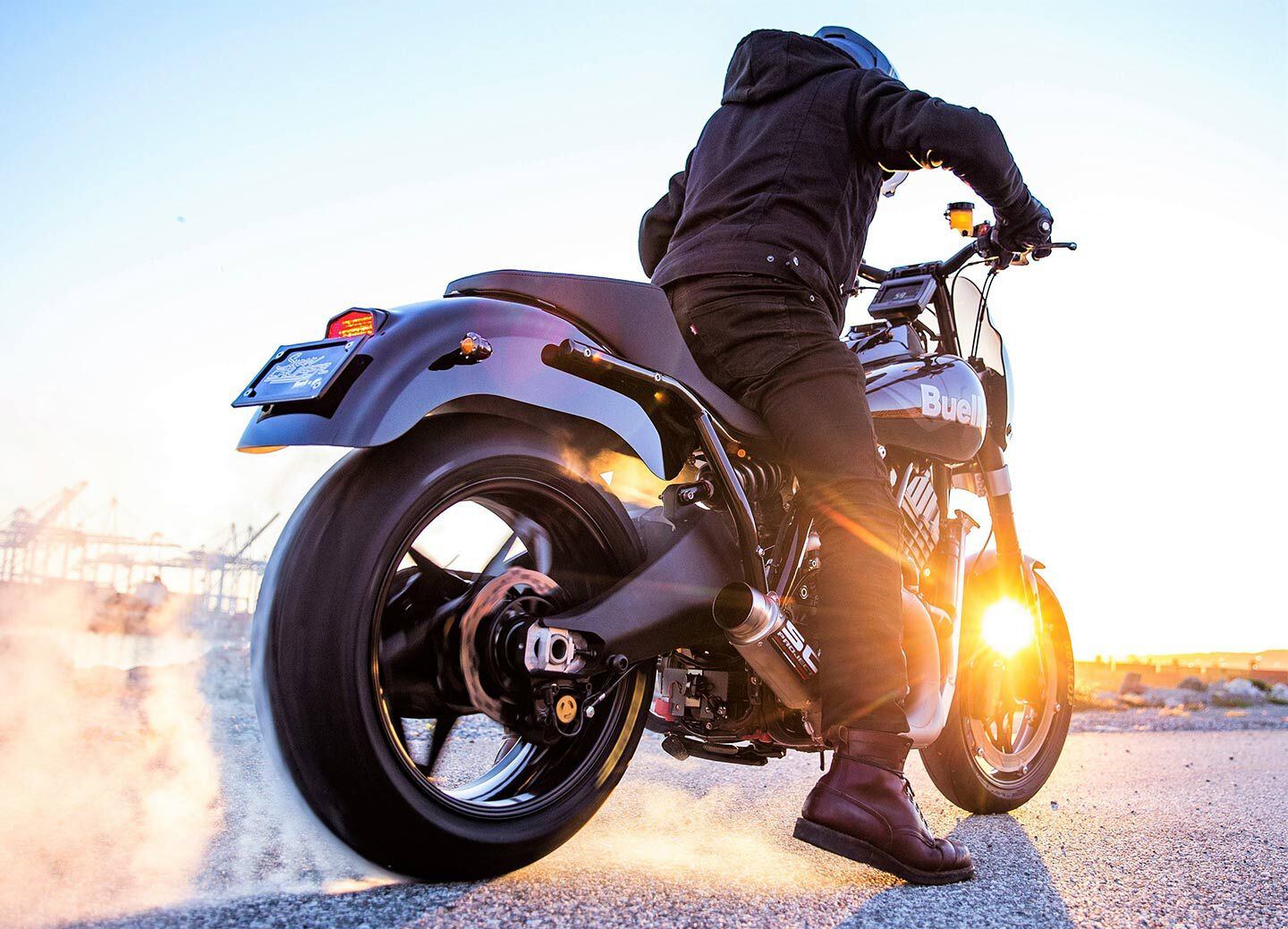
Buell’s liquid-cooled 1,190cc ET-V2 V-twin (detuned from the 185 hp version in the Hammerhead) is stuffed into an RSD-designed chassis and rolls on 17-inch wheels. (Buell/)There’s no question where styling inspiration comes from though; the Super Cruiser owes its entire silhouette to and leans heavily on Harley FXR cues, and what the company calls “the West Coast cruiser aesthetic.” Sands has admitted as much, saying, “(...the FXR was) potentially one of the best-handling Harley-Davidsons that’s ever been built. We wanted to take advantage of that heritage and connection with Buell.” Who knows; with a claimed weight of 450 pounds and an also-impressive 175 hp, the Super Cruiser may very well land at the top of the performance cruiser pyramid—if everything goes to plan, anyway.
Part of that plan, according to Buell, which has set up shop in Grand Rapids, Michigan, to assemble its bikes by hand, is to have 10 models in the portfolio by 2024. The Buell Hammerhead 1190, Super Touring 1190, and even a Buell Baja Dune Racer have all made their public reveals at this point (though some only in prototype form) and lineup expansion is expected to continue from there, with additional sport, touring, and adventure bikes said to be on the way. To the list you can add the highly anticipated Super Cruiser, which will enter production in 2025; Buell has estimated it will likely “retail in the $20,000–$30,000 range.”
More details, some specs, and preorder info can be found on buellmotorcycle.com.
-
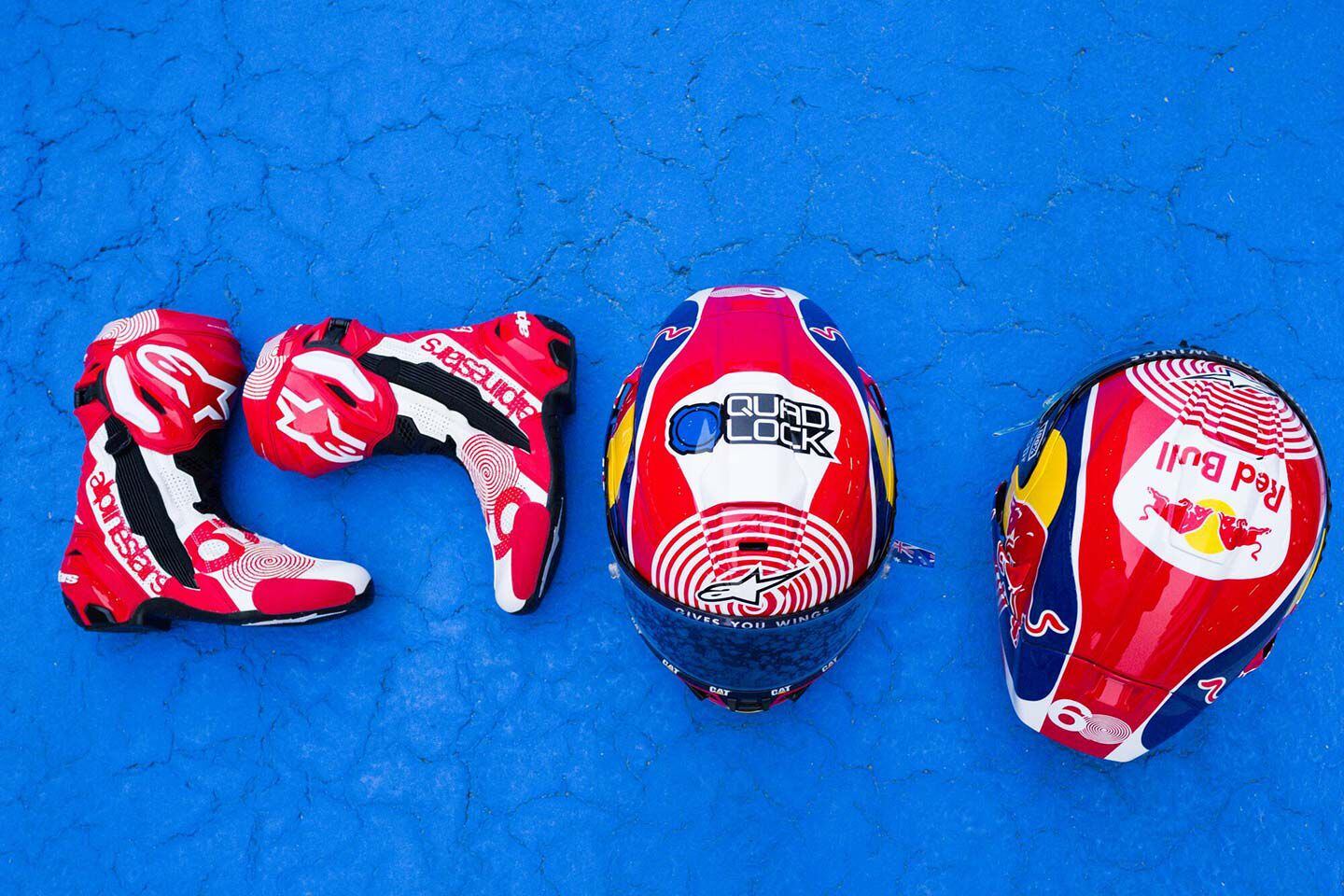
A sample of Alpinestars’ 60th Anniversary kit worn by Jack Miller. (Alpinestars/)There’s no denying the passion that runs through Alpinestars, but in case you needed reminding, the company launched a short video celebrating 60 years of racing and innovation, with no shortage of shots that’ll pull on your heartstrings.
Founded by Sante Mazzarolo in 1963, Alpinestars has grown into one of the most recognizable manufacturers of motorsport racing products, airbag protection, apparel, footwear, and helmets. On any given weekend, products are being put through their paces in Formula 1, NASCAR, MotoGP, World SBK, AMA Supercross and Motocross, MXGP, Dakar, and countless more race series the world over. All this to support Alpinestars’ core mission: Race on Sunday, in order to innovate on Monday.
Narrated by Keanu Reeves, Alpinestars’ 60th anniversary video gives a glimpse into what that process looks like, and what drives Alpinestars to this day. Whether you wear Alpinestars gear or not, we guarantee it’s worth a watch. Of course, there’s more to the story, as Alpinestars recently decked out its sponsored athletes in specially designed gear to celebrate the milestone.
In case that wasn’t enough, Alpinestars followed up the 60th anniversary celebrations with a new collaboration between it and Anti Social Social Club. The MotoGP-inspired collection includes a leather jacket, boots, hoodies, T-shirts, hats, and more. Popular? You could say so—the collection sold out almost immediately.
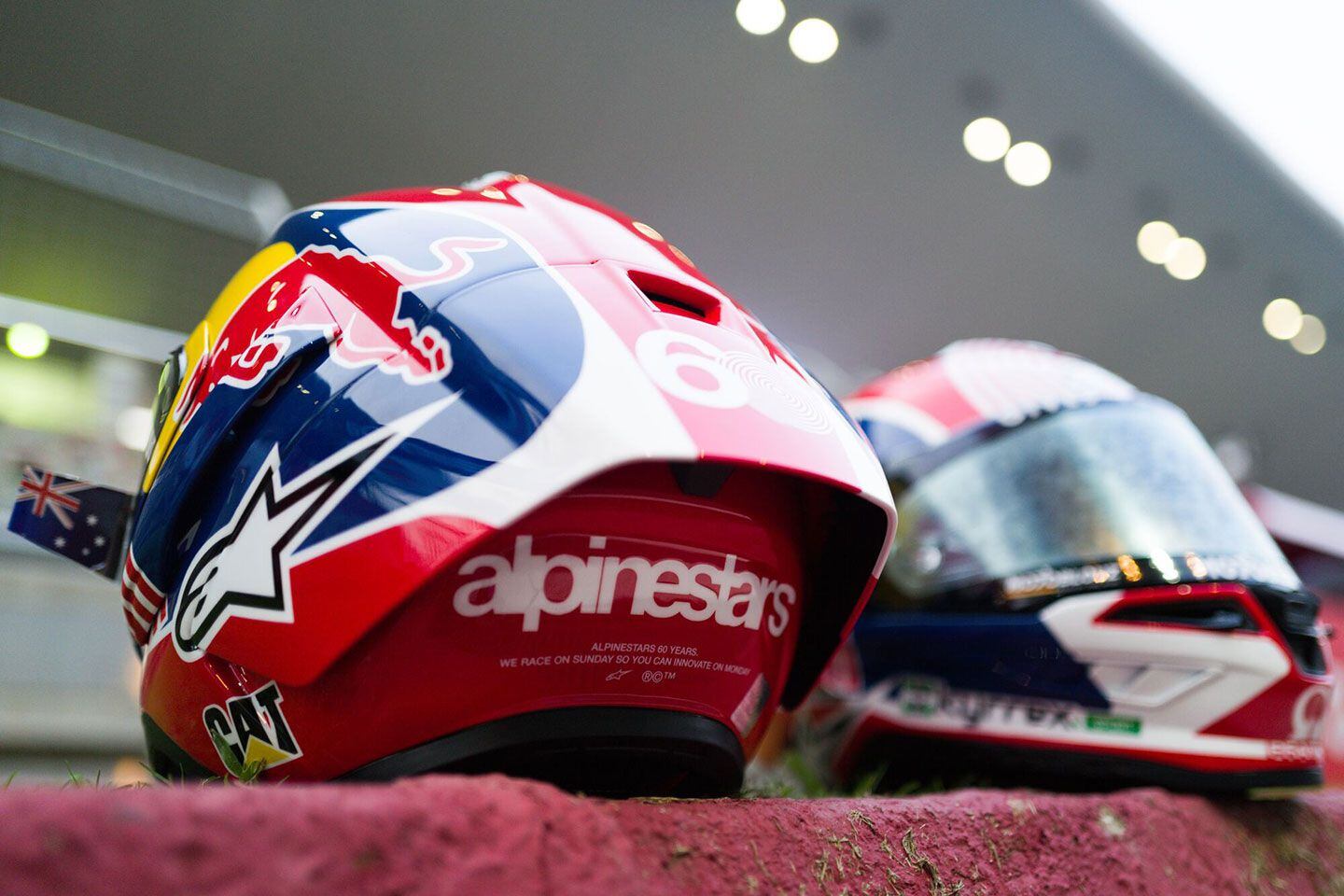
Jack Miller’s Alpinestars Supertech R10 helmet in a special 60th anniversary graphic. (Alpinestars/)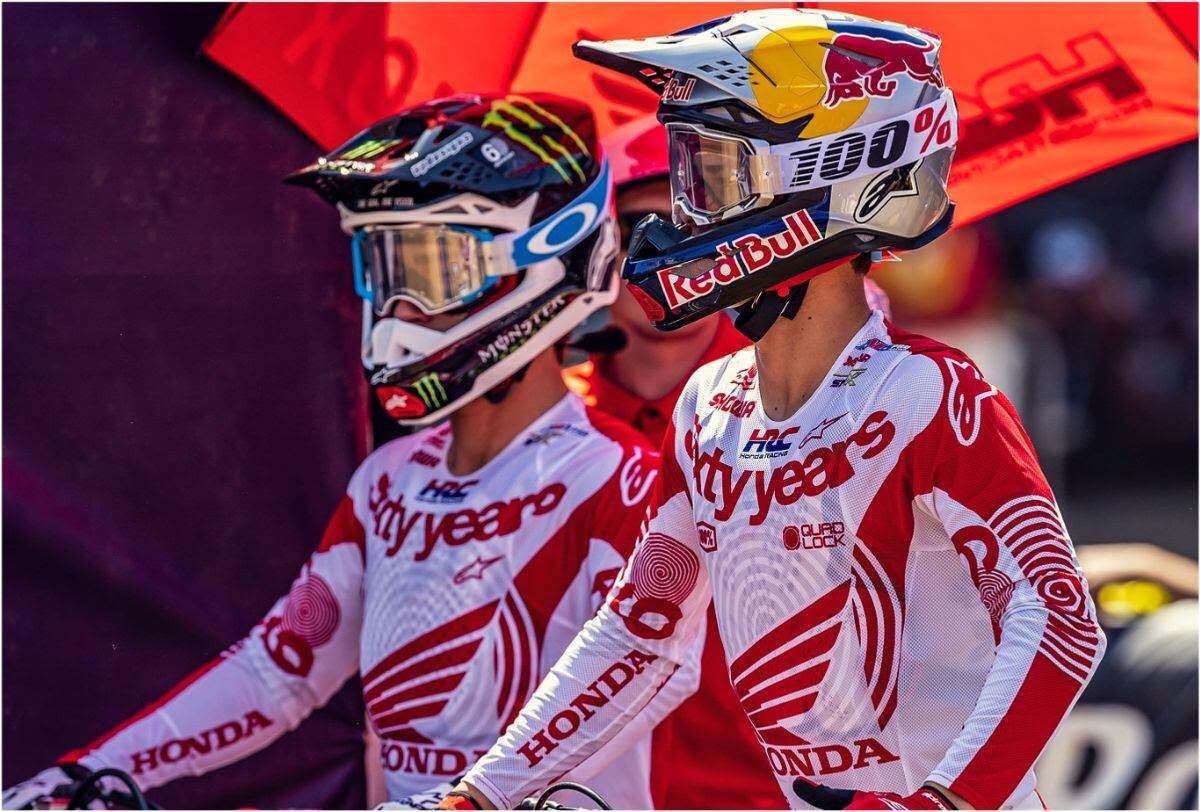
Chase Sexton and Jett Lawrence sporting special 60th anniversary gear at the SuperMotocross World Championship finals in LA. (Alpinestars/)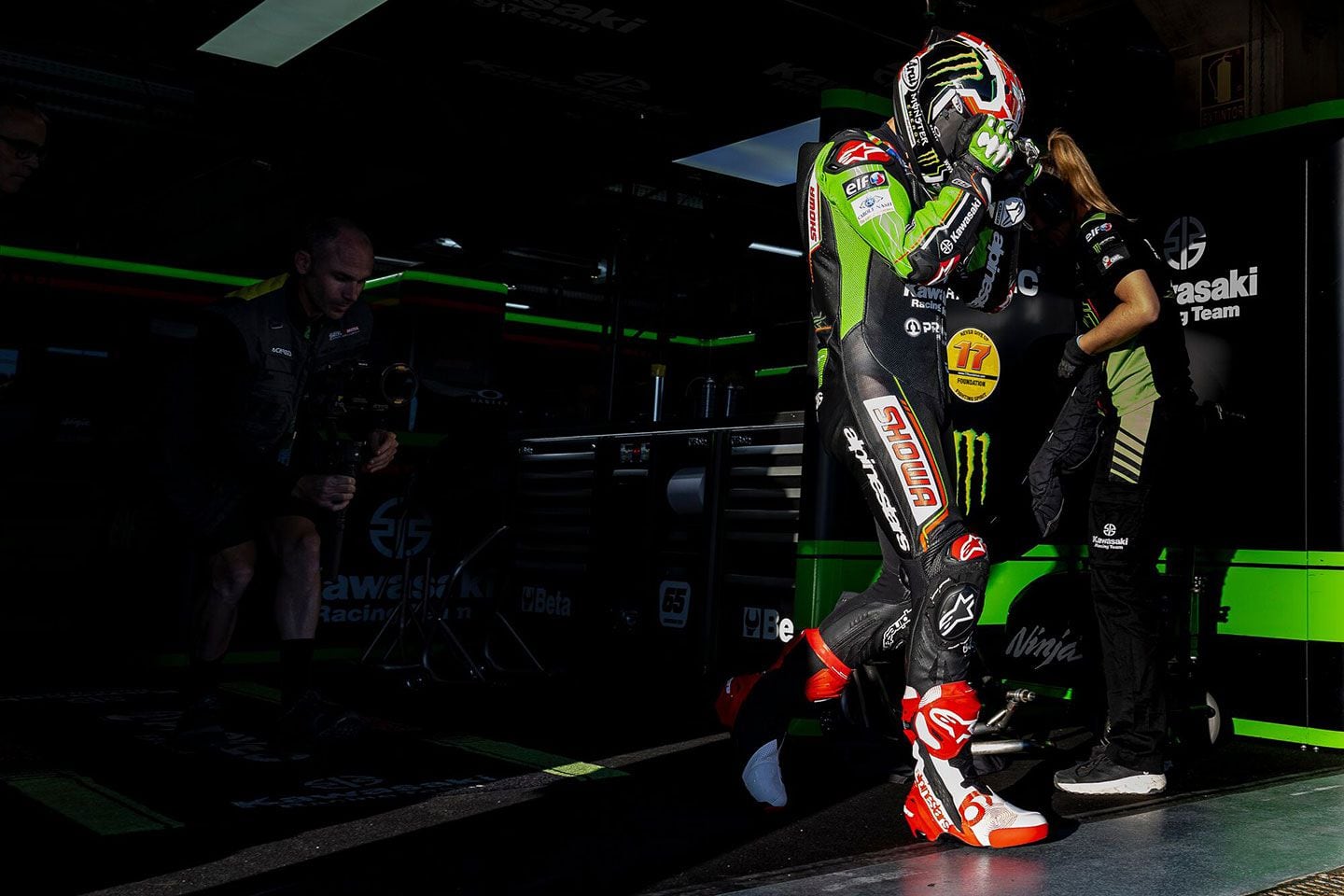
Jonathan Rea in 60th Anniversary Supertech R boots. (Alpinestars/)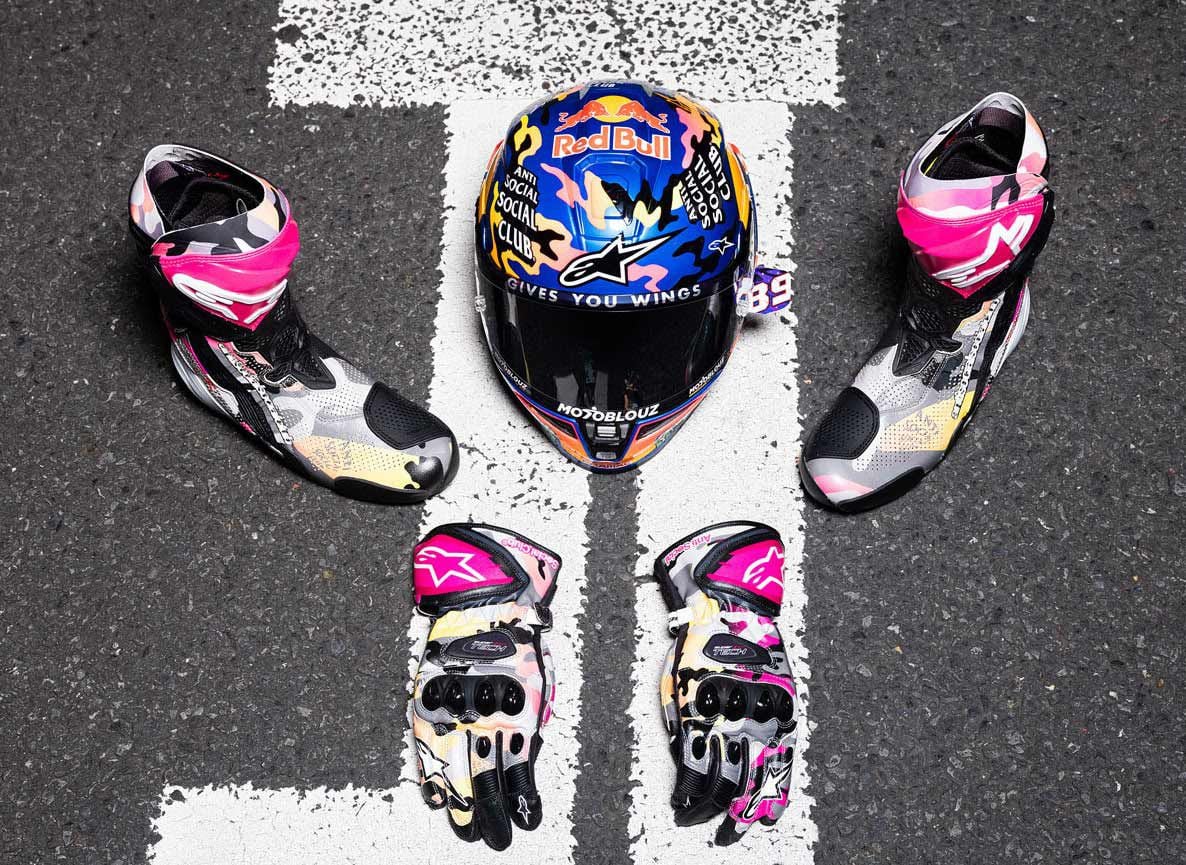
Jorge Martín’s Alpinestars x Anti Social Social Club gear worn during the Japanese GP. (Alpinestars/)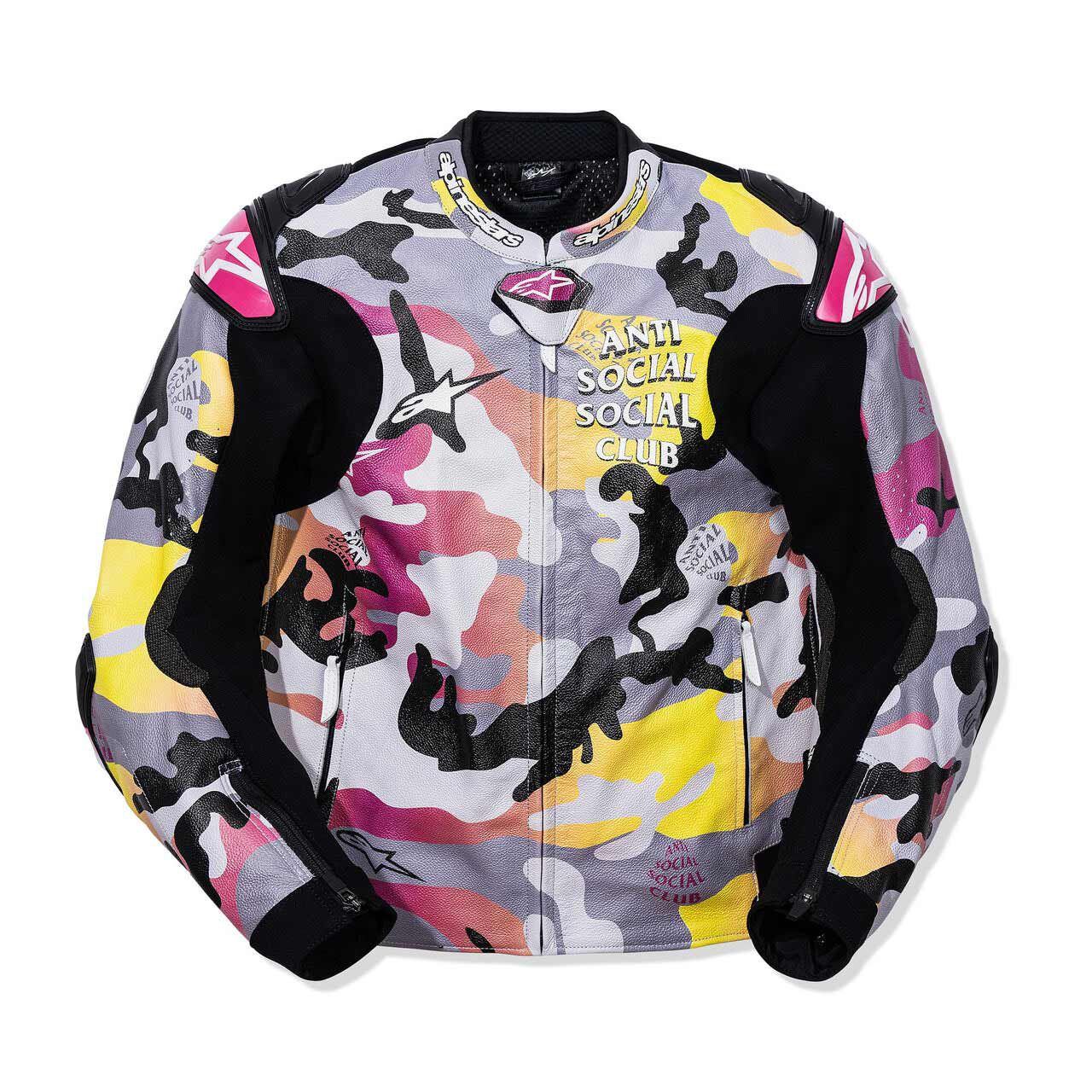
The Alpinestars x Anti Social Social Club collaboration included this leather jacket, along with boots and apparel. (Alpinestars/) -
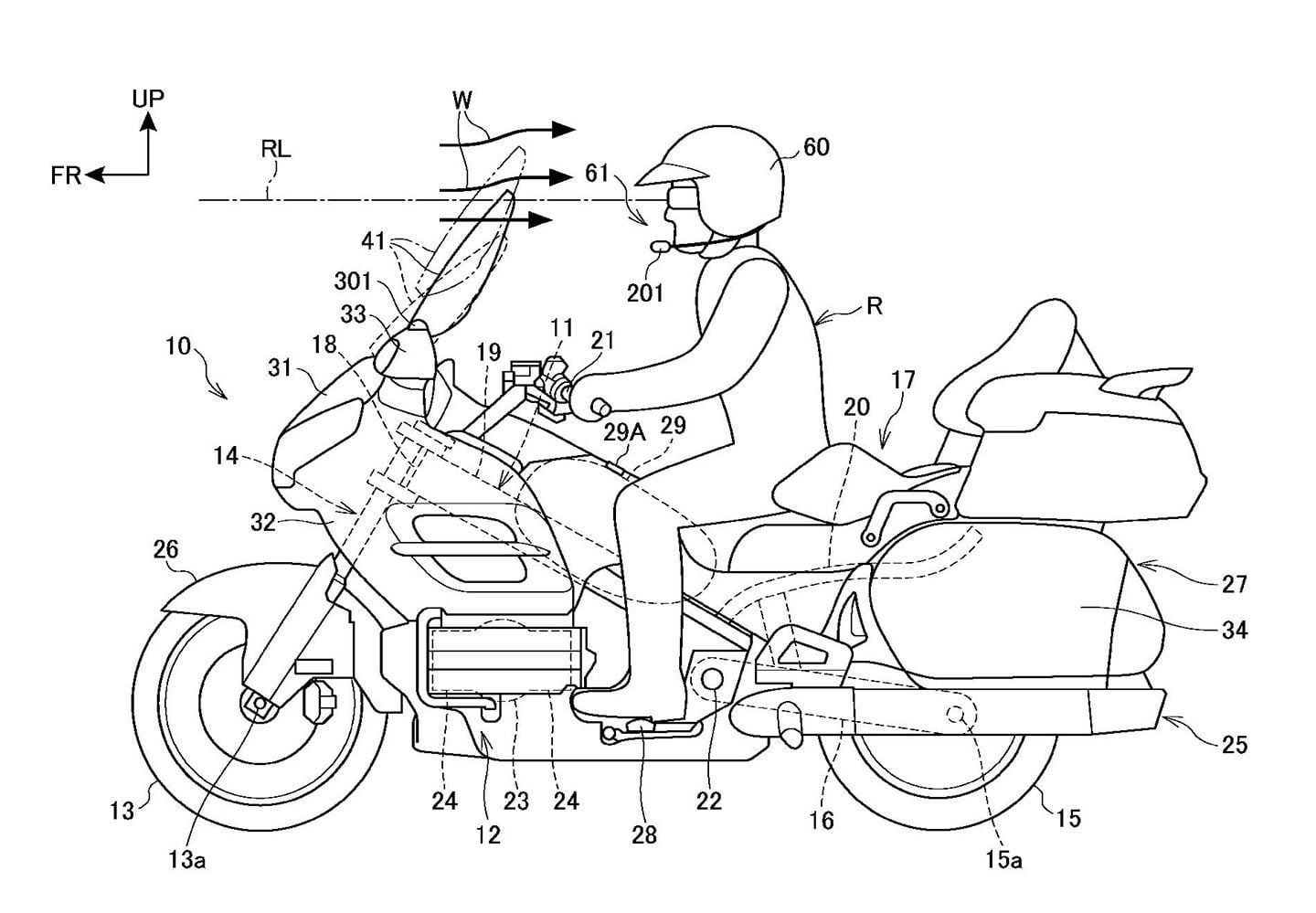
Honda is working on a series of technology features including an auto-adjusting windshield, designed to reduce wind noise for voice-activated features. (Honda/)Honda’s Gold Wing has been a platform for futuristic technology for decades, and now the company is working on a self-adjusting windshield intended to make it more comfortable and effort-free than ever before.
It might seem unnecessarily decadent to make windshield adjustment into a computer-controlled process, including microphones and even cameras to find just the right height and angle for every scenario, but there’s method behind the madness. Honda is working on a growing number of voice-controlled systems for future versions of the Wing and reducing wind noise to make sure the rider’s voice is clearly audible is an essential element in making those a success.
Related: Honda’s Active Rider-Assist Bodywork
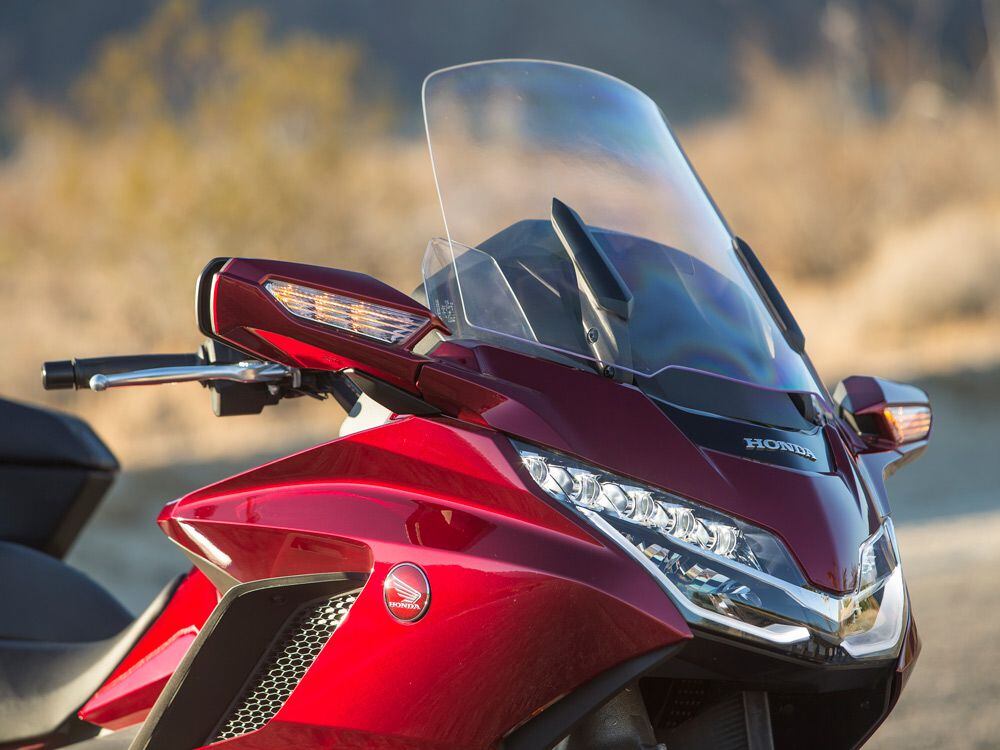
In 2018 the Honda Gold Wing received an electronically adjustable windscreen. (Jeff Allen/)The patent application for Honda’s auto-adjusting screen, filed in Japan, shows that the components include a microphone mounted on the rider’s helmet (although further patents also show a tank-mounted mic for voice control systems), plus a pair of cameras sitting on top of the mirrors and facing back toward the rider’s face. These, along with a bar-mounted control switch, feed their information to an ECU that controls the screen via the same sort of electric adjustment system that was introduced to the Gold Wing in 2018.
Related: Honda Crash-Detection System

A side view of the windshield on the proposed Honda Gold Wing. (Honda/)In its simplest form, the microphone picks up wind noise and, allied to information about the bike’s speed, raises or lowers the windshield to reduce the noise and buffeting. However, that automation introduces the need for the camera system. Honda recognizes that in some positions the electric windshield is going to be a distraction to the rider, particularly if the screen’s upper edge is directly in his or her sightline. Since riders come in a variety of shapes and sizes, the patent explains that the cameras are used to monitor the position of the rider’s eyes, employing that information to generate a zone of heights that the windshield won’t stop inside, instead settling for whichever position above or below that zone is closest to ideal when it comes to reducing noise.
Related: Honda Rider-Assist Project Gains Momentum
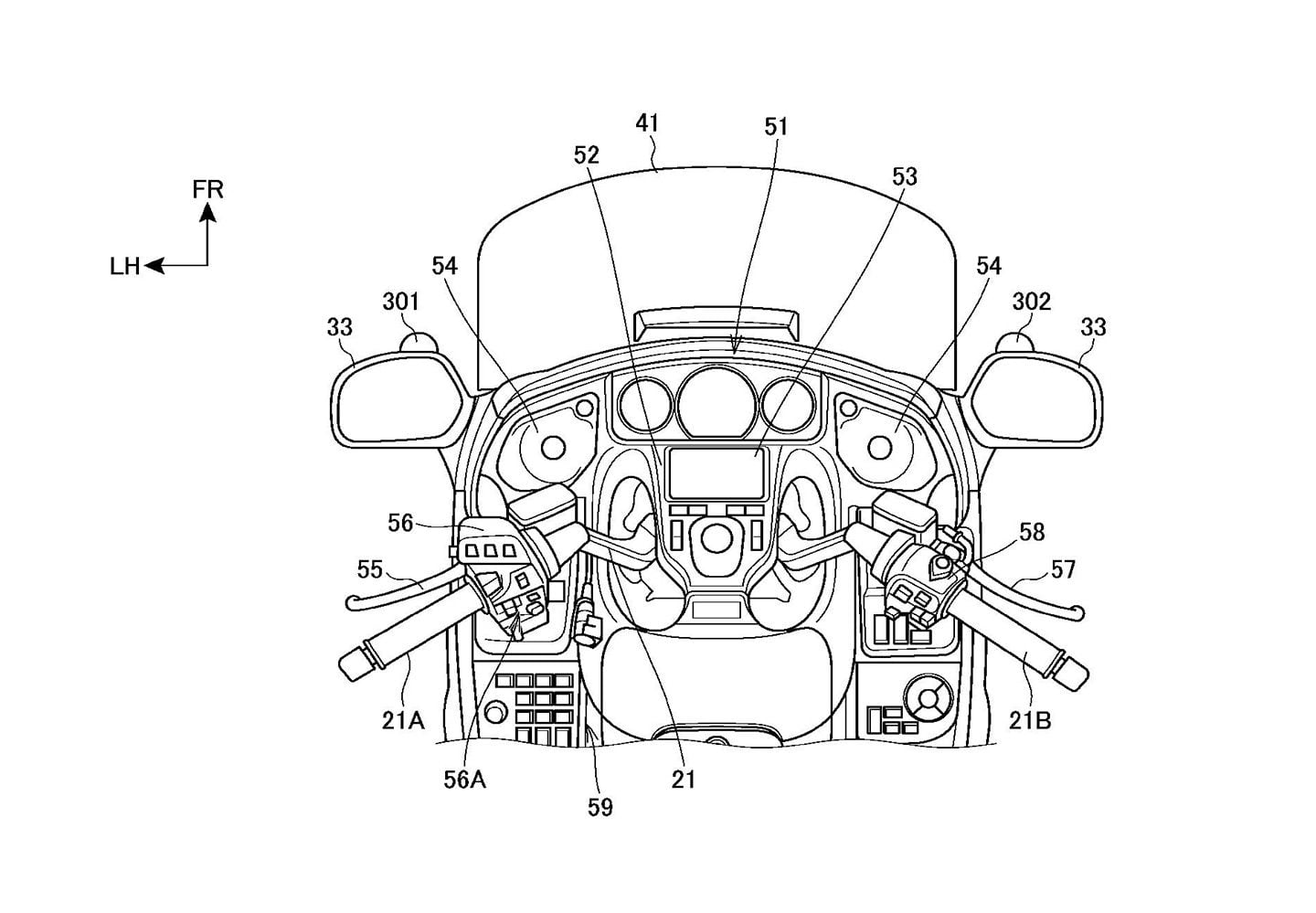
A view of the cockpit shows the mirror-mounted cameras (301 and 302) that would determine the height of the rider’s eyes to determine an nonintrusive shield level. (Honda/)Over and above that system, Honda envisages different “maps” for the screen’s adjustment, creating “wind protection priority” and “vision priority” settings that can be selected from the bars. Pick wind protection priority and the screen will occasionally impinge on the edges of the no-go zone in pursuit of minimizing noise. Choose vision priority and it will stay well clear of that sightline zone, even at the expense of additional noise.
The patent can be added to a growing pile of innovations that Honda’s R&D department has been working on for the Gold Wing. We’ve previously seen that Honda intends to introduce front and rear radars to the bike to enable a raft of rider-assist systems including adaptive cruise control, blind-spot warnings, and crash-mitigation braking, and there’s even work underway on more extreme rider aids including a steering-assist system. With rivals starting to get ahead on some tech, particularly radar and camera setups to “see” the bike’s surroundings and other vehicles, an updated Gold Wing might be coming sooner rather than later.
-
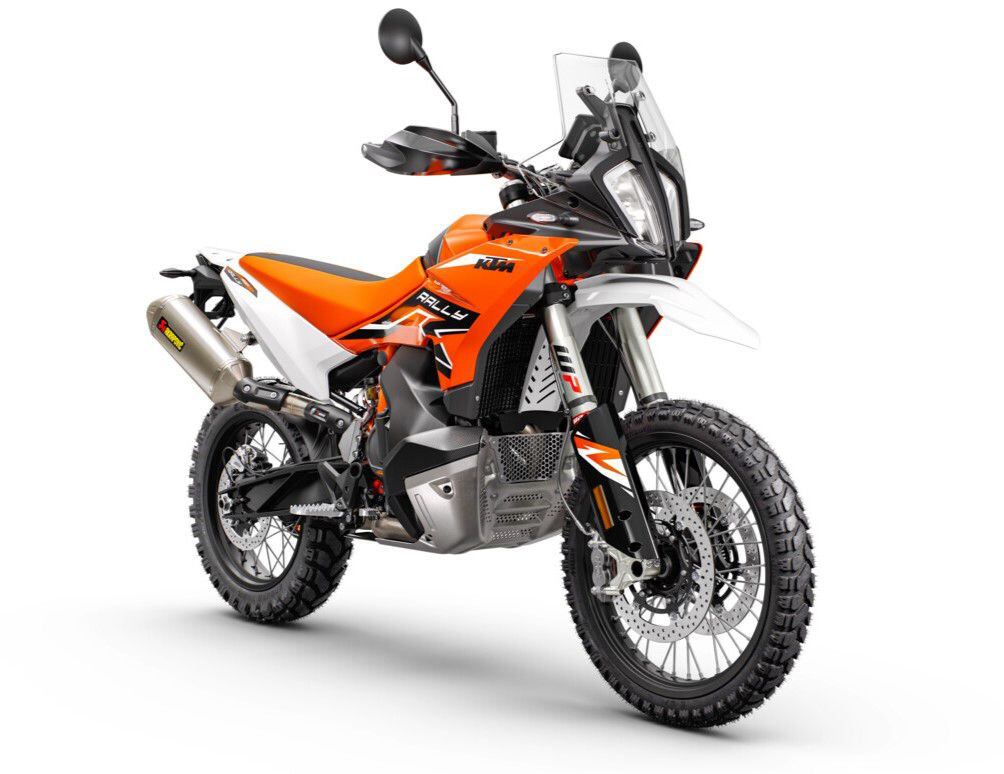
KTM’s exclusive 890 Adventure R Rally sold out in just three days—but a few more will be available next year. (KTM/)It was the top silver-lining motorcycle story of the pandemic: After years of flat or declining sales across large swaths of the industry, there was one segment that was absolutely exploding—the off-road and adventure motorcycle categories. The MIC reported significant interest in “dual-purpose motorcycles,” with new-model sales jumping 22 percent from 2019 to 2020, and another 18 percent in 2021.
In 2023 it looks like the ADV trend shows no signs of slowing and for proof look no further than the 2024 KTM 890 Adventure R Rally, which opened preorders on September 20. Seven hundred examples of the substantially updated model were to be released to the global market, but after just three days, the entire 2024 allotment was snapped up. The good news? KTM says there will be more units available at select dealers when the bike arrives early next year.
Related: 2023 KTM 890 Adventure R First Look
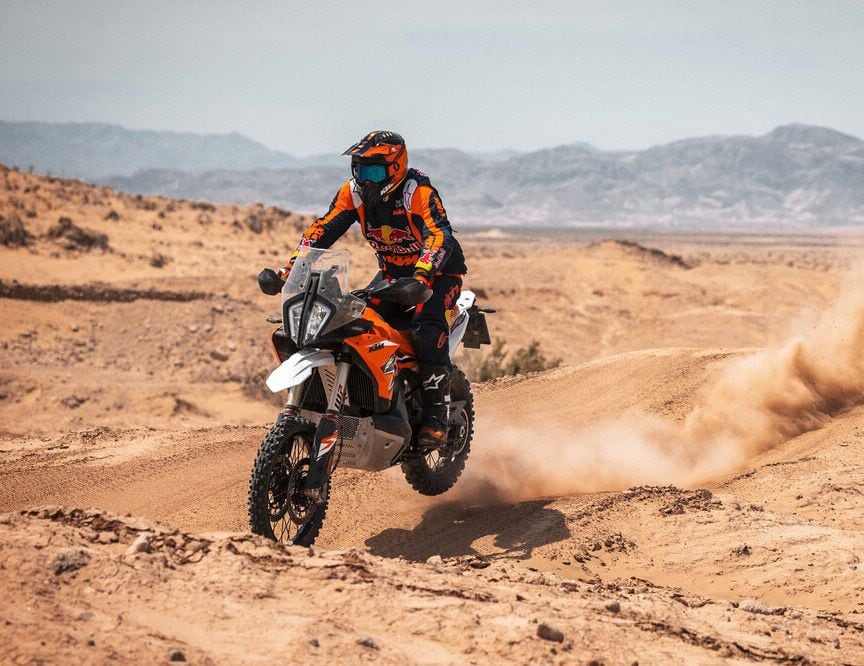
The rally-spec’d 890 Adventure R Rally is upgraded for 2024, so interest has been high. (Marcus Berger for KTM Motorcycles/)How many more? Details are vague, but you can bet with a limited-edition model like this, it’ll only be a handful. The firm says only that “a small reserve will also be made available at select dealers in the spring of 2024,” so there’s a sliver of hope yet.
No doubt part of the reason for the sales frenzy is the fact that hardcore ADV riders were completely stoked that now they could finally purchase a nearly rally-spec ADV bike straight from the factory, which is an opportunity you don’t often get here in the States.
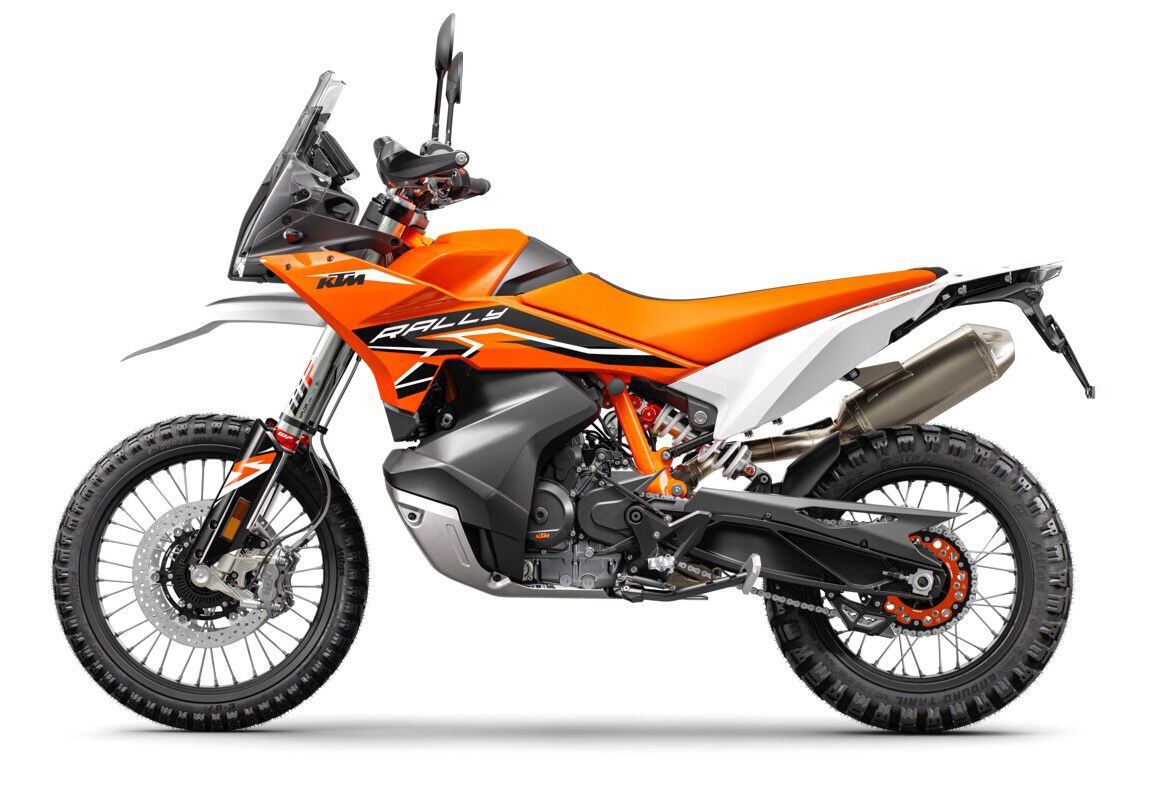
The biggest upgrades come to the bike’s WP Xplor suspension components, both of which now pack Cone Valve internals formerly found only on KTM’s factory racers. (Kiska GmbH/KTM Motorcycles/)At its core, the R Rally is basically an 890 Adventure with rally spec bits thrown at it, comparable to “components [seen] on 2023 Dakar Rally winner Kevin Benavides’ Red Bull KTM Factory Racing 450 Rally bike,” according to KTM.
That translates into an 889cc LC8c parallel-twin engine good for a claimed 105 hp and a peak of 73.76 lb.-ft. of torque at 6,500 rpm, which is unchanged for the 2024 bike. Downstream of that are a combination of components similar to those used by KTM’s factory racing teams, including a lightweight titanium Akrapovič slip-on exhaust, a Supersprox-Stealth rear sprocket, six-speed transmission with slip/assist clutch, and a heavy-duty 21/18 spoked wheel combo with high-strength Excel rims.
Important details like a race-specific rally seat, wider rally footpegs, and additional carbon tank guards, fork guards, and an aluminum guard for the rear master cylinder are sprinkled throughout, but key to the 890′s control and rideability in harsh conditions is its premium suspension system. As with past 890 Adventure R Rally models, the 2024 machines source WP Xplor suspension, but this year, both components employ Cone Valve internals, which previously could only be found on the firm’s factory racebikes. The 2024 R Rally specs a Pro 7548 fork up front combined with a WP Xplor Pro 6746 shock, both of which are fully adjustable and both with 10.6 inches of travel (1.2 inches more than the standard 890 Adventure).
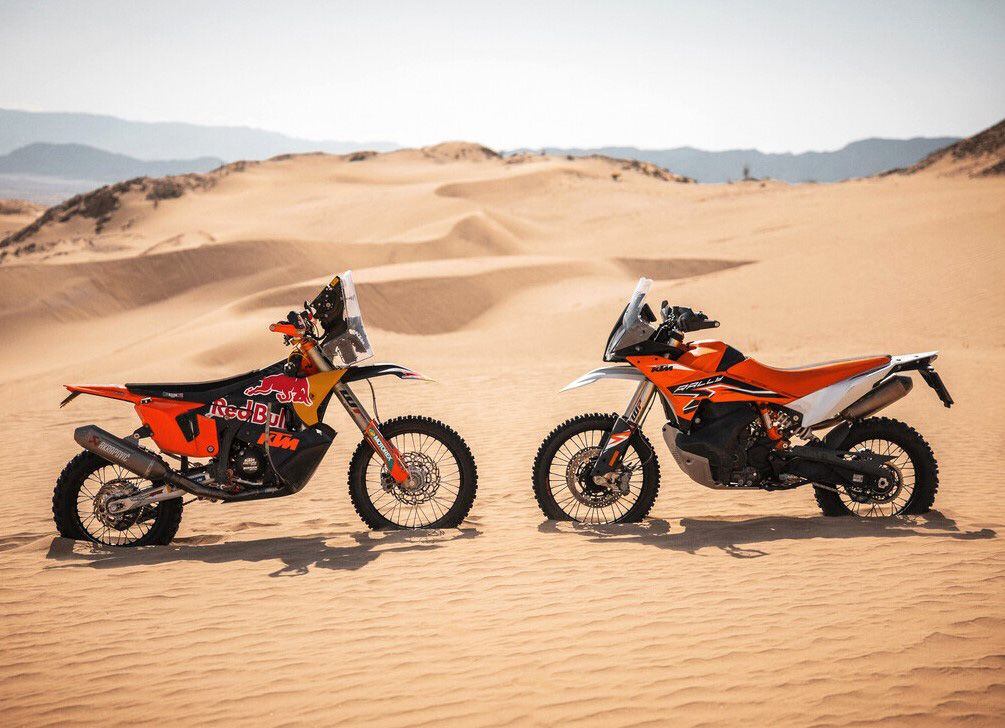
Graphics on the 2024 KTM 890 Adventure R Rally are inspired by the firm’s factory racebikes. (KTM/)On the technology front, the 890 Adventure R Rally packs the lean-sensitive Road and Offroad ABS, traction control, turn-by-turn navigation, and three standard ride modes (Street, Offroad, Rain) we’ve seen before, and which all can be selected via a familiar 5-inch TFT display. KTM’s Tech Pack (included) also gives you cruise control, a quickshifter and Rally mode, while the Connectivity Unit kit also offers additional options when paired to a smartphone with KTM Connect. The new R Rally also sports graphics “inspired” by KTM’s factory race team, so expect to live with lots of orange.
The bike retails for $21,499, but if you’re determined to snag one and you’re not on a waiting list (which you can join on the KTM website), think about making plans to stake out your local KTM dealer come 2024.
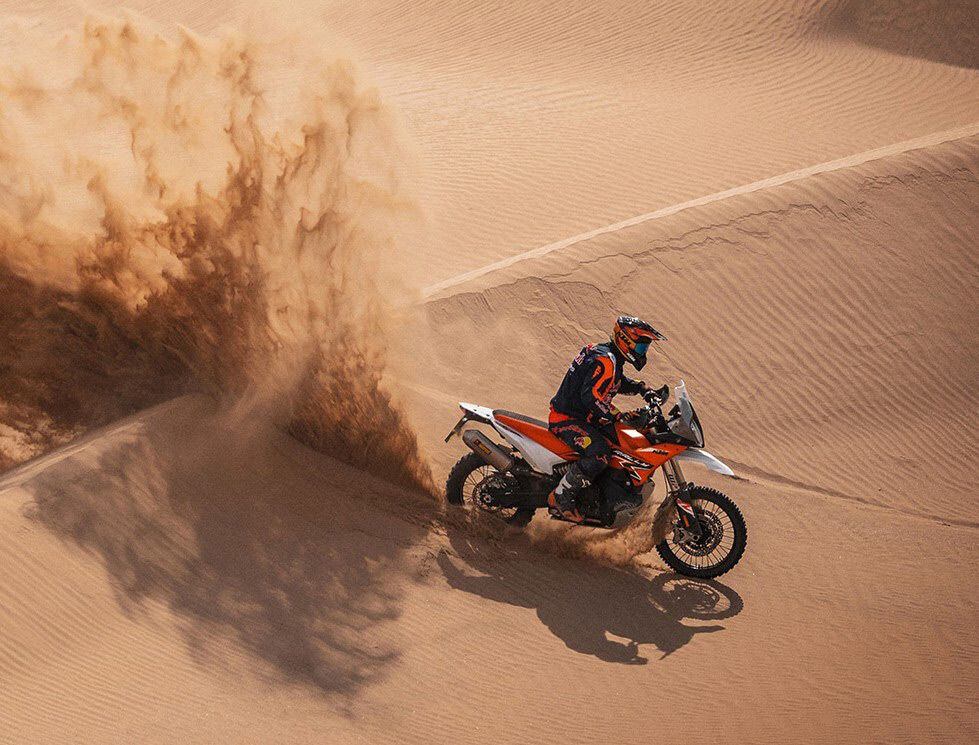
If you can find one, the KTM 890 Adventure R Rally has a US MSRP of $21,499. (KTM/) -
A few more minor changes are to be expected for the 2024 model year of the adventure scooter.
-
Updated for ECE 22.06 P/J Homologation, the Caberg Tourmax X is ready for prime time.
-
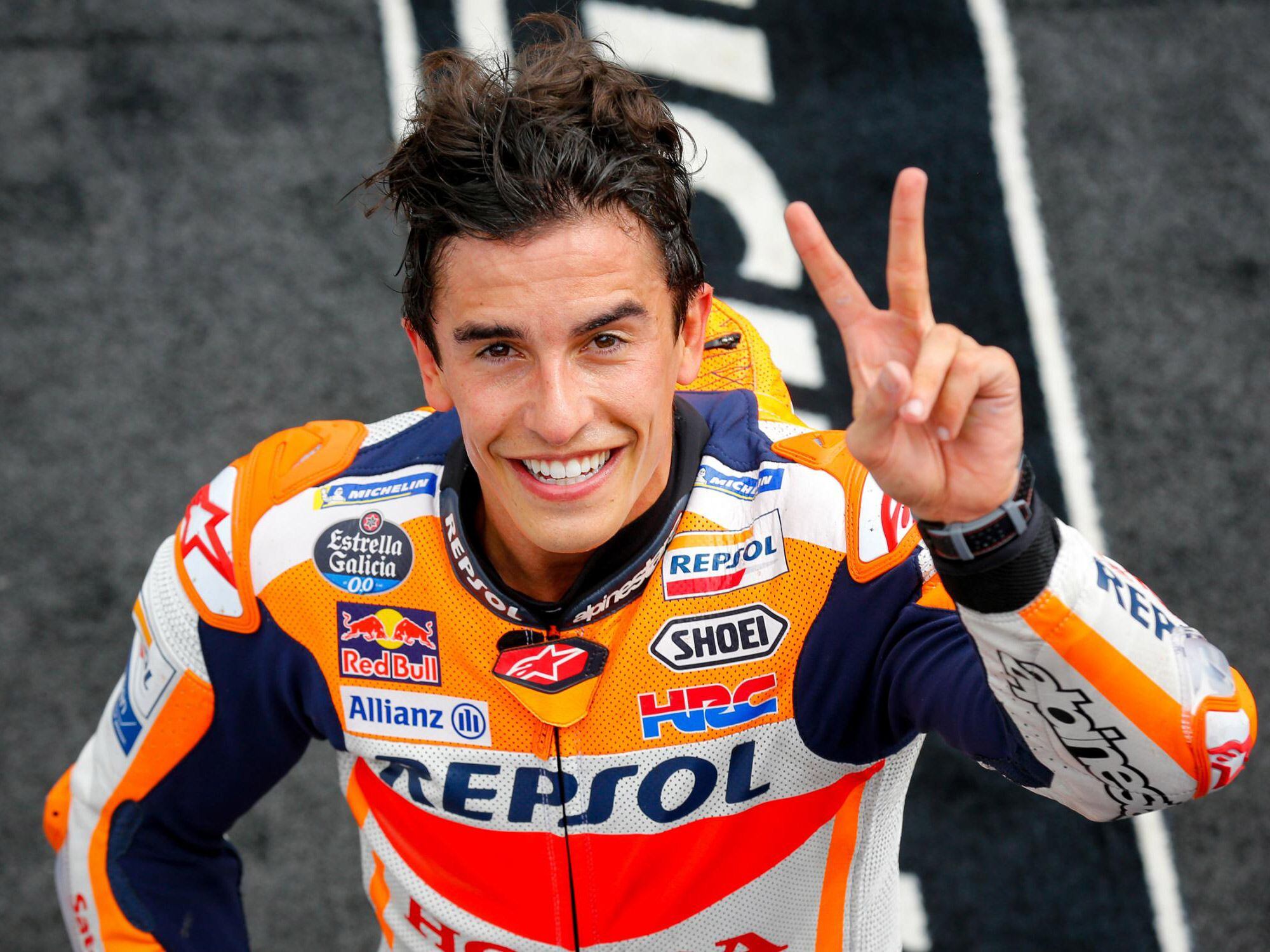
Marc Márquez returned to the top step at the German GP. (MotoGP/)When rumors started circulating in August about eight-time Grand Prix champion Marc Márquez moving to Ducati, it seemed like a surreal but juicy possibility. Would the strongest rider of the last decade move over and ride the best current motorcycle on the MotoGP grid? However, all the factors, like his relationship with Honda and their six MotoGP titles won together, a big salary, and most importantly a contract already in place through 2024, surely makes one think that he would stay put despite the poor results with his underperforming RC213V.
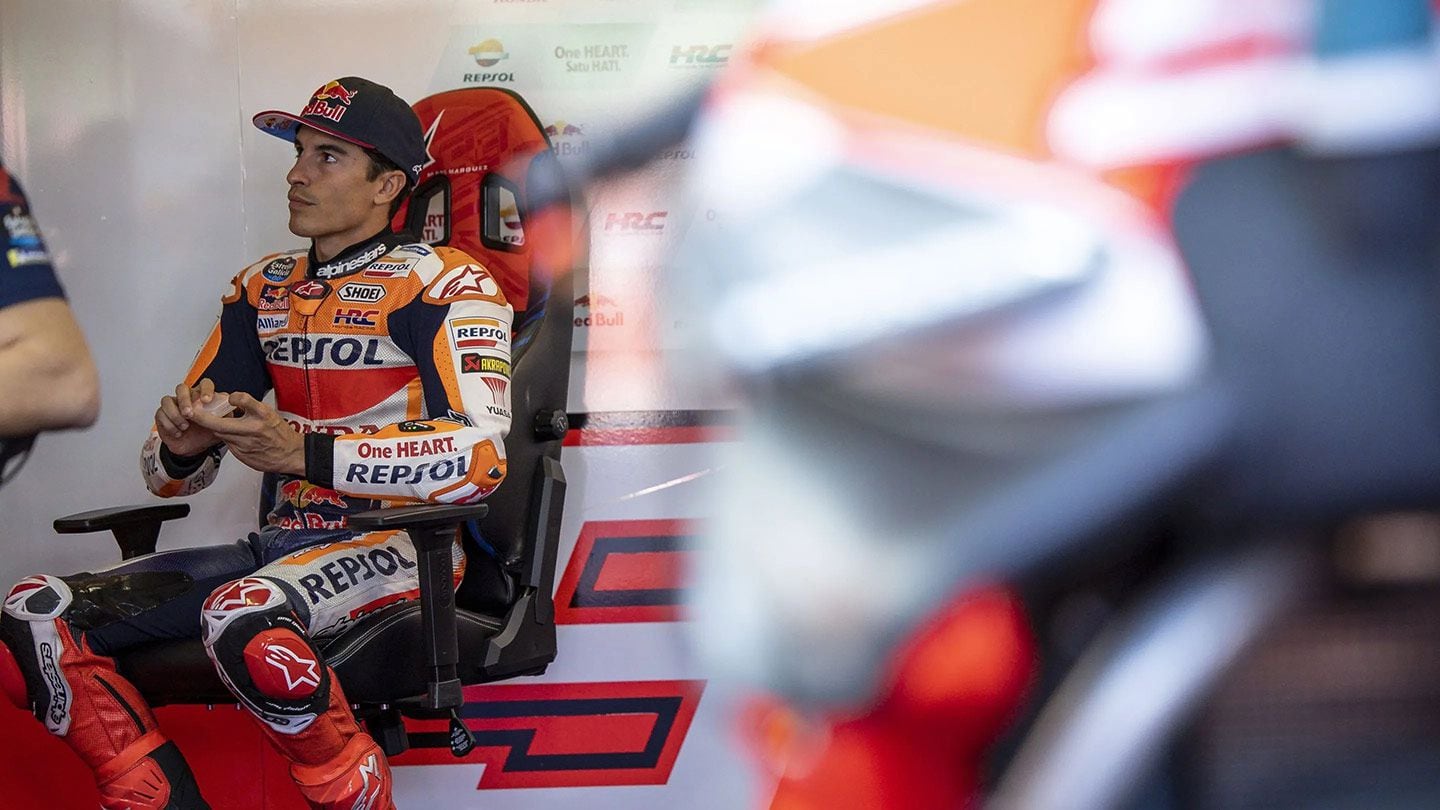
Will Márquez remain in the Repsol Honda box in 2024? (MotoGP/)Surprisingly, however, instead of denying the rumors, Márquez fueled them. In a game similar to the carrot-and-stick analogy, on the one hand he stressed the importance of working together as a team on the development of the new 2024 bike, and on the other he continued to buy himself time for other options to be worked out.
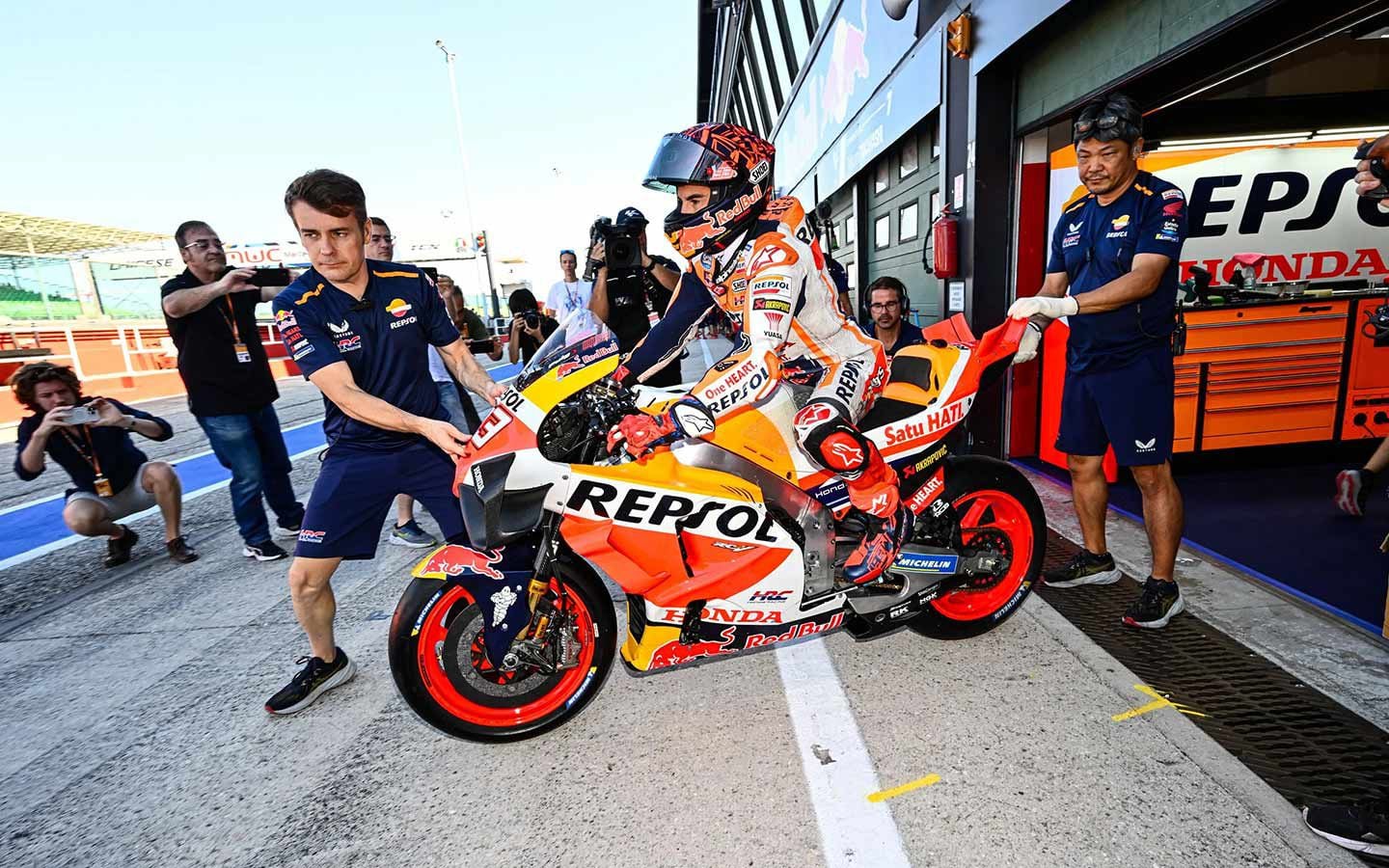
Despite the rumors, Márquez continues to work on solving the issues plaguing the 2023 RC213V. (MotoGP/)After testing the new 2024 development bike on Monday after the Misano race, and making it clear that he was not impressed, the Spaniard stated that he had three options in front of him for 2024 and beyond. He also said he would communicate his decision between the Indian and the Japanese GP. That didn’t happen. So we expected that he would make an announcement at Motegi in favor of staying with Honda.
That hasn’t happened yet either, with Márquez stating: “I will not announce my choice in Motegi, because I will have to be 100 percent focused on the track.”
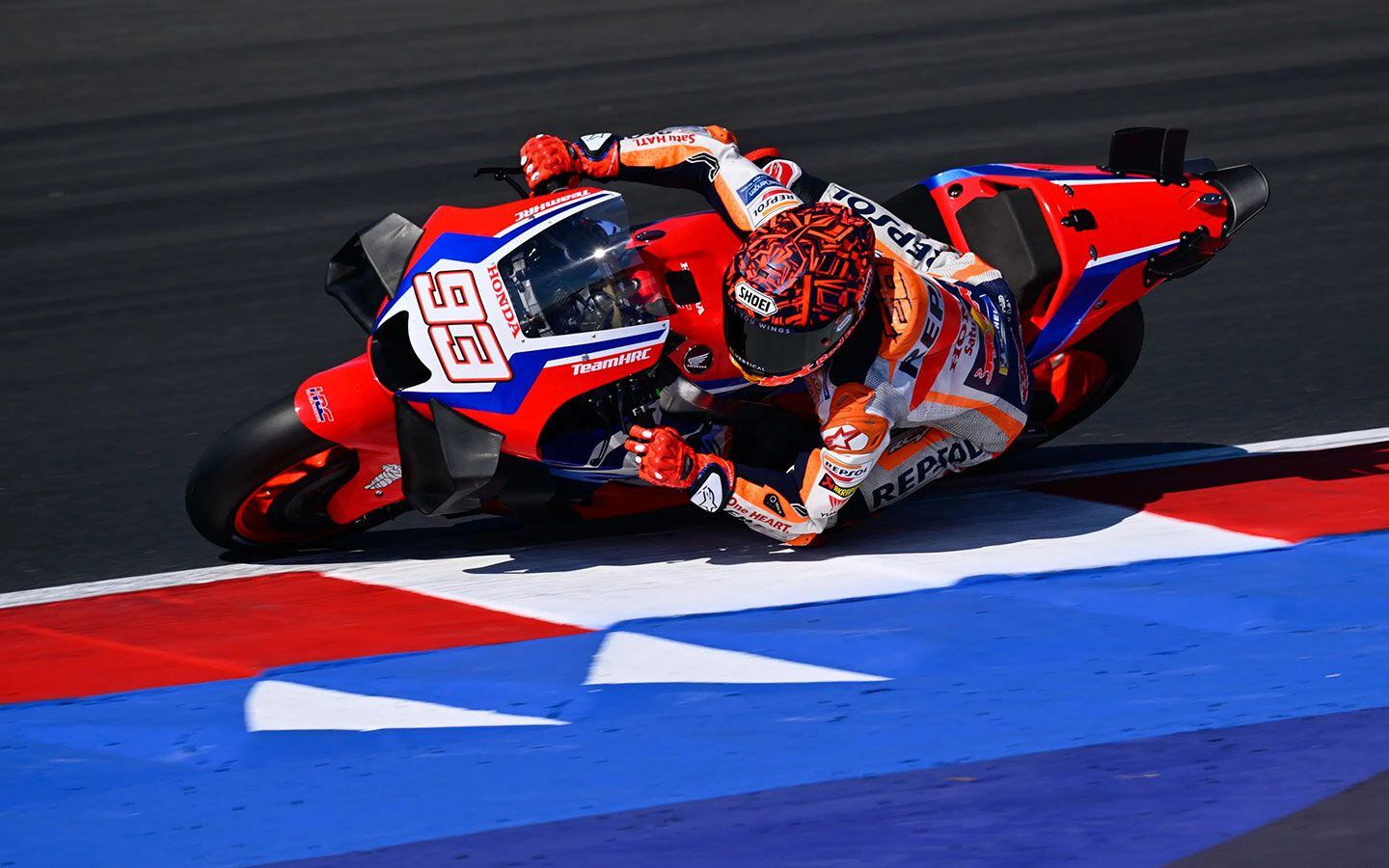
At the postrace Misano MotoGP test, Márquez tried out the 2024 development bike, and stated that it was still far off the pace. (MotoGP/)That statement could mean he’s leaning toward the Gresini Racing team in 2024, where he would join his brother Alex. If he was 100 percent sure and planned to stay at Honda, Motegi would have been the ideal place to put all the rumors aside at Honda’s home Grand Prix at a track that it owns.
If Marc decides to move over to Gresini, he will have to negotiate a way out of his contract with Honda. We don’t actually know what his plans A, B, and C are, but according to the Spanish press, Plan C could be an even more bizarre scenario: Marc would ask to be allowed to transfer to Gresini Racing without penalty in exchange for his return to Honda in 2025. Of course, meanwhile the Japanese manufacturer would have to make a competitive bike.
“In the end, only results count,” Márquez has often reiterated. At the age of 30, he wants to return to winning, no matter what.
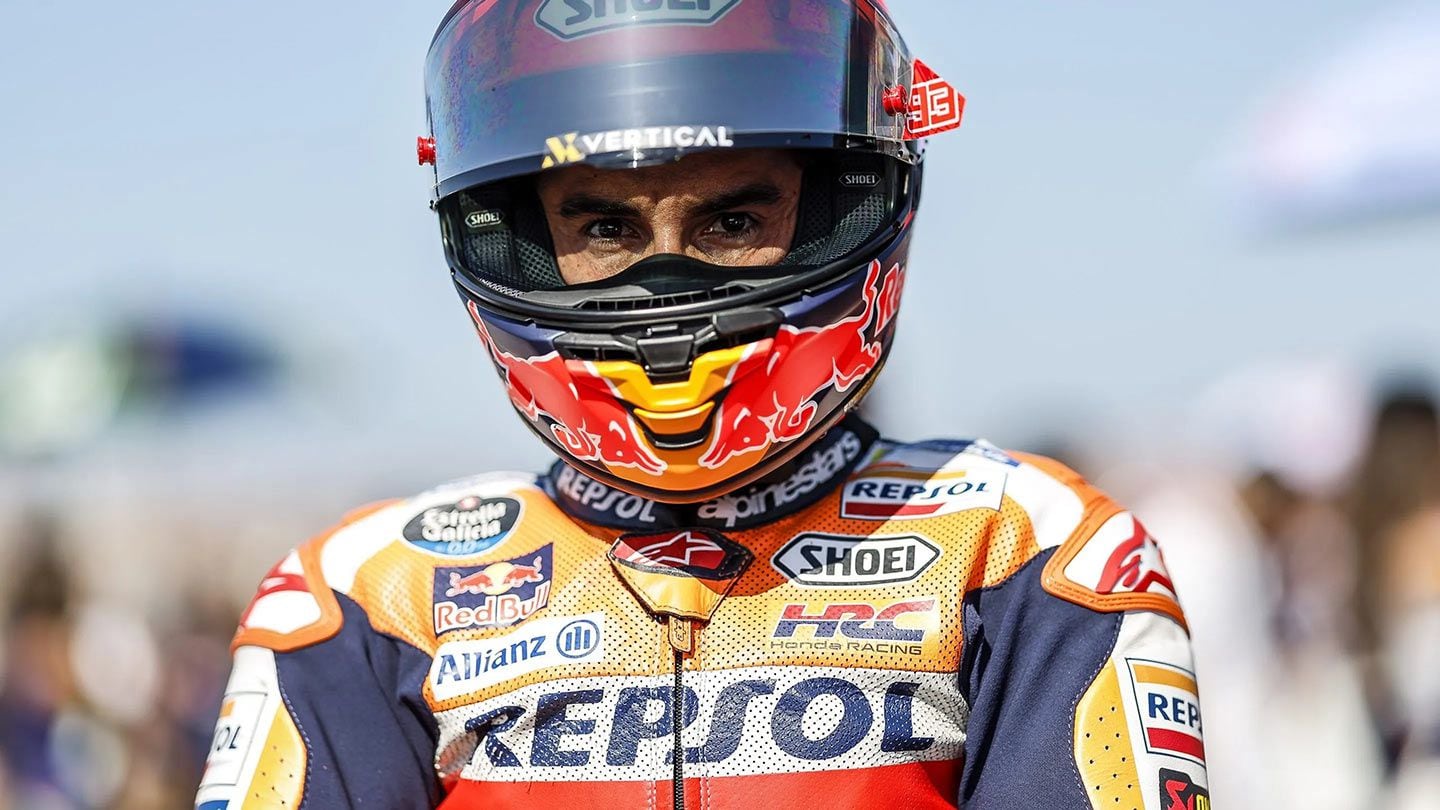
Could Marc make the jump to Ducati and join his brother Alex at Gresini Racing? (MotoGP/)This year you are struggling so much, how do you face the race weekend?
“I am approaching every weekend as usual even if the bike is quite unpredictable from track to track. I arrive with no expectations, trying to understand the level of the bike and from that point, finding [a way] to give the best. In Catalunya, for example, we were one-second slower than the top guys. We finished the race 21 seconds behind the winner. In Misano we did a bit better (13.5 seconds ahead of Joan Mir), but we are still far [off].”
Before the summer break you stated that you didn’t want to take more risks if the bike is not up for the challenge. Will you change your approach in this second part of the season?
“My approach doesn’t change: I keep on working with my guys in the garage, trying to find what is best for me. Then as a rider I do a step behind [back]; I’m taking the risk only when I feel [OK]. In a way I’m fighting against my own mentality. Then my work is to keep the same routine as in 2018 or 2019 in order to be ready when the occasion is there.”
How do you stay motivated when the results are not coming?
“For me there is no meaning to being in MotoGP for so many years if there are not the conditions to fight at least for the top five or top seven positions, because otherwise as a rider I don’t have fun. All athletes enjoy when they are in the front. In this moment I’m still the fastest Honda rider, so I try to keep the motivation in this way, but for the future I really hope to fight for the top five to top seven positions.”
Pecco Bagnaia’s tremendous crash reminded us how dangerous motorsport is. How did you cope with it?
“It’s difficult, especially when you have to go back on track as happened in Barcelona. As we returned to the garage, the TV showed the incident, fortunately we could see that the worst was excluded, but still the images of the crash were replayed too many times [19 times]. When I am at home and I look back at the race, I skip the incident because as a rider, you don’t want to see it.”
What were your first impressions of the new 2024 bike tested at Misano?
“The riding style is quite different, especially the riding position, but the problems are still the same. Considering that it is a new bike, lap by lap we tried to adapt, but the way you look for the lap time is the same as the current machine. We started in one direction, then we changed to fit more my style, it became better, but the lap times are the same.”
What is different on the 2024 Honda?
“The engine is the same, while the chassis and the geometry are new.”
Did you expect more?
“Misano was only the first test. Of course, I was expecting more but if this is the pace of the bike, we are far [away from competitive]. There were many new engineers in the garage. Now they have our comments and they will work on it. There is not so much time as the next test is scheduled in two months in Valencia after the finale.”
Did you speak with Honda about your future and even the possibility to split ways and go to Gresini?
“I didn’t touch this subject with Honda, because I don’t think it is good to do it while we are all working on the same project. Honda is working hard for this season and also for the next one. If you have a contract with a manufacturer, I think the worst thing to do is to threaten them saying you will change brands. I think it’s worth continuing with a constructive mentality. I think the best for the project is to continue united together, to continue working and I think they agree, as they didn’t tell me anything [different] in this respect.”
What about Gresini racing?
“My brother has found his place. It’s a professional team with a familiar atmosphere. It has a long history and for him is ideal, but me and my brother come from different experiences. It’s another story.”
Is there something that Honda could say during the Japanese GP that would convince you to remain for next season?
“In my mind I am quite clear. I never said right or left. I just said I want to find the best solution and I want the best for the project. That is where we are working together because my relationship with Honda is special. We have been many years together. They gave to me a lot of things, I gave to them a lot of things.”
At age 30, what is your target?
“I want to be world champion, and to make it you need a team behind you with the same goal.”
Editor’s note: Honda has been faithful to its rider despite the crashes—too many, but not all his fault—and some bad decisions, like Márquez’s choice to race only 48 hours after a surgery following his 2020 Jerez crash that then put him out of action for the better part of a year.

New Benelli TRK 702 Enjoying Successful Sales In Italy
in Motorbike news
Posted

More than 1,000 units of the new ADV have been sold just a month after its launch.View the full article